Dream Job: Luxury Villa on Croatian Island Looking for Two Home Testers
March 15th, 2022 - Luxury home tester sure sounds like one of the better jobs in the tourism industry
Many employers in the service industry are currently recruiting staff for the upcoming tourist season, but it’s not every day that you come across a job listing as captivating as one that was posted on a local job search site this week.
Namely, owners of a beachfront luxury villa on Korčula island are looking for two people who will stay at the property for a week and test all the amenities to ensure everything is in working order and ready to welcome the first guests of the season, reports Morski.hr.
‘Our villa has numerous facilities available for guests to use during their stay, so we posted the listing in question to ensure we’re completely ready for the new season’, said the villa owners.
Dream job? Sure sounds like it - too bad it’ll only last a week. The fun stuff that needs testing includes the following: kayaks, bicycles, scooters, table tennis, foosball, billiard table, gym, PS4, trampoline, seaside hammock, sunset swings and deckchairs.
The job also involves inspecting the cleanliness of the villa, testing the full functionality of the kitchen (all the kitchen appliances), inspecting the bedrooms (mattresses, A/C, closets), the bathroom, living room, laundry room and the garden.
Employees staying at the villa are also expected to inspect the tidiness of the adjacent beach, evaluate the host (the person who welcomes guests into the villa) and review Villa Gabriela.
According to the listing, ideal candidates would be in good shape, athletic, communicative, and have some experience making videos, as the gig involves filming daily video diaries while testing the facilities.
The original job listing is available on Pick Jobs (in Croatian).
Maksimilijan Vanka Gallery to Reopen in the Artist's Villa in Korčula
March 14th, 2022 - The entire Memorial Collection of Maksimilijan Vanka will be restored and moved from Zagreb back into its home on Korčula
As announced by Korčula Mayor Nika Silić Maroević, the lovely villa in Korčula town that was once owned by Croatian artist Maksimilijan Vanka is finally to be restored.
In 1935, Vanka moved to the US where he's best remembered for painting the Millvale Murals in the St. Nicholas Croatian Catholic Church. The renowned painter and sculptor used to spend summers on Korčula island, where he founded an art colony and socialised with his fellow artists.
His former holiday home is known as one of the most beautiful villas in town, located near the monastery of St. Nicholas, reports Dubrovački vjesnik.
After Vanka’s death in 1963, his widow Margaret Stetten Vanka and daughter Peggy Vanka Brasko donated two houses in Korčula to the Croatian Academy of Sciences and Arts (HAZU), along with 47 of Vanka’s artworks created in Korčula and the US.
The other, smaller villa donated to the HAZU by the Vanka family had a different fate. In the early 90s, it was transferred into private ownership and has been sold since.
The bigger villa, now to be restored, used to house the Memorial Collection of Maksimilijan Vanka. Due to poor conditions in the villa, the art collection was moved to Zagreb and is currently kept at the Strossmayer Gallery of Old Masters.
Two years ago, it was announced that the entire collection will be restored, with funds secured by the Society of Maksilimijan Vanka’s Friends from the US. Once the restoration is completed, the artworks should be moved back to Korčula, but it’s not yet known when this is supposed to take place.
Renovation of the villa should have started two years ago when the president of the Croatian Academy of Sciences and Arts (HAZU) signed a cooperation agreement with the then Mayor of Korčula, providing for the renovation, reconstruction and adaptation of Villa Vanka and the restoration and return of Vanka's art collection to Korčula.
Unfortunately, the global pandemic began shortly after the agreement was signed, so the plans had to be put on hold for a while.
‘In the meantime, potential investors expressed certain interests that the HAZU approved as well, so we will amend the existing agreement a bit in order to further define certain details’, announced Mayor Silić Maroević.
Amendments to the agreement mainly relate to the catering business conducted in the villa, which proved not to be a good decision in the past, according to the mayor. Ten years ago, the gallery was renovated, but not in a dignified manner, she pointed out, and part of the gallery was leased by a catering business, which isn’t acceptable to the City of Korčula or the HAZU.
Villa Vanka will now be renovated and used exclusively as a gallery, the only exception being the lower part of the warehouse which might eventually be leased out for service activities. This will be defined by the new agreement, said Mayor Silić Maroević.
Although Korčula boasts incredible cultural heritage and numerous acclaimed artists, the town sorely lacks gallery spaces. This is yet another reason why everyone’s looking forward to the renovation of Villa Vanka, with the new gallery seen as a crucial venue for the cultural life in Korčula.
Zagreb to Dubrovnik: the Ultimate 10-day Road Trip Itinerary
21 February 2022 - It’s never the wrong time to start planning the perfect getaway to the paradise that is Croatia. We decided to give you a hand in planning the perfect 10-day road trip from Zagreb to Dubrovnik (plus some bonus island time!) that showcases the best the country has to offer.
The best way to discover Croatia is by car, giving you the freedom to go off the beaten path and chart your own adventure around the country, all the way from Zagreb to Dubrovnik.
Before we jump into it, do be aware that most car rentals in Croatia are manual transmissions! Automatic cars are available for rent, though mostly by larger rental companies like Sixt, and are more expensive.
If you’re not a confident driver, no need to worry, there are plenty of private bus companies that run daily trips to most cities and tourist attractions during the high season (June - September). In larger cities such as Zagreb and Split, bus schedules are also available online. Transfers between major ports and the islands are also regularly serviced by ferries and catamarans.
Day 1: Zagreb
Welcome to Zagreb, the capital and largest city of Croatia! Nicknamed the city of museums, Zagreb is home to over a dozen award-winning museums such as the Archeological Museum, with over 450,000 artifacts and monuments.
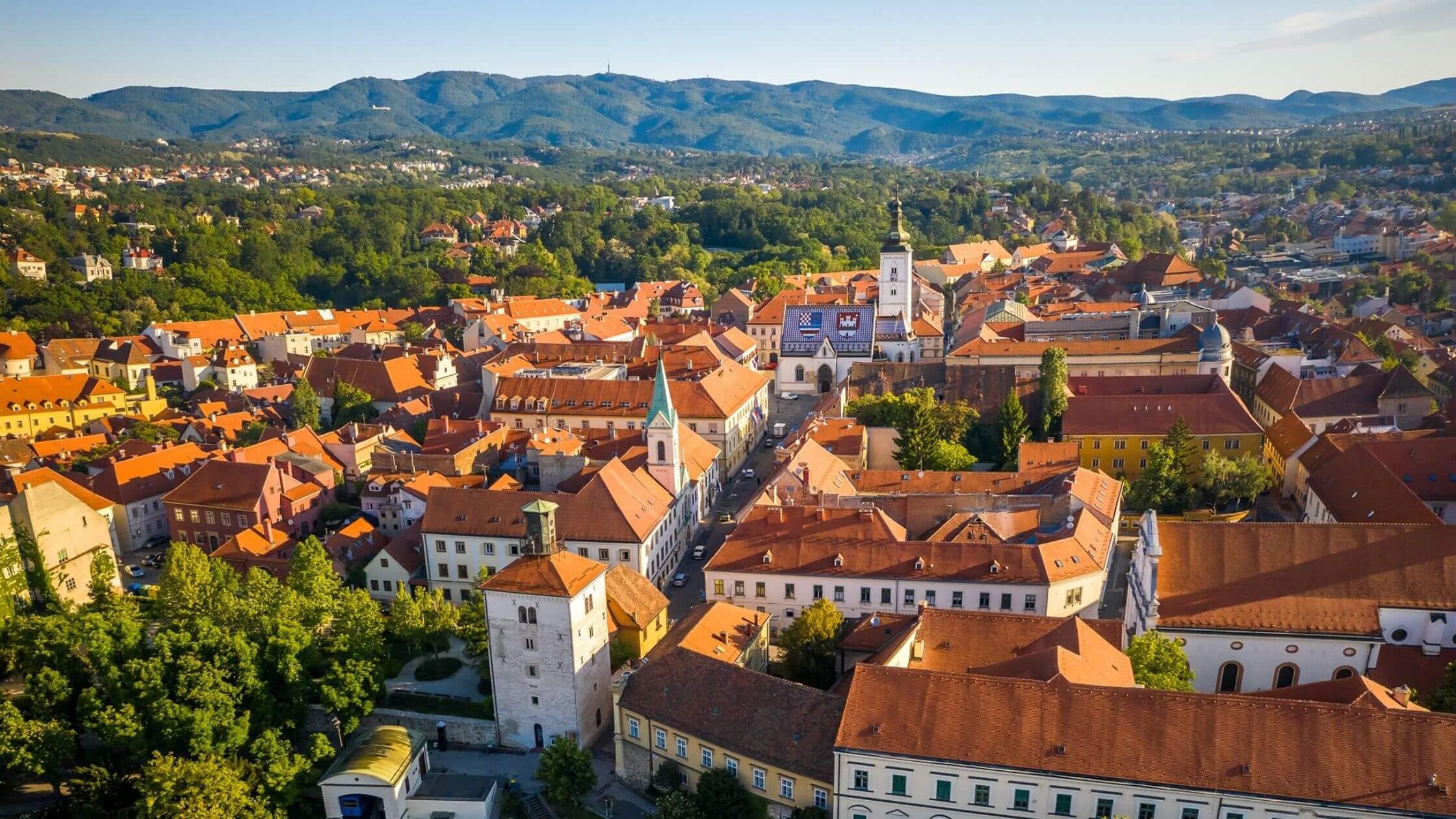
The gorgeous buildings of Upper Town in Zagreb. Visit Zagreb/Facebook.
Cultural landmarks of the city include Ban Jelačić Square which has existed since the 17th century, the Zagreb Cathedral, or the magnificent Croatian National Theater whose unveiling ceremony was attended by Austro-Hungarian Emperor Franz Joseph I. So, make sure you squeeze in some time for a walking tour to absorb the sights of Zagreb’s Old Town.
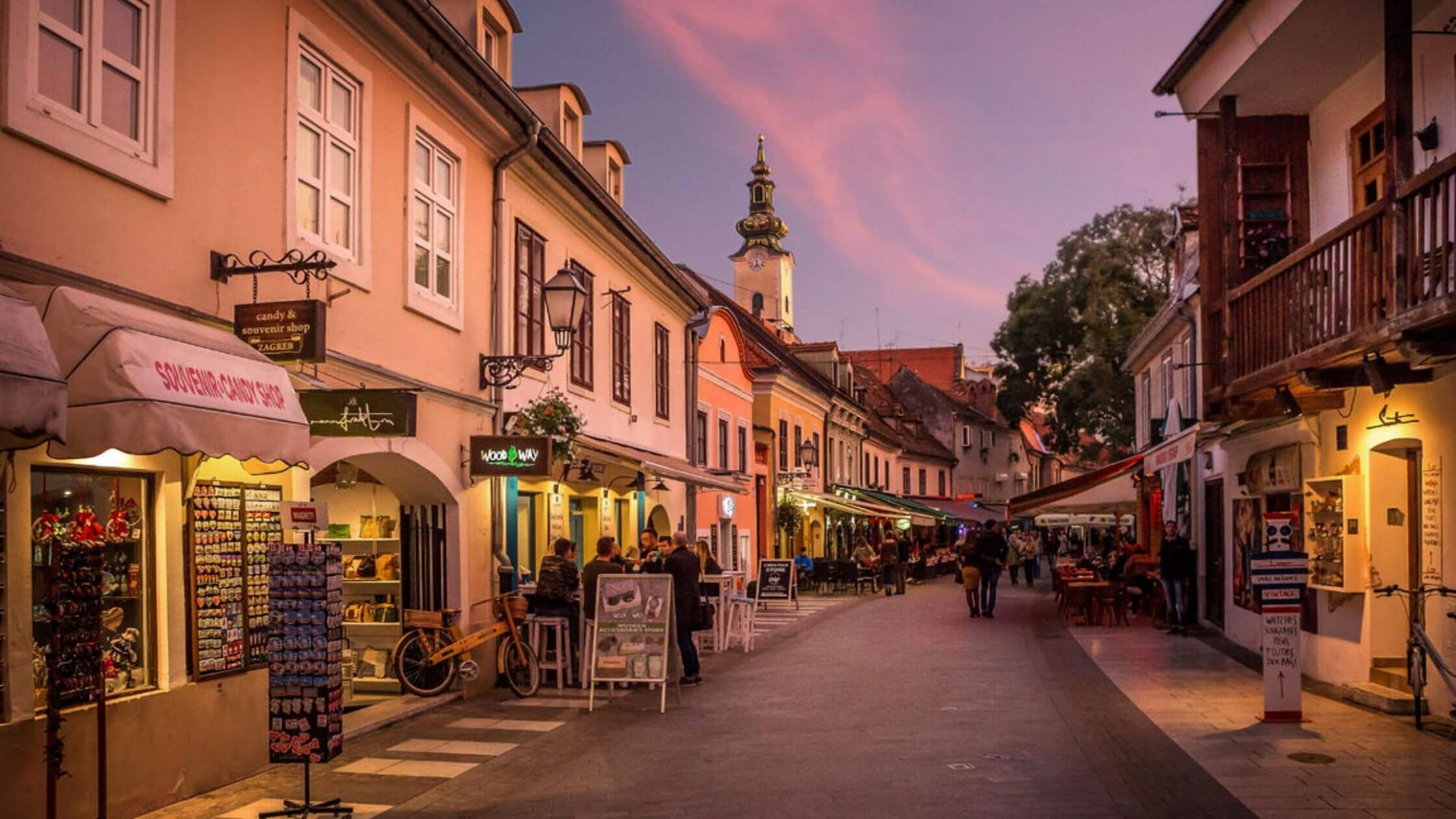
Evenings on Tkalčićeva Street, Zagreb. Visit Zagreb/Facebook.
Hungry? Head to Dolac market, Zagreb's main open-air farmers market to pick up some fresh, seasonal produce and souvenirs. You can also choose to end your day with a tasty meal and local wine from any of the excellent restaurants, bars, and cafes along Tkalčićeva Street.
Day 2: Rovinj
After a bustling day in Zagreb, the enchanting city of Rovinj is a splendid change of pace. Perfectly situated on the Istrian peninsula, the city boasts a rich heritage, from being settled by Venetian tribes, to becoming part of the Byzantine and Frankish Empires, all reflected in the diversity of the city’s architecture, art, and culture.
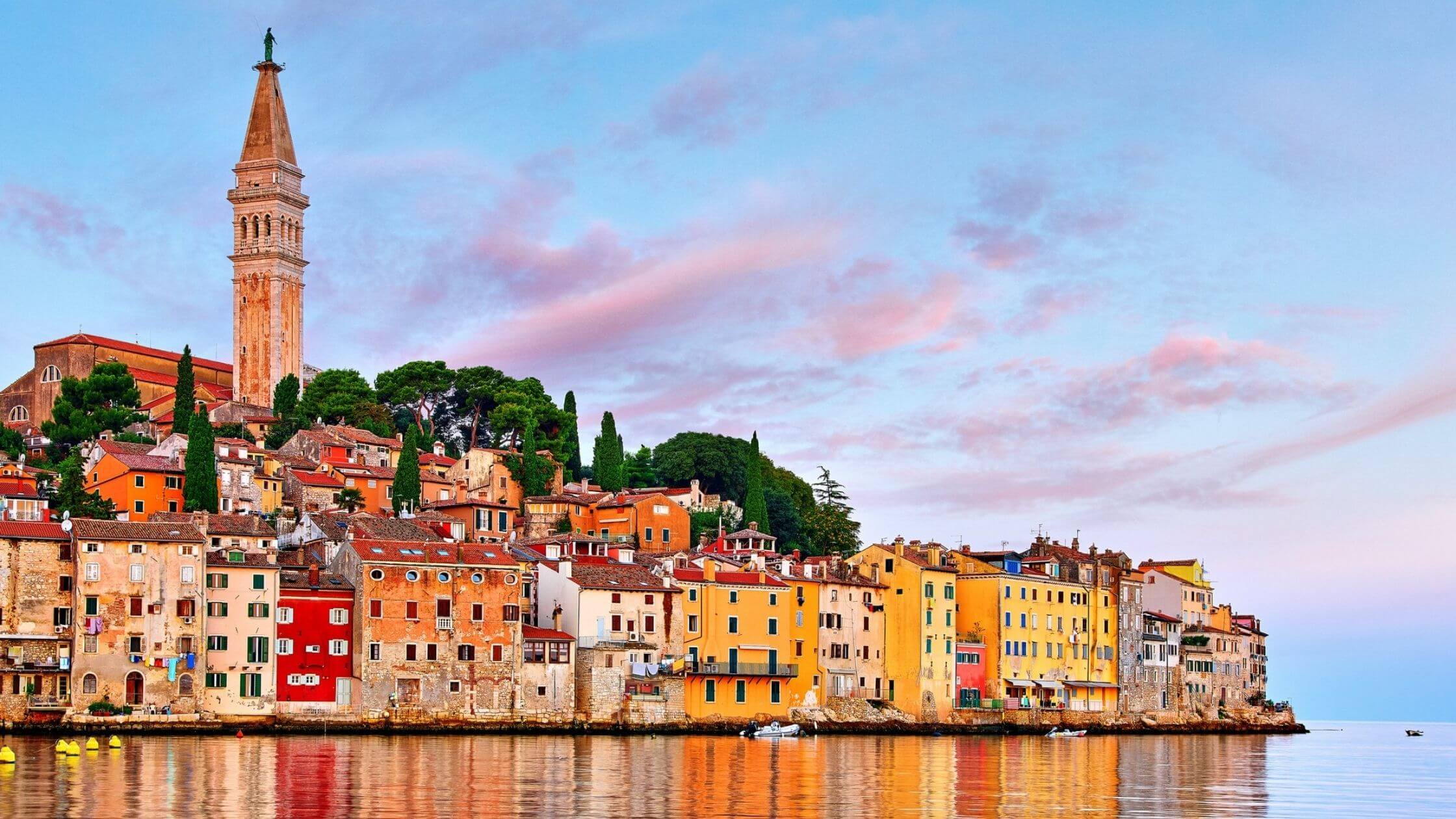
This stunning setting has been a popular film setting for movies such as "The Hitman's Wife's Bodyguard". Rovinj Tourist Board/Facebook.
Stroll along the beautiful cobbled streets and narrow alleys of Rovinj Old Town and make your way towards St. Euphemia Cathedral. Along the way, you should pass by Grisia Street, lined with souvenir stalls and galleries with the most unique pieces to add to your collection.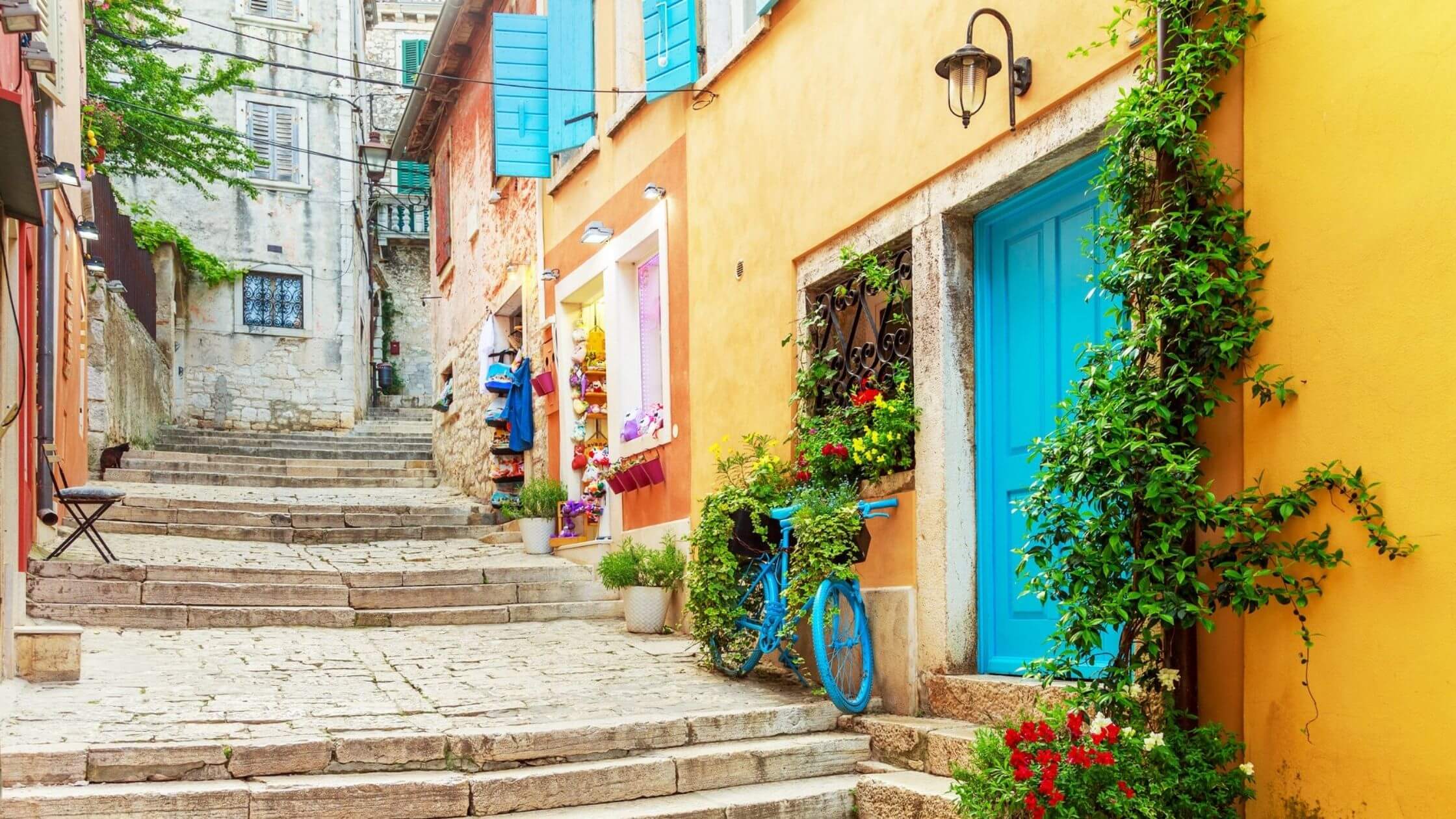
The charming, picturesque streets of Rovinj's Old Town. Rovinj Tourist Board/Facebook.
If you have time to spare, take a day trip to Sveta Katarina, a small picturesque island that’s a mere 10-minute water taxi ride from the pier. Spend the afternoon taking a dip in the aquamarine waters of the bay, or hike on one of the numerous trails dotted around the island, or both!
Alternatively, sit back and relax on some of the most beautiful beaches in Istria such as Amarin, Borik, or Valdaliso Beach.
Day 3: Pula
Before leaving the Istrian Coast, make Pula the next stop on your road trip. Serving as the capital of Istria, Pula was the main military port for the Austro-Hungarian Monarchy at the height of its military glory. Today, remnants of these times are reflected in the city’s breathtaking landscape.
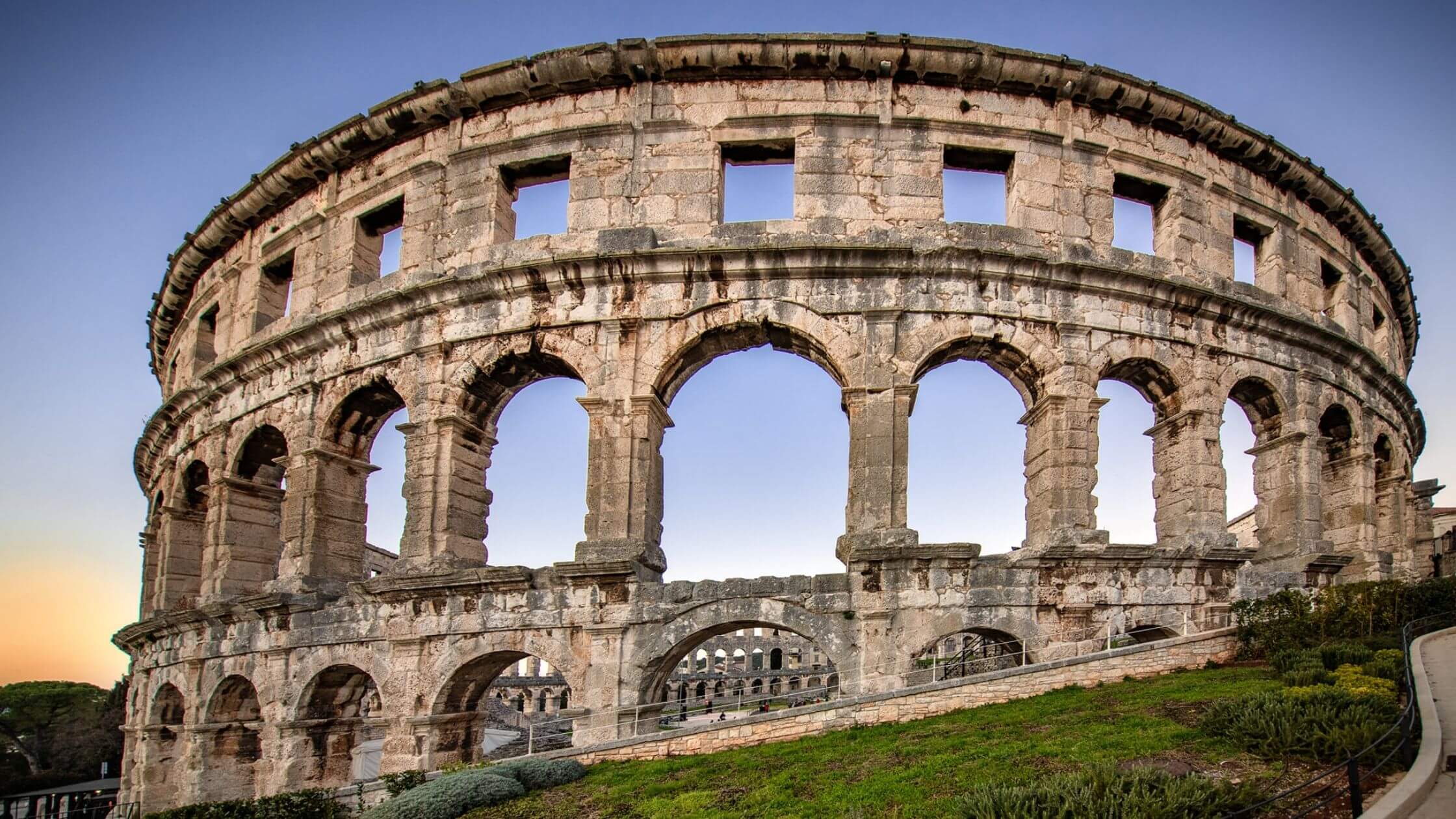
The Pula Arena frequently hosts concerts and festivals throughout the year. Pula Plus/Facebook.
The famous Pula Arena, one of the most well preserved Roman amphitheaters in the world, is a must-see! Another not to be missed landmark is the Temple of Augustus, a monument dedicated to the first Roman emperor in honor of his rule.
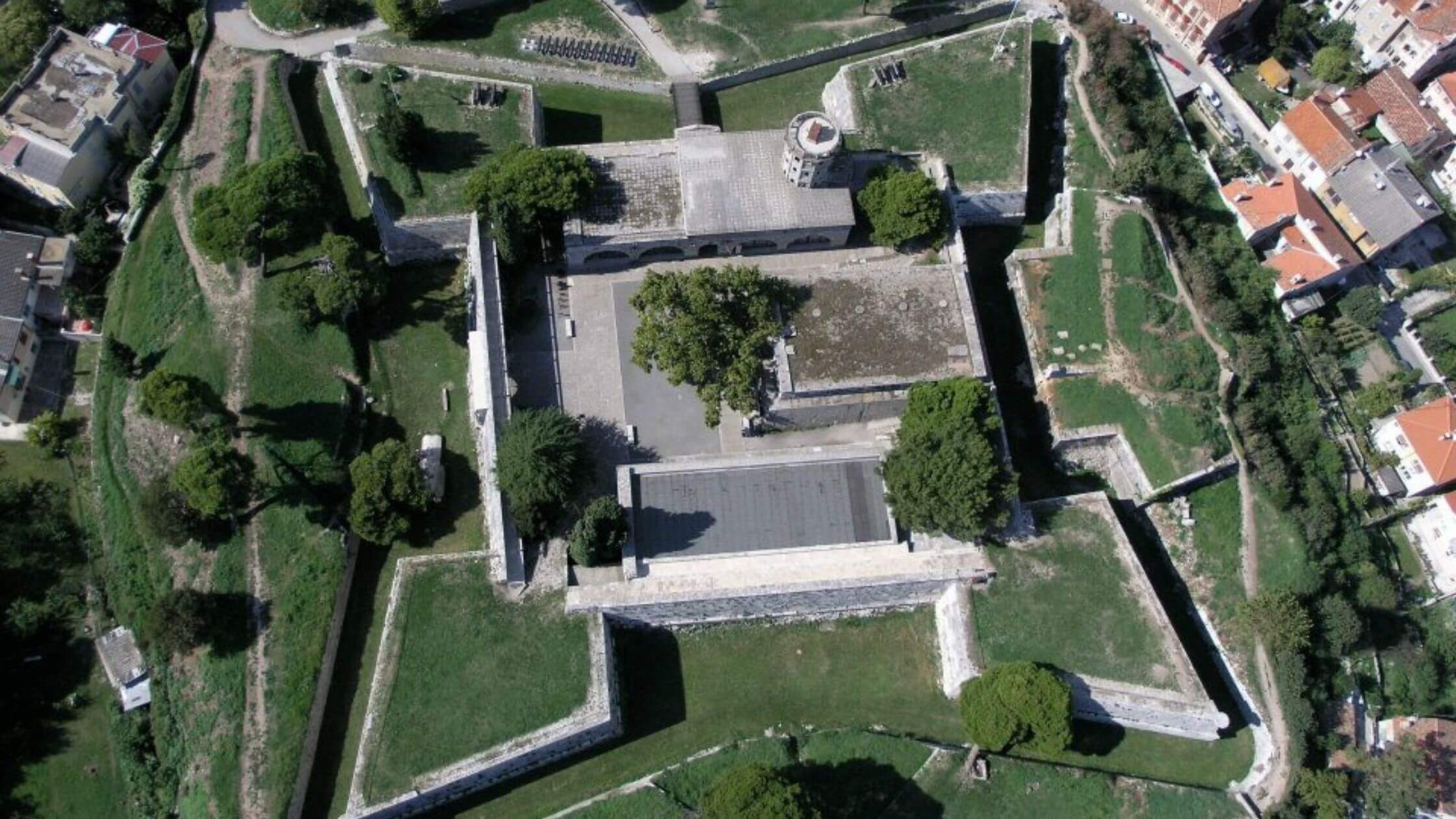
The unique shape of Fort Puna Christo. Pula Plus/Facebook.
Also check out the impressive Fort Punta Christo, which includes an underground section to explore and a well-stocked rooftop bar for refreshments after. You can also enjoy magnificent 360-degree views of Pula from the Venetian Fortress (Kaštel) which also houses the Historical and Maritime Museum of Istria.
Day 4: Plitvice National Park
Although Croatia boasts some of the best coastlines in the world, Plitvice Lakes National Park consistently appears in the top must-see places to visit in Croatia, and for good reason! This UNESCO World Heritage Site holds the title as the oldest and largest national park in Croatia, famous for its gorgeous turquoise lakes. Well worth the detour inland.
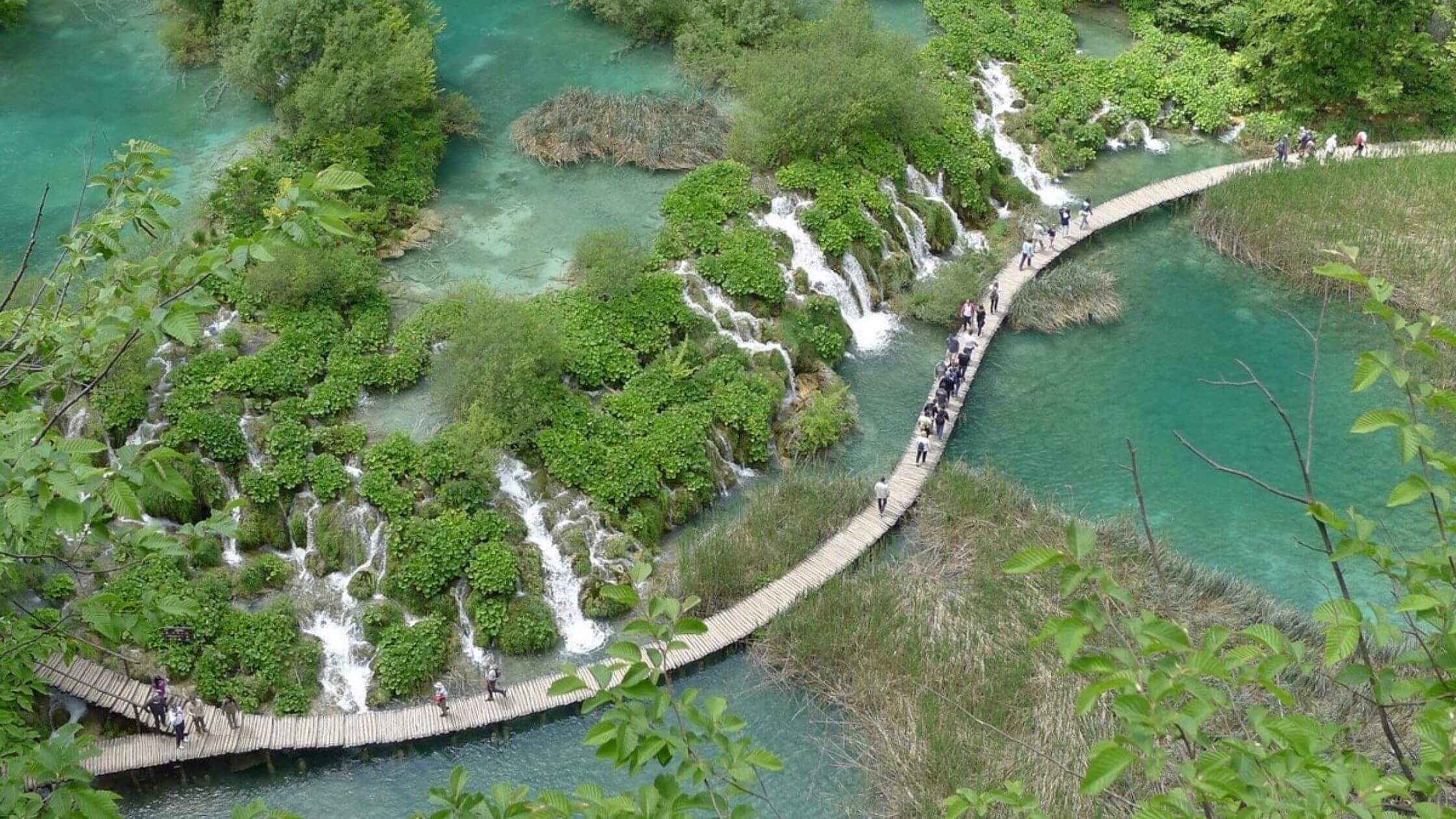 The main walkway of Plitvice Lakes National Park. Plitvice Lakes National Park/Facebook.
The main walkway of Plitvice Lakes National Park. Plitvice Lakes National Park/Facebook.
Be aware that the park can get very crowded during the season! To avoid this, just be prepared to visit early (7-8am), or better still, stop by during off-peak seasons where the park transforms into the perfect winter wonderland.
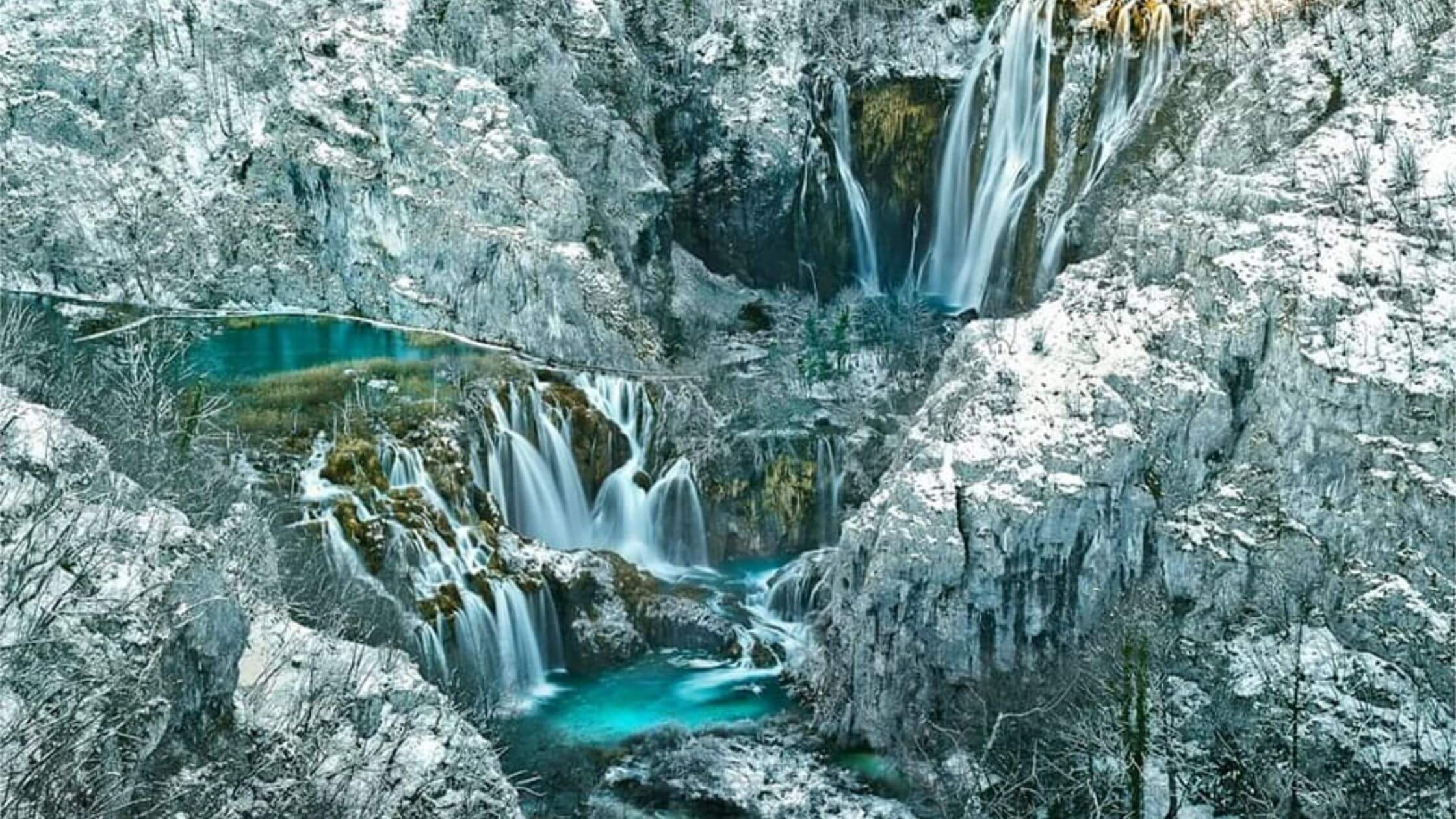
Plitvice Lakes National Park/Facebook.
Day 5: Zadar
After a day in the lush forests, take a scenic drive back to the Dalmatian coast and spend a day in the charming city of Zadar, the oldest continuously inhabited Croatian city. Today, cozy cafes and art galleries are seamlessly woven into remains from the times of Julius Caesar and Emperor Augustus.
Enjoy a relaxing stroll through Old Town and admire the historical architecture including the Church of St. Donatus, the Landward Gate, the Cathedral of St. Anastasia, and the Roman Forum.
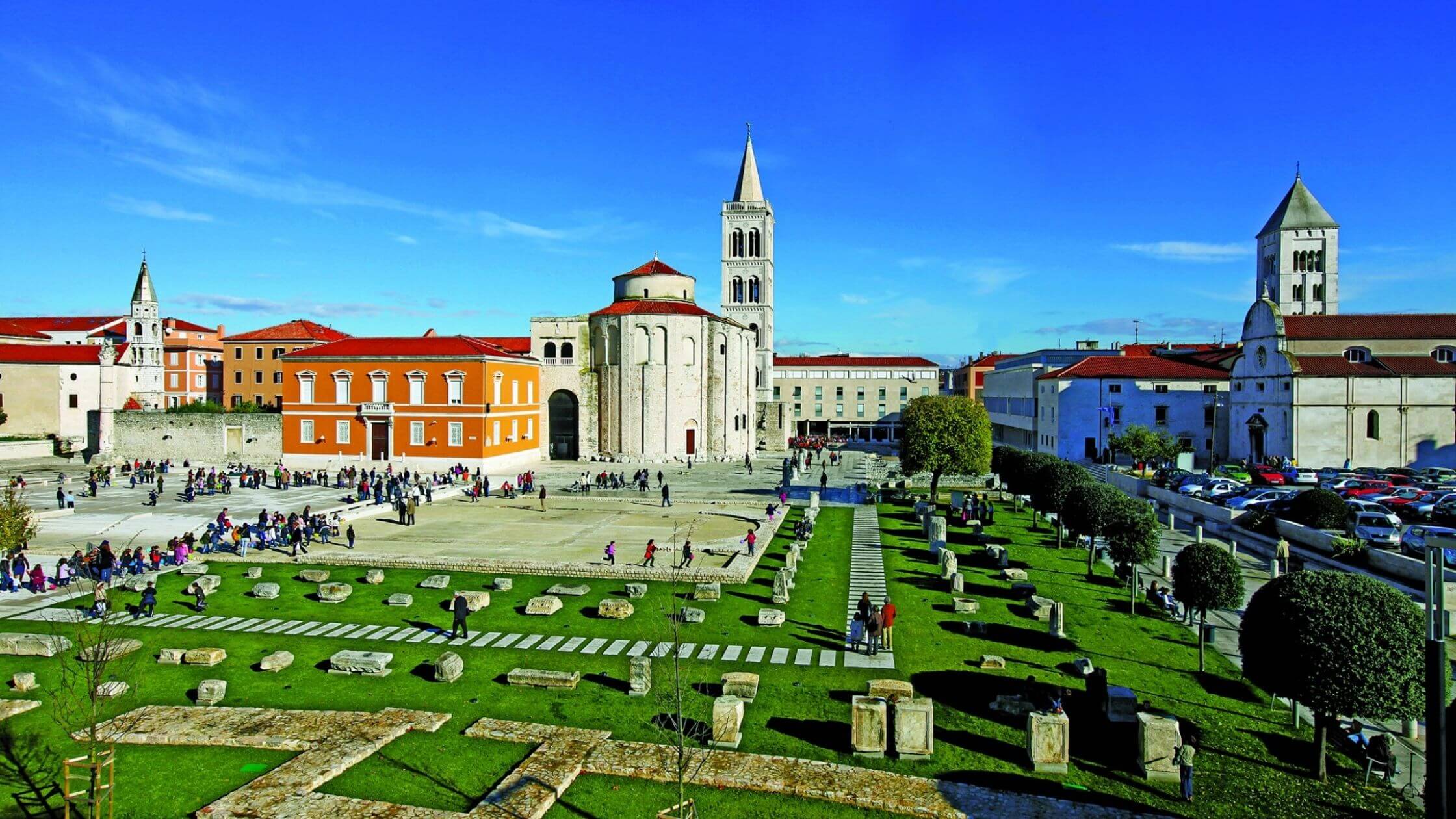
Ruins in the Old Town of Zadar. Zadar Region/Facebook
Along the way, catch the famous Sea Organ, and a sunset so beautiful, it even captivated Alfred Hitchcock! Just after sunset, take in the light show at the Sun Salutation, an installation created by Nikola Bašić, the same artist who designed the sea organ.
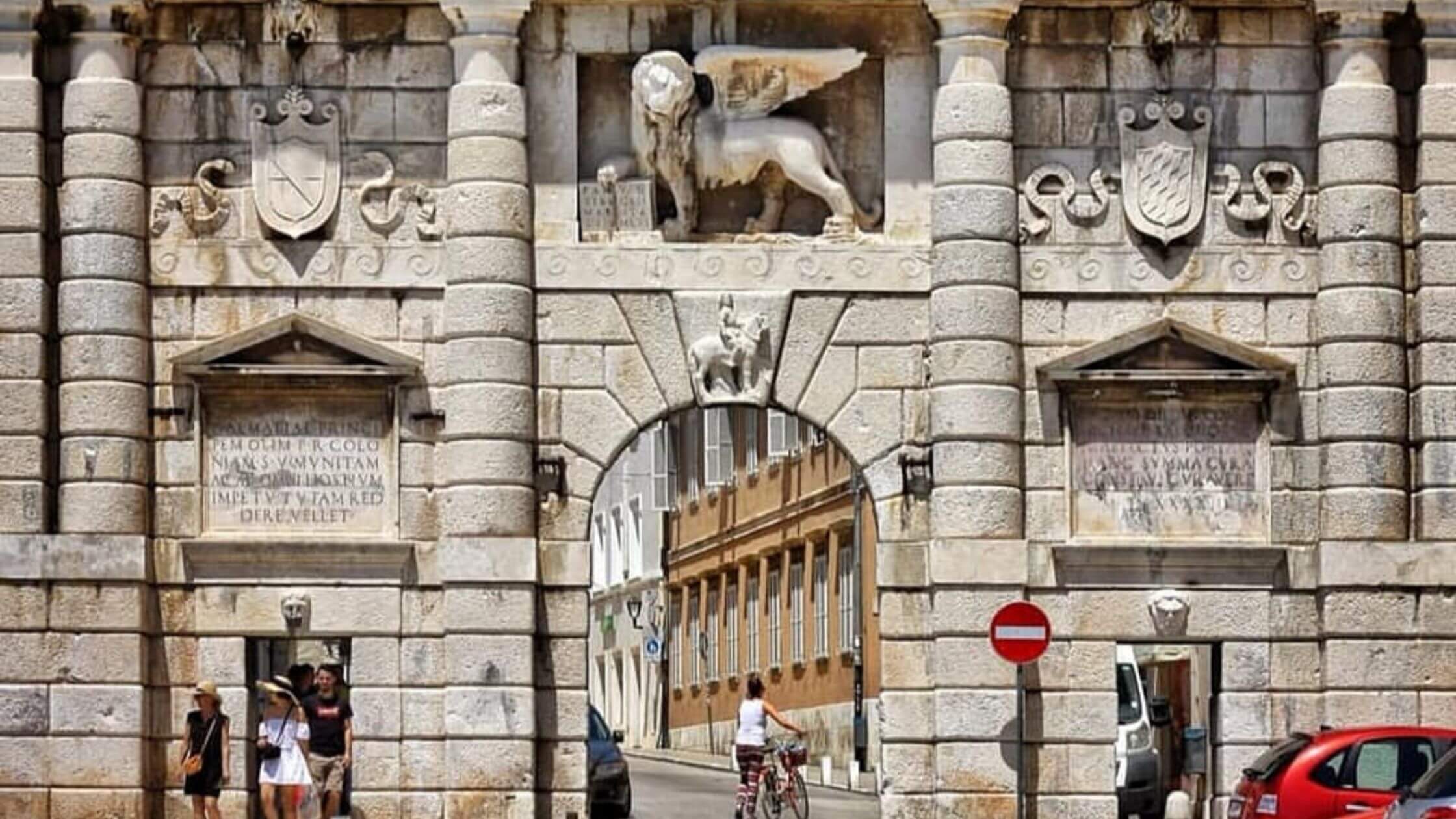
The Landward Gate, Zadar. Zadar Region/Facebook
If you have some time in between, head to Pag Island to try some of the famous Paski Cheese or to Nin, home to Queen’s Beach, the longest sandy beach in Croatia. Other gorgeous beaches along the coast of Zadar include Kolovare and Borik.
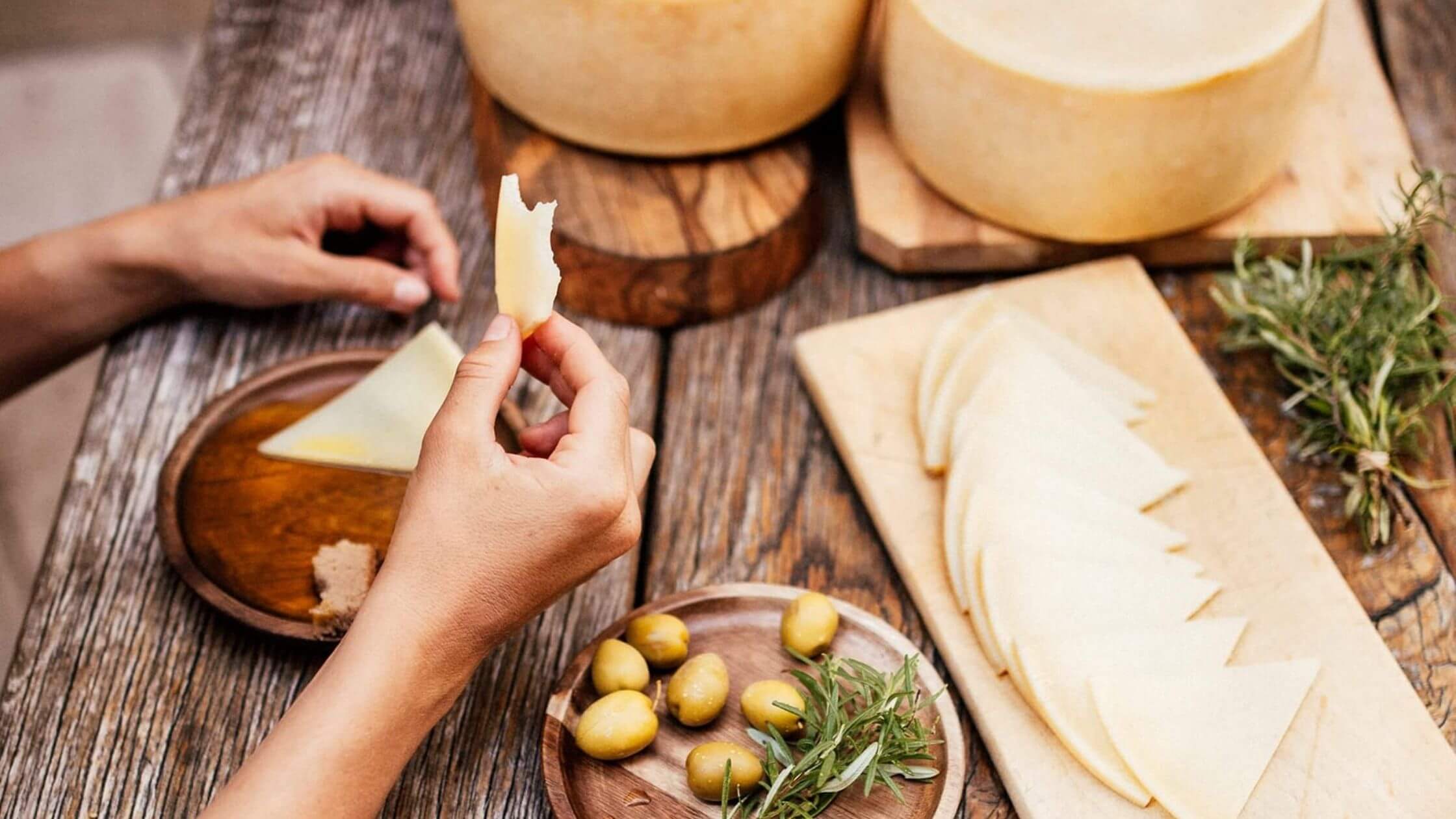
Award-winning sheep's cheese from Pag Island. Pag Tourist Board/Facebook.
Day 6: Split
Welcome to Split, the largest city in Dalmatia, and second-largest in all of Croatia. The city was founded as the Greek colony of Aspálathos between the 3rd and 2nd century BC.
It was later where Diocletian's Palace was built for the Roman emperor in AD 305. The palace also houses the Peristil, or the main square, another great place to enjoy some coffee and people-watch in addition to the Riva promenade.
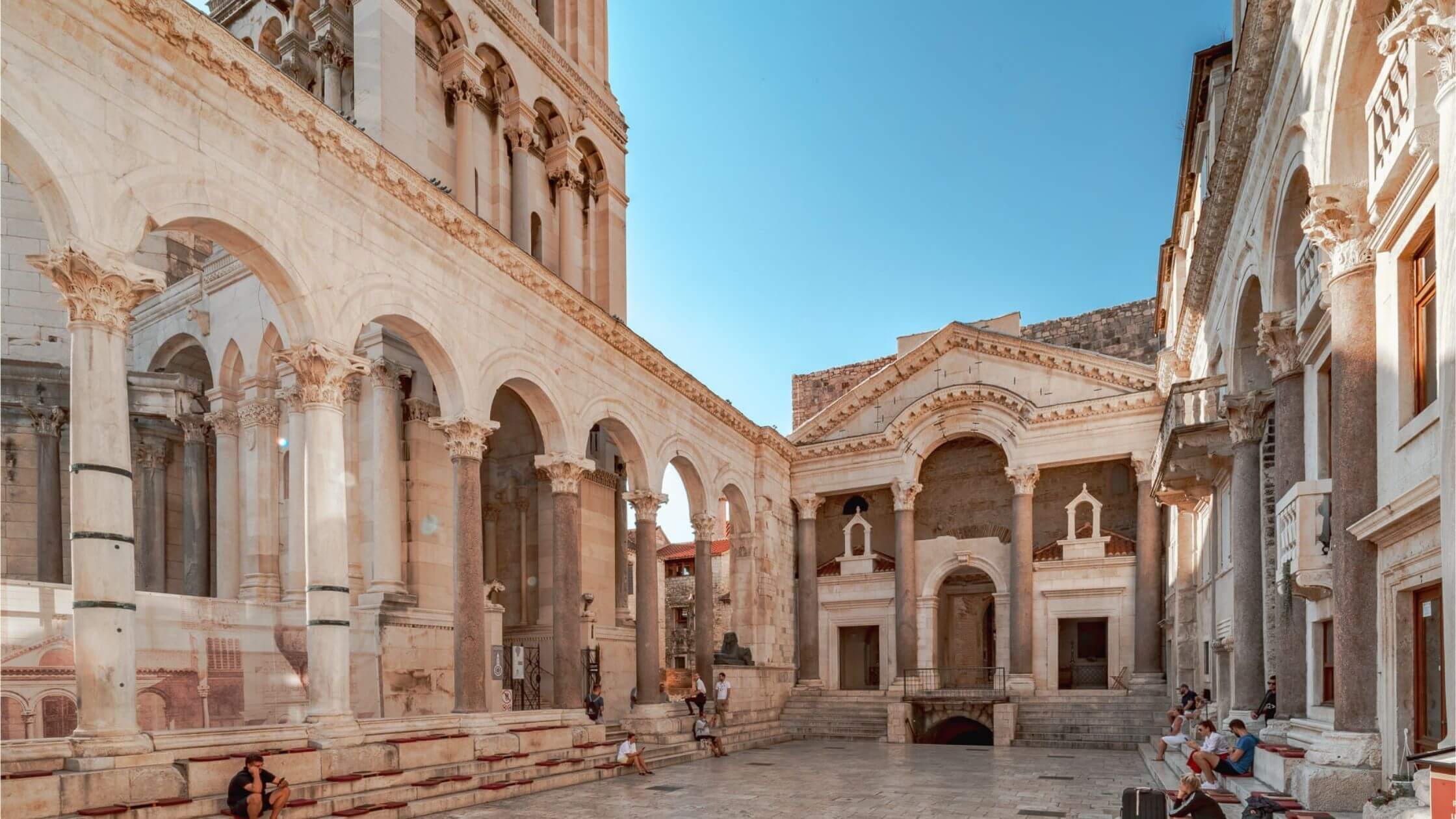
Enjoy a drink inside the walls of the Diocletian's Palace, Split. Visit Split/Facebook
While exploring the Old Town, stop by the Green Market, the largest farmer’s market in Split, to pick up some fresh, organic produce. Turn the corner and it is difficult to miss the 8.5-meter statue of Gregory of Nin, sculpted by world-renowned artist Ivan Meštrović. Rubbing the statue’s toe is said to bring good luck, so much so that it has been worn smooth by visitors over the years.
You can also squeeze in a light hike up Marjan Hill, also known as the “lungs of Split”. Its summit is an ideal place for a picnic, offering marvelous views of the harbor and neighboring islands.
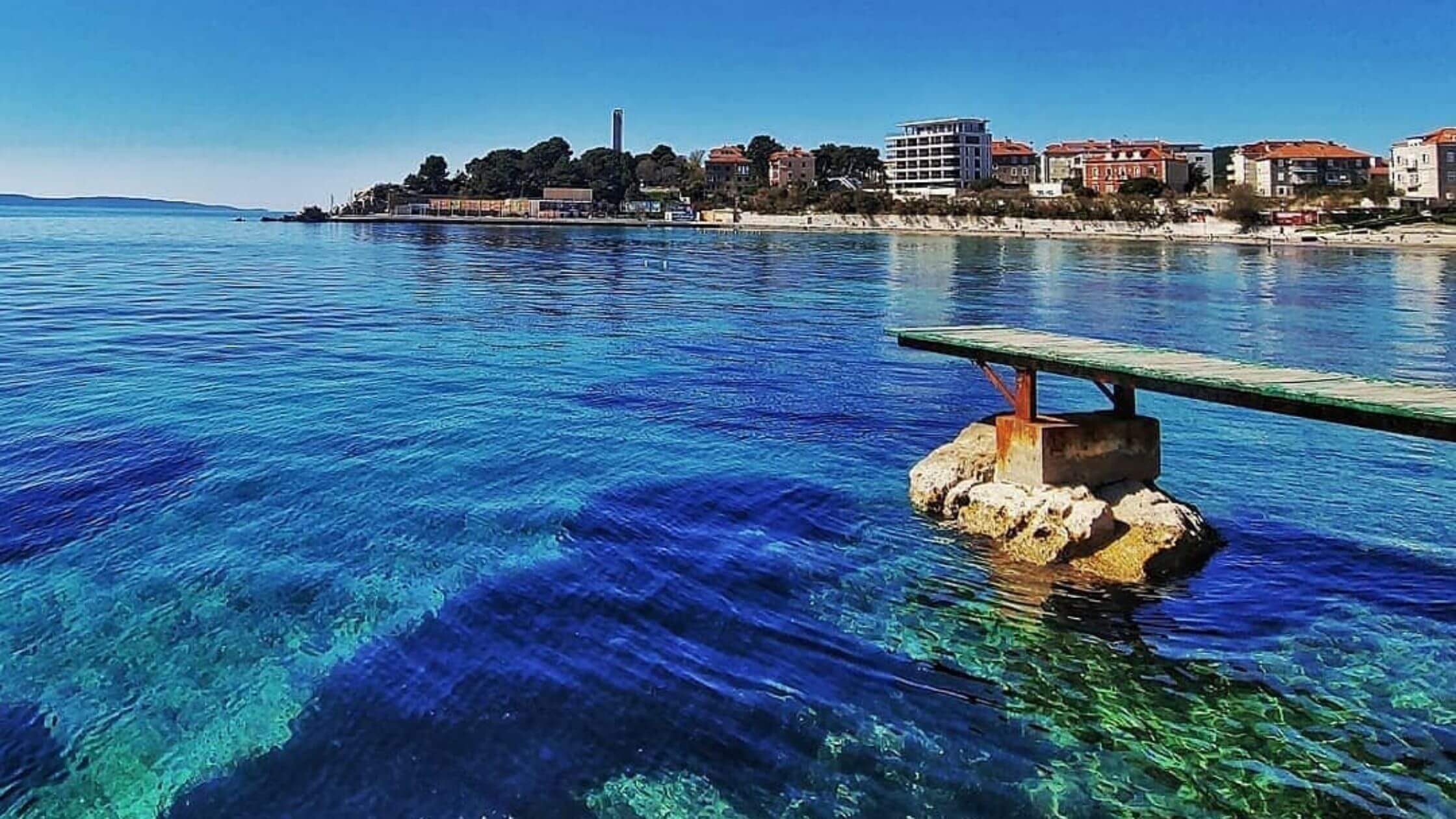
The crystal clear waters of Bačvice beach. Visit Split/Facebook
Fancy another beach day? Bačvice beach is a popular hangout spot in the center of Split. Relax at one of the many cafe bars and watch the locals play picigin, a traditional ball game. Rumor has it this beach is also where the sport originates from.
Day 7: Krka/Omiš/Trogir
Don't be too quick to leave Split. From here, there are several options for day tours to surrounding attractions.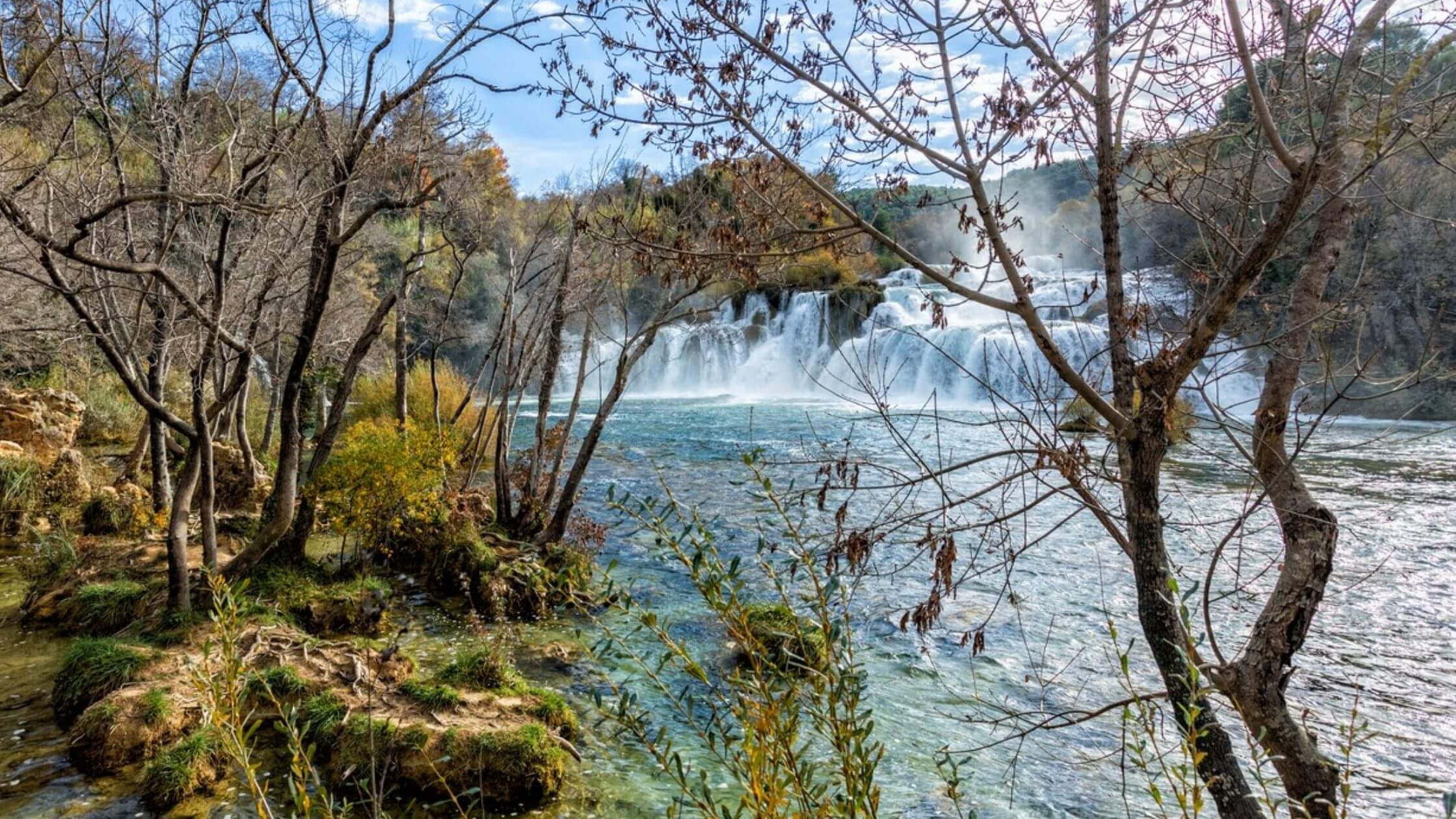
Some of the most stunning waterfalls in Croatia can be found at Krka National Park. Krka Nationa Park/Facebook
For nature lovers, Krka National Park is another national park about an hour’s drive from Split. Spend a day walking along well-maintained trails that wind along some of the most stunning waterfalls in the country. Again, make sure you get there early to avoid the crowds!
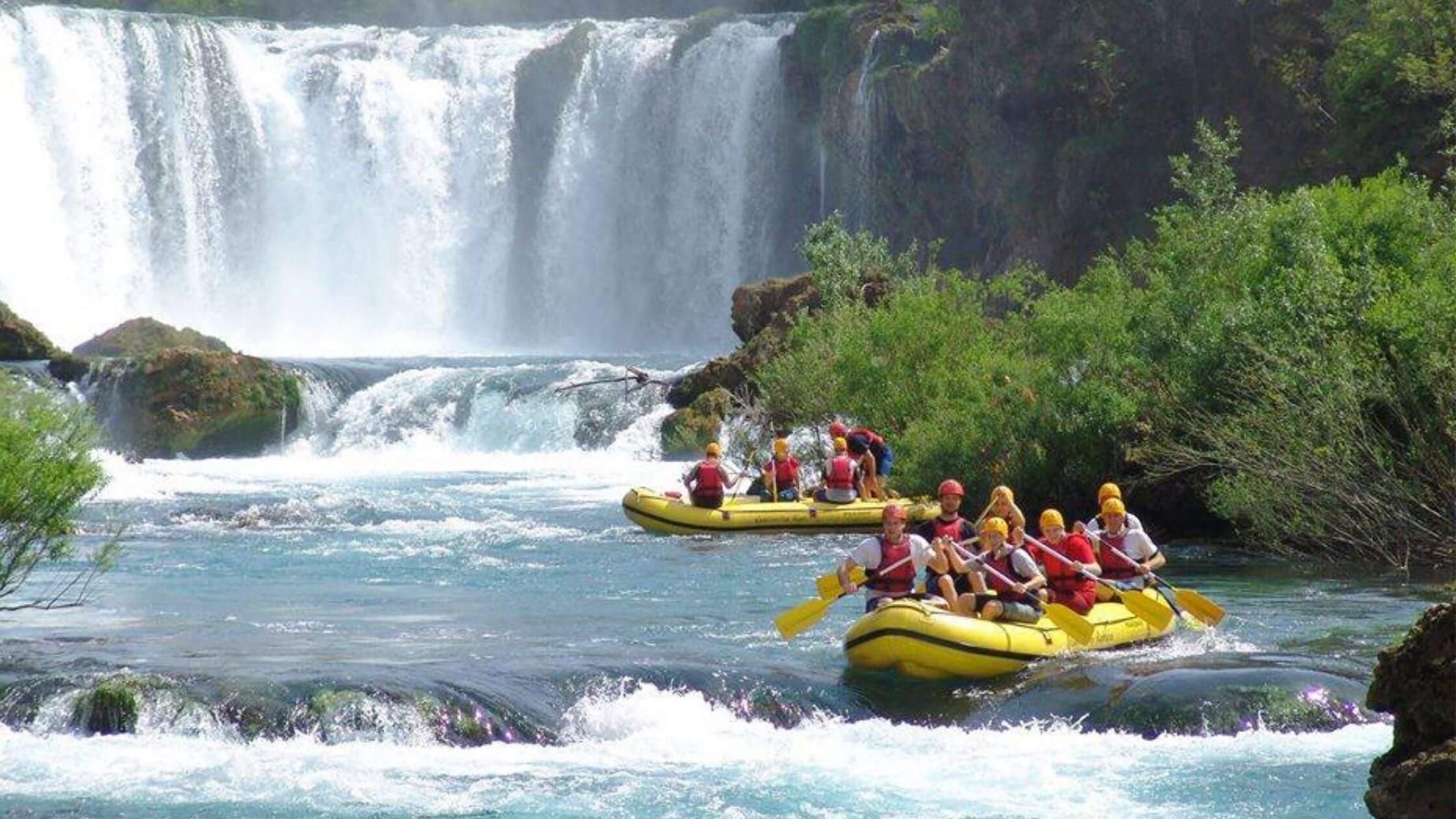
Try white water rafting in Omiš. Tourist Board Omiš/Facebook
For those craving more action, head to the picturesque town of Omiš which offers one of the most dramatic scenes on the coast. The city is nestled in a canyon surrounded by gray, craggy mountains, contrasting the peacock blue waters where the Cetina River meets the Adriatic Sea. Omiš offers white water rafting, free climbing, ziplining, abseiling, and canyoning, amongst other activities for visitors seeking a bit of a thrill on their vacation.
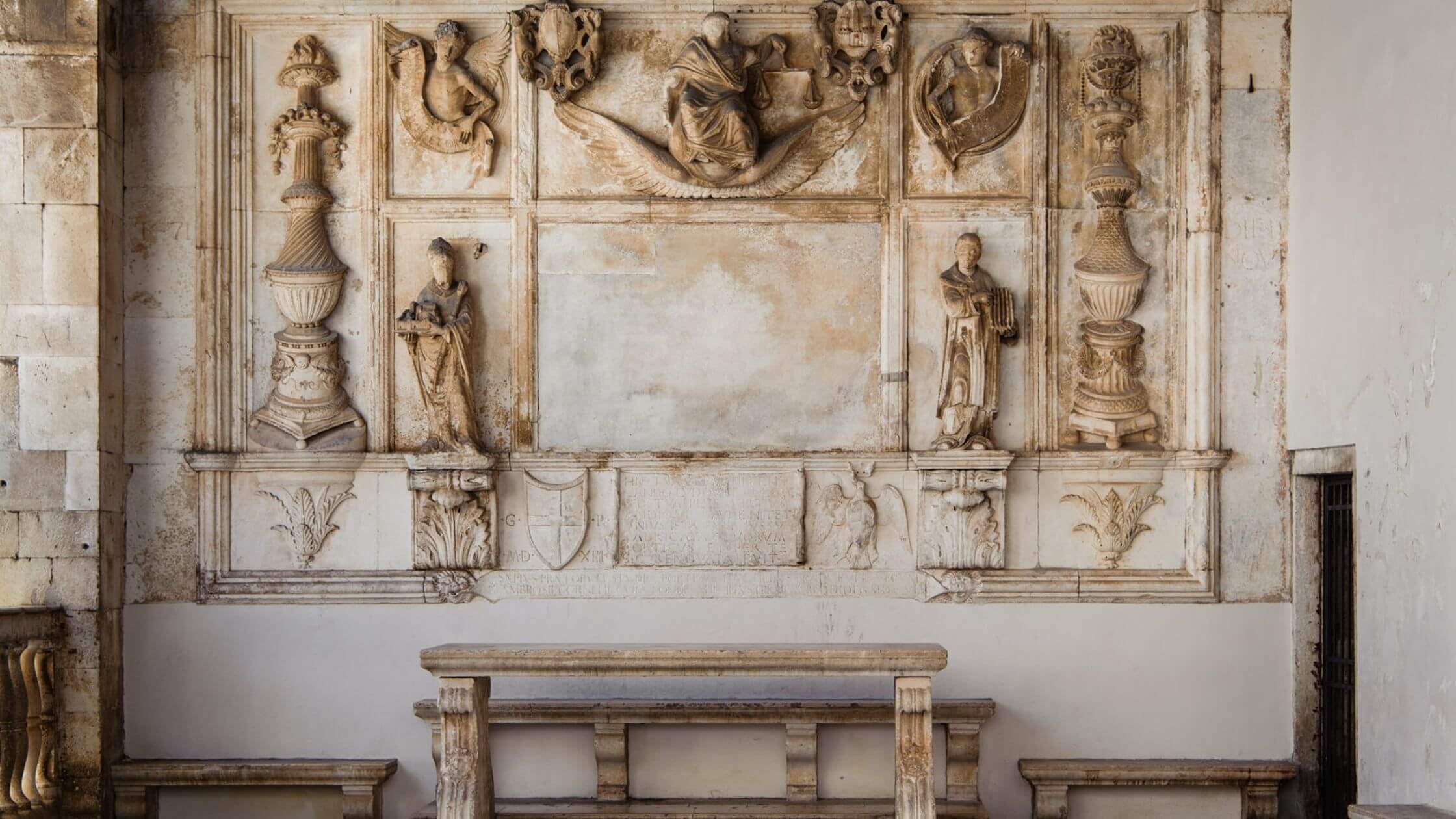
Just one of the many well-preserved remains scattered around Trogir's Old Town. Visit Trogir/Facebook
For the history buff, head to Trogir which has the best-preserved Romanesque-Gothic complex in all of Central Europe. Take a walk around the Old Town, surrounded by walls comprising a series of dwellings and palaces from the Romanesque, Gothic, Renaissance, and Baroque periods.
Day 8: Hvar
With over 1,000 islands, it wouldn’t be a complete trip to Croatia without doing some island hopping. From Split, take the 1-hour ferry ride over to Hvar. Its beauty and vibrant nightlife have made it a regular vacation spot for the likes of celebrities such as George Clooney and Beyonce.
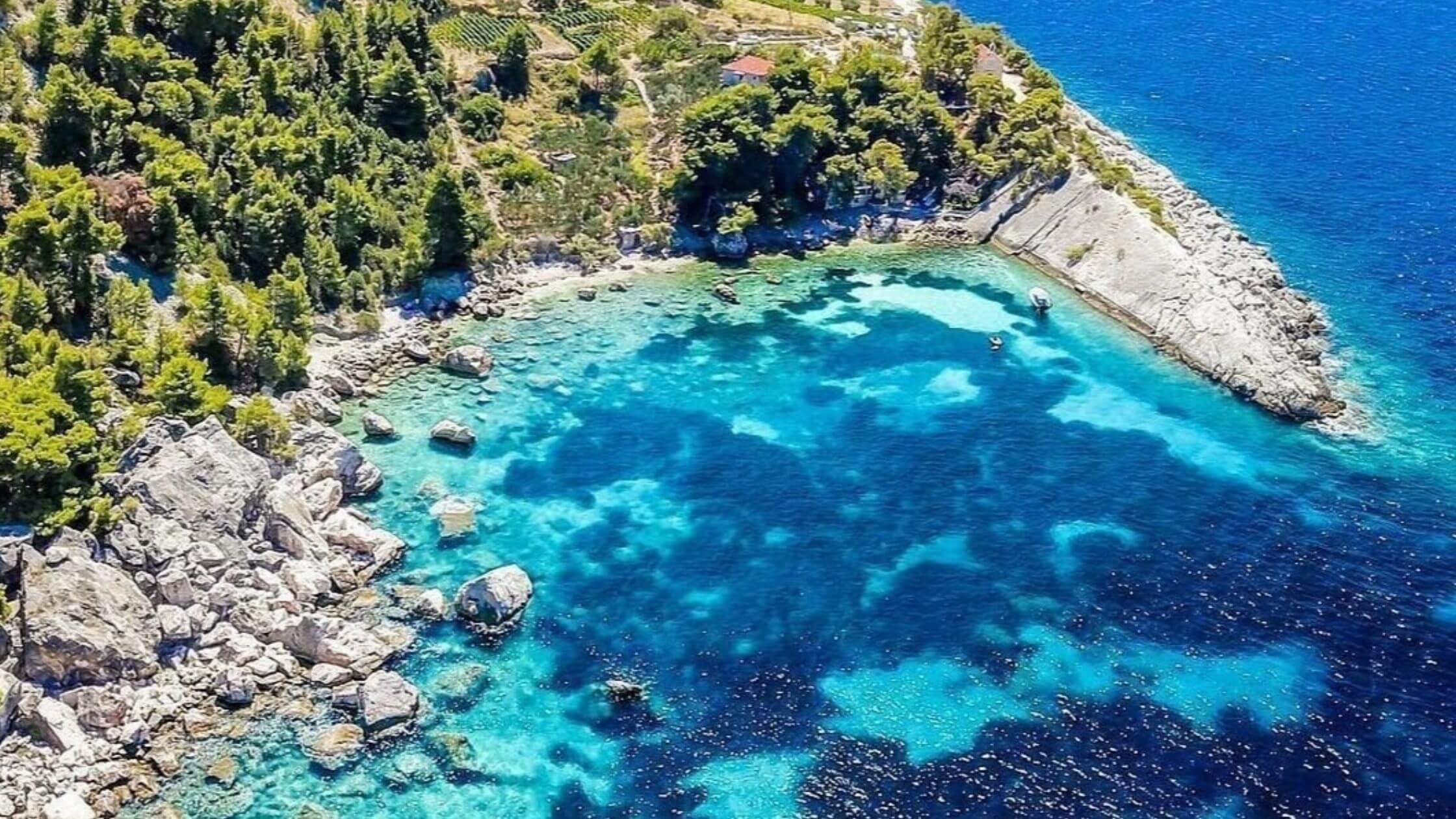
Hvar is one of the longest and sunniest islands in Croatia. Hvar Tourist Board/Facebook
Start by wandering around St. Stephen’s Square, the largest square in Croatia and don’t miss the Cathedral of St. Stephen and the Hvar public theater. For the best view, climb to the top of the Španjola Fortress to get an unobstructed view overlooking Hvar Town and nearby Pakleni Islands. You can even rent a small boat (no license required) to explore these islands on your own!
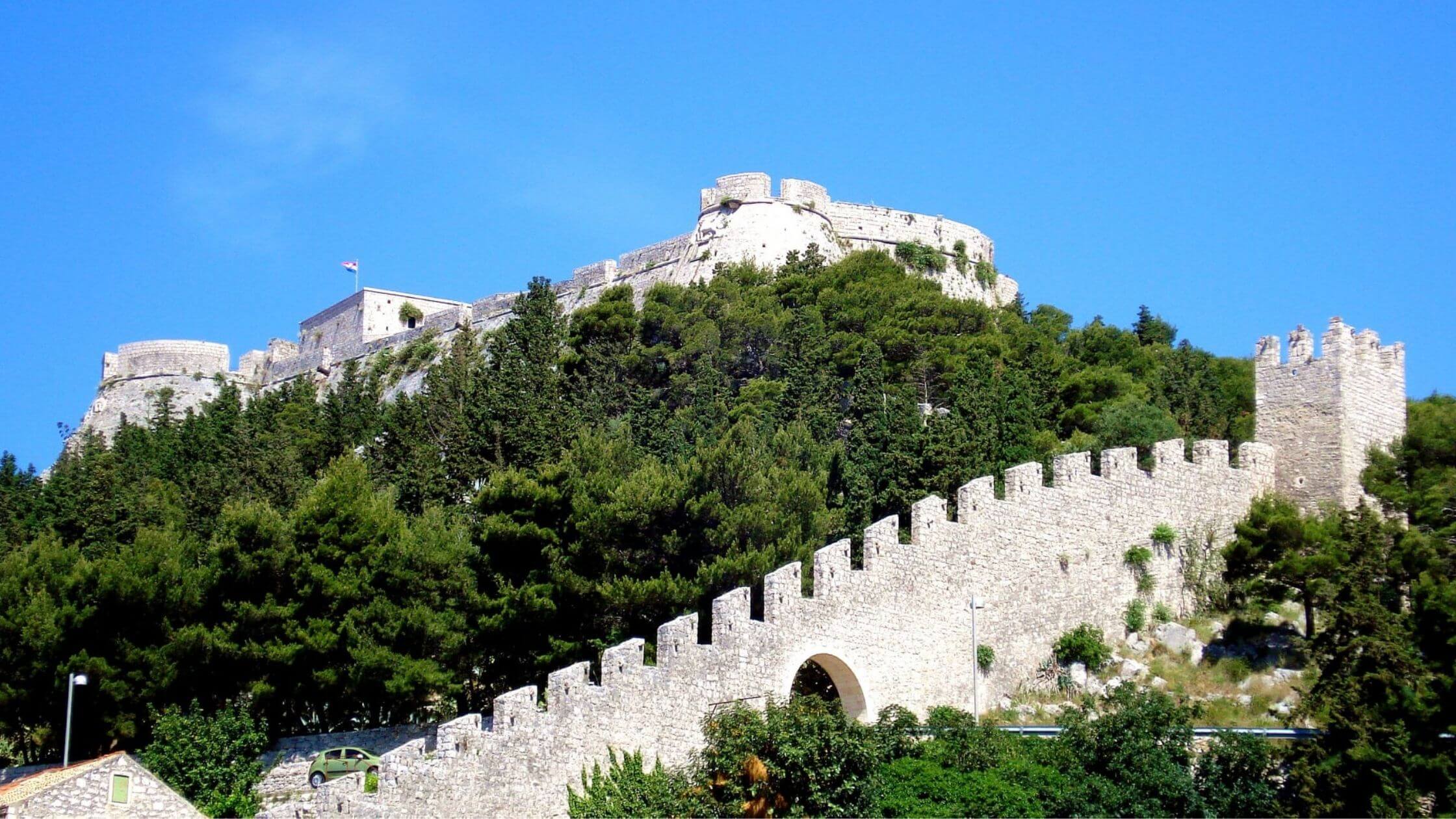
The view from the top of the Španjola Fortress is unparalleled on the island. Hvar Tourist Board/Facebook
Once you’ve taken in all these sights, enjoy another relaxing beach day at one of the many pristine beaches such as Malo Zaraće, Dubovica, or Pokonji Dol.
Alternatively, if you’re looking for another day trip, book a tour with one of the local travel agencies to the Blue Caves on Biševo and marvel at its clear, iridescent blue waters.
Day 9: Korčula
After the buzz of Hvar, take the ferry to the tranquil town of Vela Luka on the island of Korčula, the birthplace of famed explorer Marco Polo and home to some of the best Croatian wines.
From Vela Luka, take a scenic drive towards the town of Korčula, also known as “little Dubrovnik”. Along the way, stop by the numerous family-run vineyards that welcome visitors for wine and cheese tastings.
Grk is a white wine variety grown almost exclusively on Korčula, other white wines such as Pošip and Rukatac are also premier Croatian wines, often served on celebratory occasions. For fans of red wine, do grab a bottle or 2 of Plavac Mali.
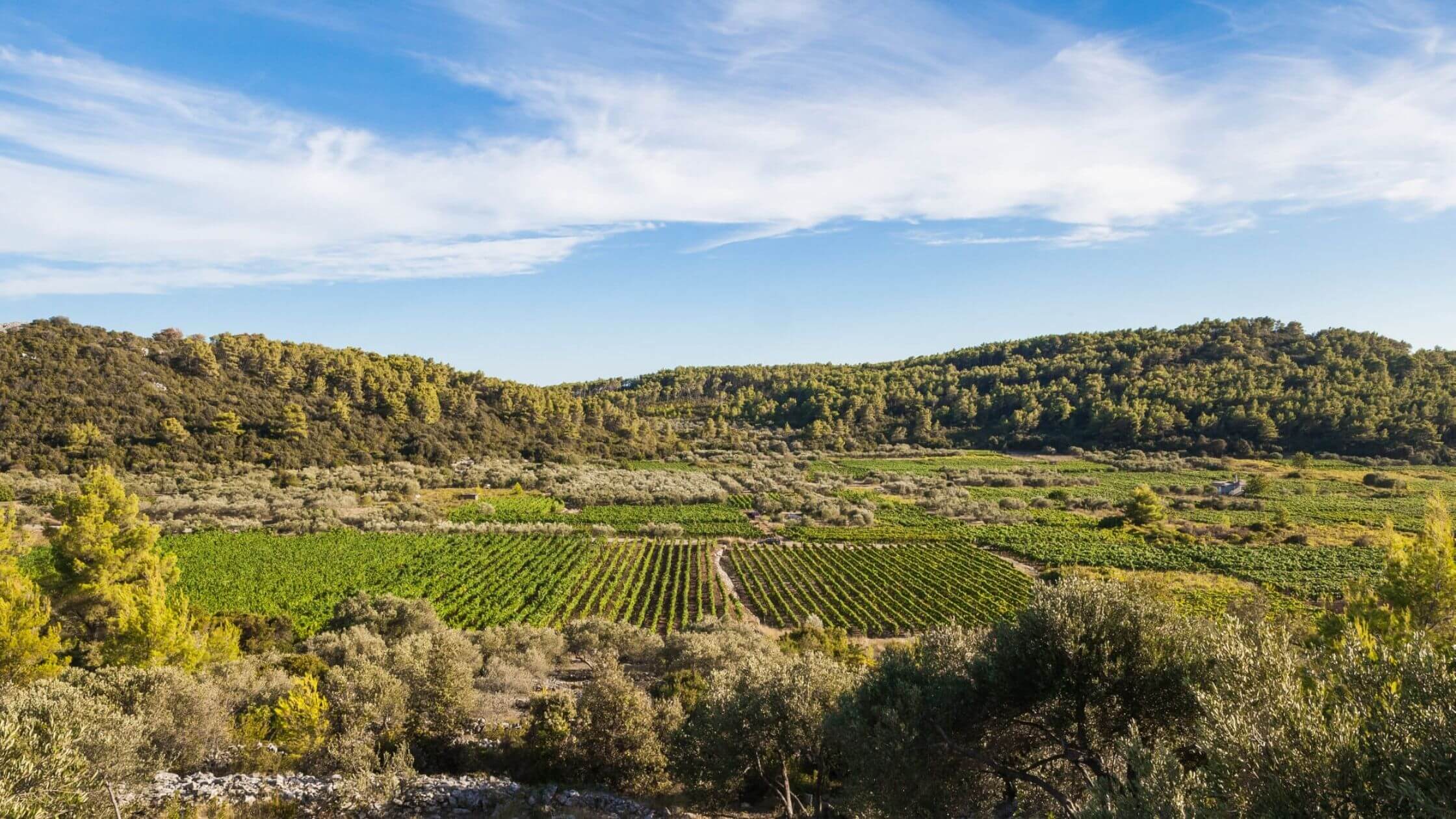
Vineyards of Korčula island. Visit Korčula/Facebook
In Korčula, walk off the afternoon’s indulgences exploring the streets of the Old Town with its architectural influences by the Venetian Renaissance, before capping off the night with a meal and more wine at any of its superb restaurants.
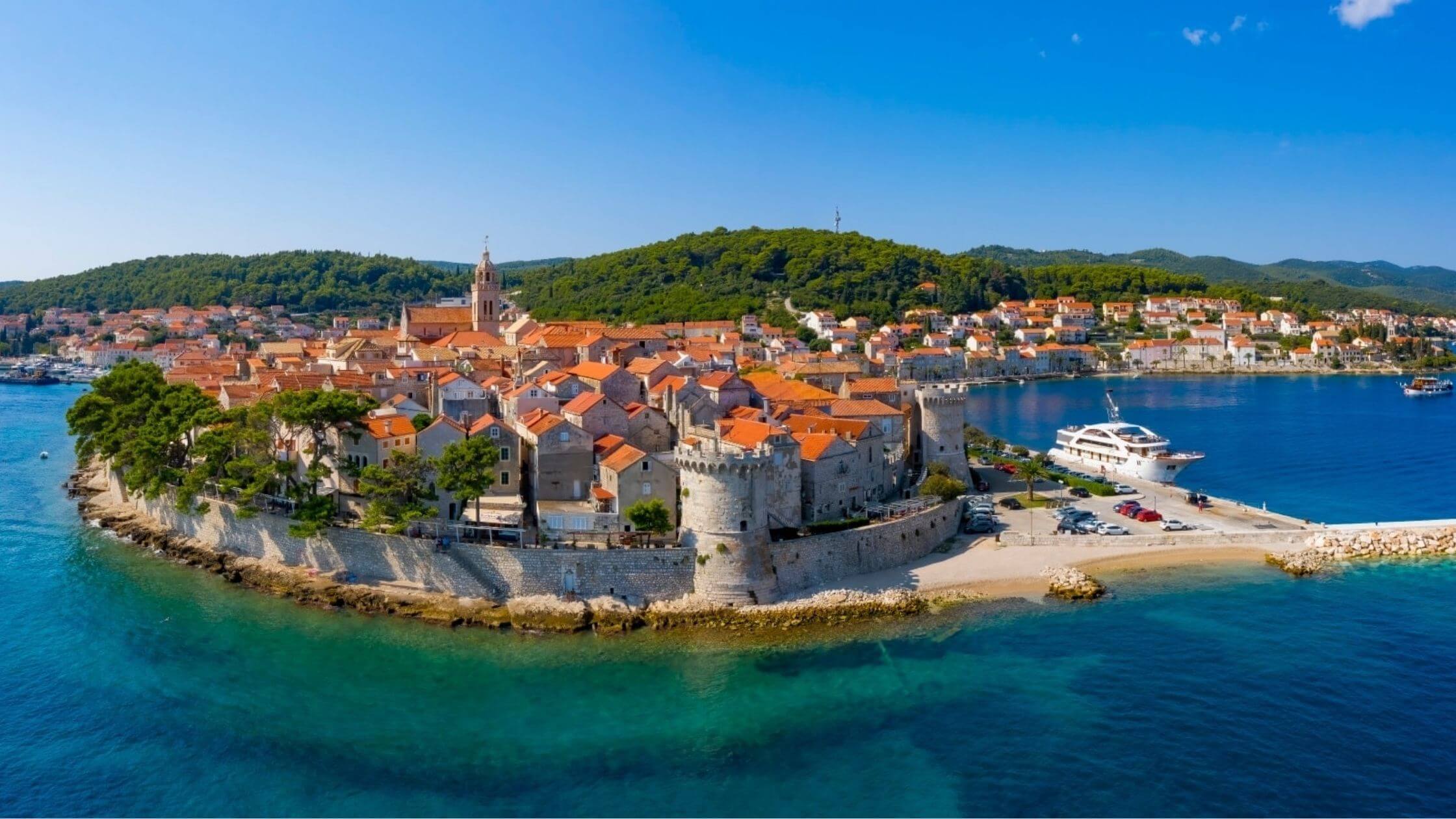
Korčula town. Visit Korčula/Facebook
Day 10: Dubrovnik
There’s no better way to end the trip than with Dubrovnik. And yes, there is no shortage of Game of Thrones tours to indulge your senses, but there is so much more to this medieval city than where Cersei Lannister did her walk of shame.
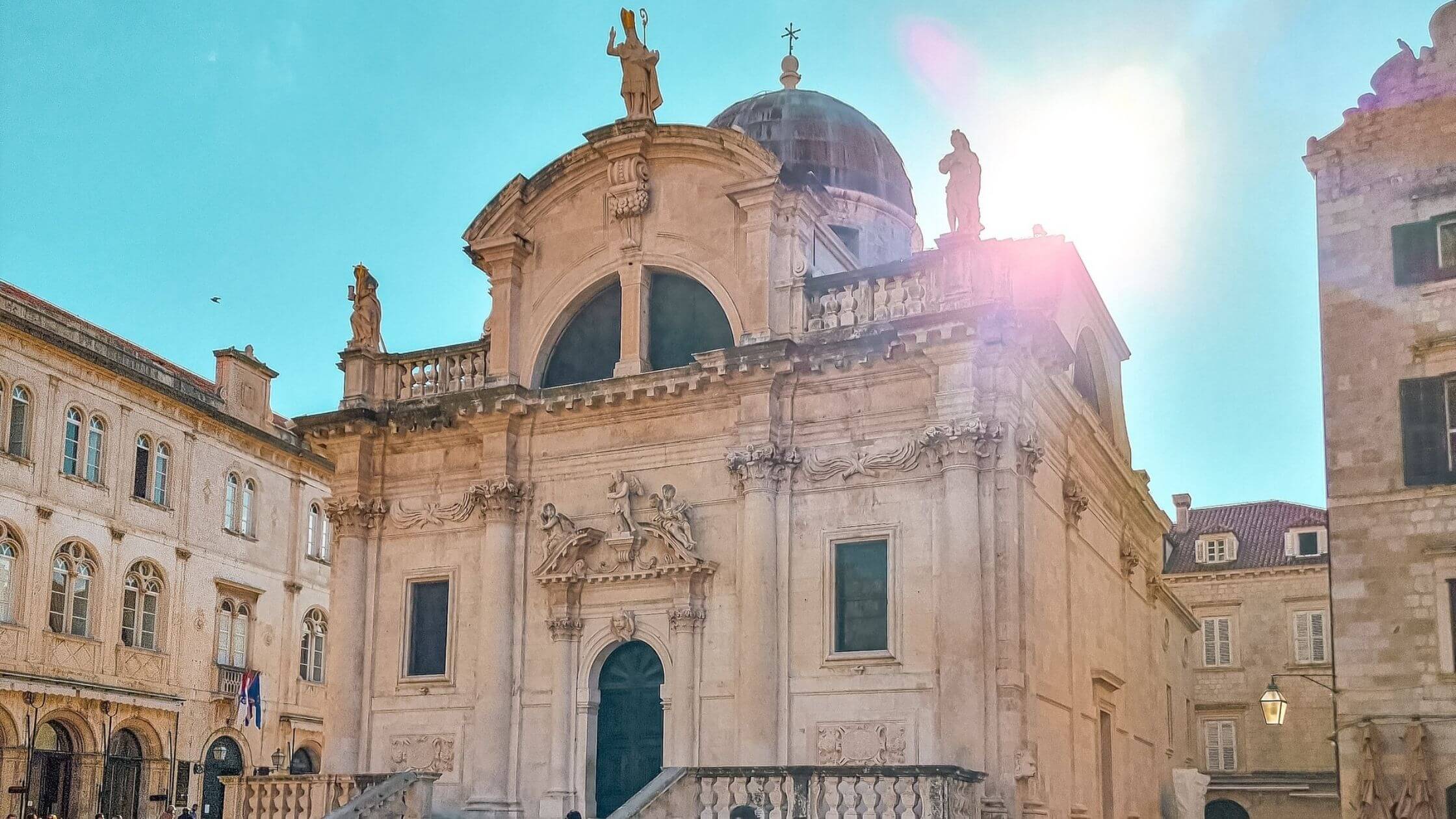
The beautiful Saint Blaise's Church in Dubrovnik was built during the 10th century. Dubrovnik Tourist Board/Facebook
Talk a walk along the city walls and through Stradun, Dubrovnik’s main street. From here, you can also catch Onofrio’s Large Fountain that used to supply Dubrovnik with fresh water during the Middle Ages and other impressive structures including the Clock Tower, Saint Blaise's Church, Saint Ignatius Church, Cathedral of the Assumption, and the Franciscan Monastery.
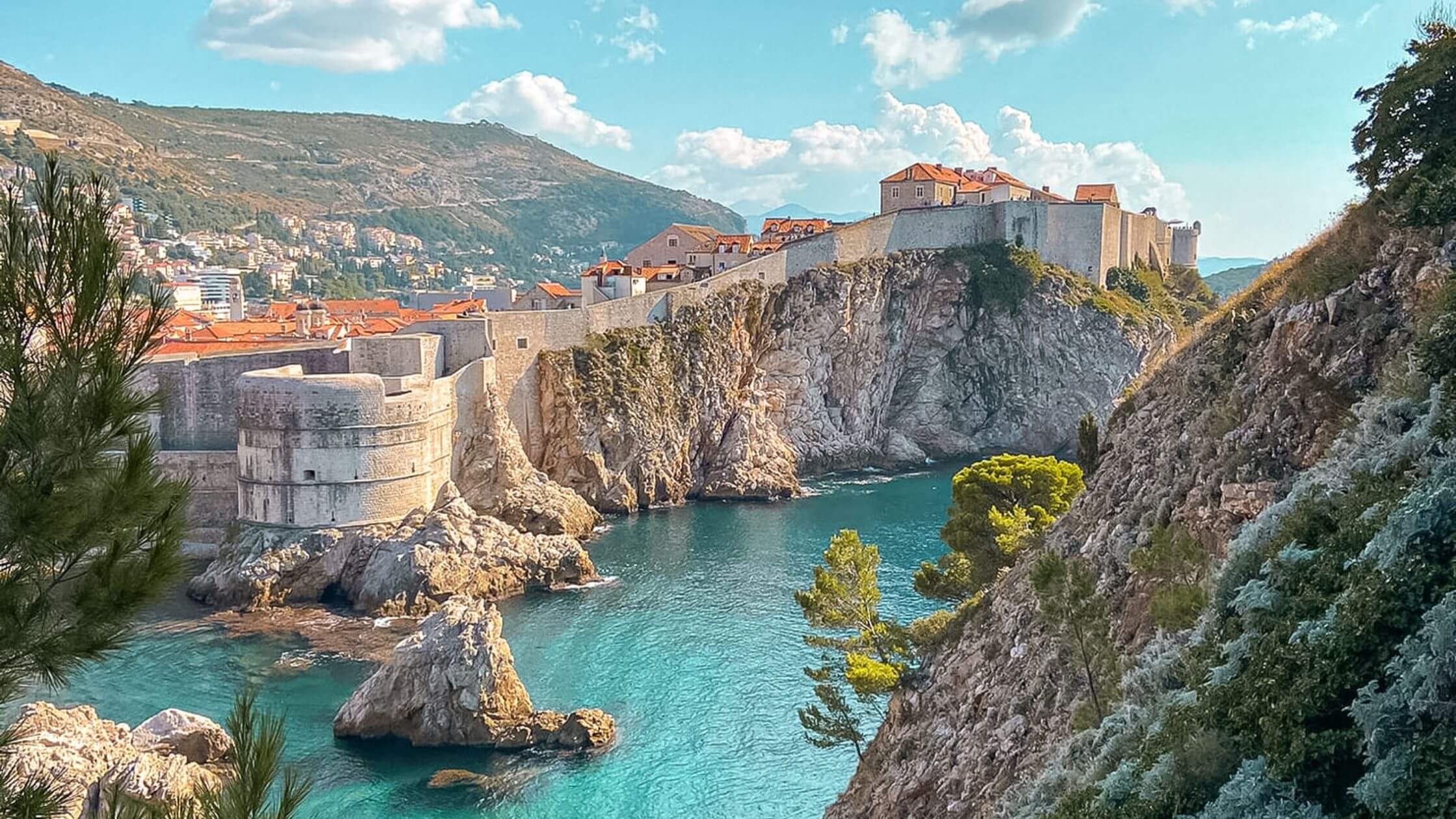
The view from beyond the walls of Dubrovnik looking upon Fort Lovrijenac. Dubrovnik Tourist Board/Facebook
Watch the sunsets and reminisce on your amazing road trip through the country at one of the cliff bars along the city walls, before capping it all off with an exquisite meal at one of the many Michelin-starred or recommended restaurants Dubrovnik has to offer.
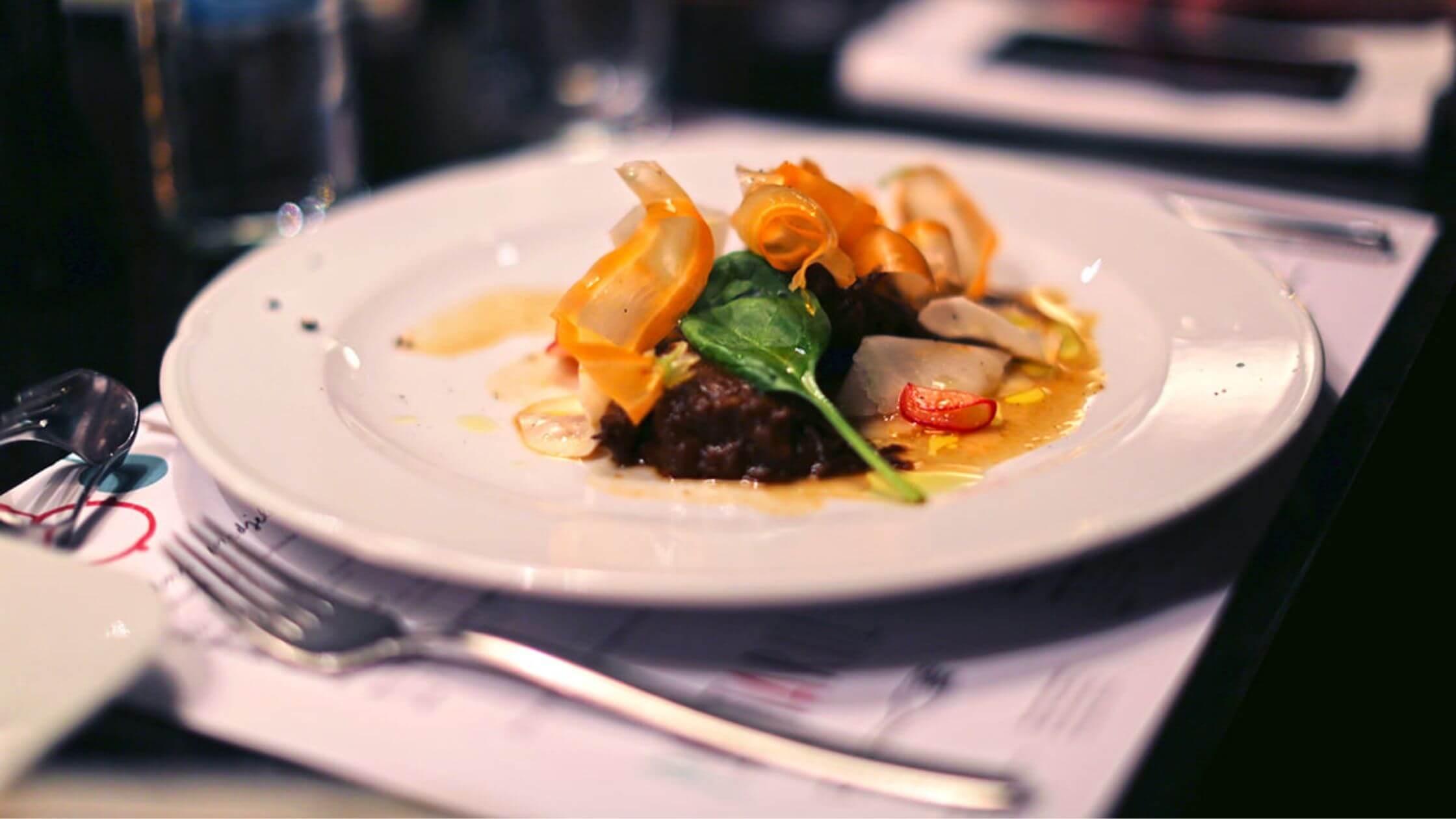
Nothing like a luscious meal to top off a fantastic experience road-tripping in Croatia. Dubrovnik Tourist Board/Facebook
And that’s all folks, you’ve done it! Croatia in 10 days! Bear in mind, this is merely the appetizer of what Croatia has to offer. Customize this guide to better suit your tastes and pace and remember, don’t hesitate to ask the locals in order to unlock the best secrets each location has to offer.
For more on travel in Croatia, follow TCN's dedicated page.
Marko Gajski of Korčula's Lešić Dimitri Given the Rising Chef of 2022 Trophy
December 3, 2021 - At the annual Relais & Chateaux Group conference Marko Gajski, the chef in the Michelin-starred Lešić Dimitri Palace was awarded the Rising Chef 2022 Trophy!
Relais & Chateaux Group is one of the world's most prestigious hotel and restaurant associations. In November, awards were given to the best members of the group, ie deserving individuals who stood out with their enthusiastic work. The annual congress of the group was held virtually, and broadcast live from Paris to more than a thousand top chefs, managers and hotel and restaurant owners in 65 countries across five continents. This was a truly extraordinary moment for the Lešić Dimitri Palace in Korčula, one of the first Croatian R&C members in the world's most luxurious tourist map. For eight years the LD team has been present on this list of exclusive, unique and independent hotels, villas and restaurants.
"The award came as icing on the cake after a great season! I know that these names mean close to nothing to many people, but for us chefs it means a lot! When you know that Relais & Chateaux includes restaurants where chefs Thomas Keller, Daniel Humm, Mauro Colagreco or Elena Arzak cook and some of the restaurants in the group have two or three Michelin stars each. The award if for the top rising chef, but I can’t say that I personally won the award. No award in gastronomy is personal, everyone in this business knows that it is a product of hard work of the whole team and the team experiences it that way. This award is not mine, but ours together," chef Marko Gajski said. He is one of the most famous and most talented chefs in Croatia, who had his first Michelin star in confirmed this year, after first getting it in 2020.
As far as their further plans to establish the hotel and the restaurant on the domestic and international gastro scene, Marko is extremely optimistic and ambitious: “Our ambitions do not stop there. The Rising Chef Trophy, as well as the confirmed Michelin star for 2021, are a confirmation of the quality of our work. When you receive such recognition from the most respected and authoritative gastronomy institutions in the world, you can only get more motivated to perfect yourself more, and move the boundaries of innovation and creativity in everything we do even further!”
Summer in Croatia Through the Lens of Croatian Photographer Timotej Gošev
November 20, 2021 - ''I want people to look at my photographs, and simply desire to be right there in the place their eyes are seeing'', says Timotej Gošev, better known as Timotej on Instagram, inviting thousands of people every day to experience the Adriatic summer through his photographs. Total Croatia News managed to interview the photographer with Varaždin roots.
In what ways can photography positively impact the promotion of tourism in Croatia? The question may sound simple to answer, but nowadays photography can be manipulated in such a way that the first impression of a tourist upon arriving at his destination is one of disappointment. It happens in many parts of the world. The use of visual content, to be used responsibly and strategically, can be essential to make Croatia known around the world.
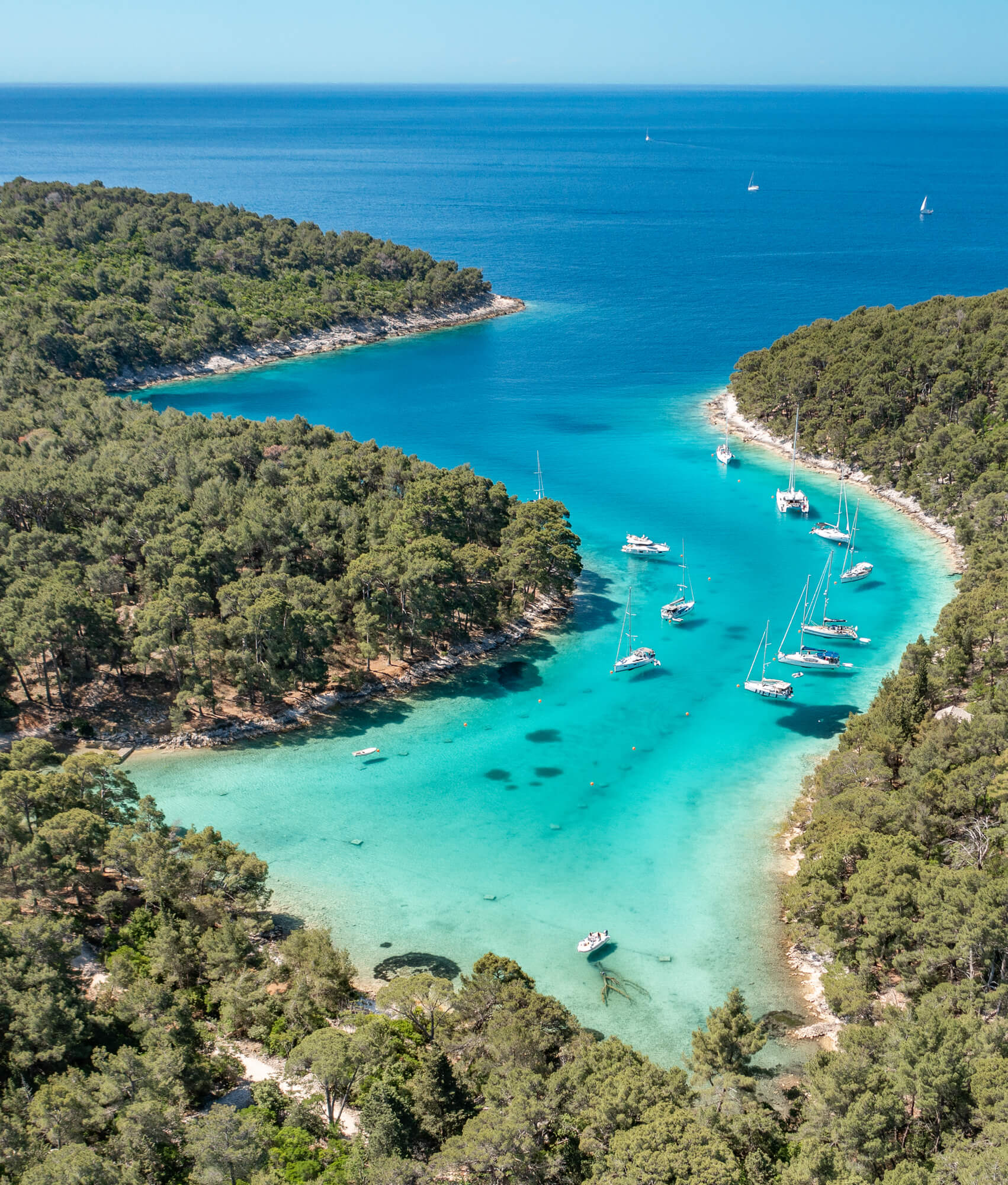
Krivica Cove and beach, Lošinj (Photo: Timotej Gošev)
Now I live in Croatia, but for 24 years of my life, my only reference was what I saw on the internet and on social networks. Now that I have spent two summers here, I can attest that Croatia has the advantage of meeting the expectations of those who came with a preconceived image in their heads. Those turquoise and transparent waters that you see in photos and videos, they are like that! But the Adriatic coast of Croatia is very extensive, and to it, we must add its more than 700 islands. Imagine the number of remote and wonderful places along almost 6000 kilometers of coastline that must exist to fulfill your fantasy of an Adriatic summer. Well, a Croatian photographer is dedicated to exploring, capturing, and sharing the magic of these places with his thousands of followers.
If you have looked for photos of Croatia to corroborate what everyone is surely saying about it, chances are that you have come across Timotej's photos. Also, if you have seen one of his photos, it is most likely that you have already bought your air ticket to spend the following summer in the Adriatic.
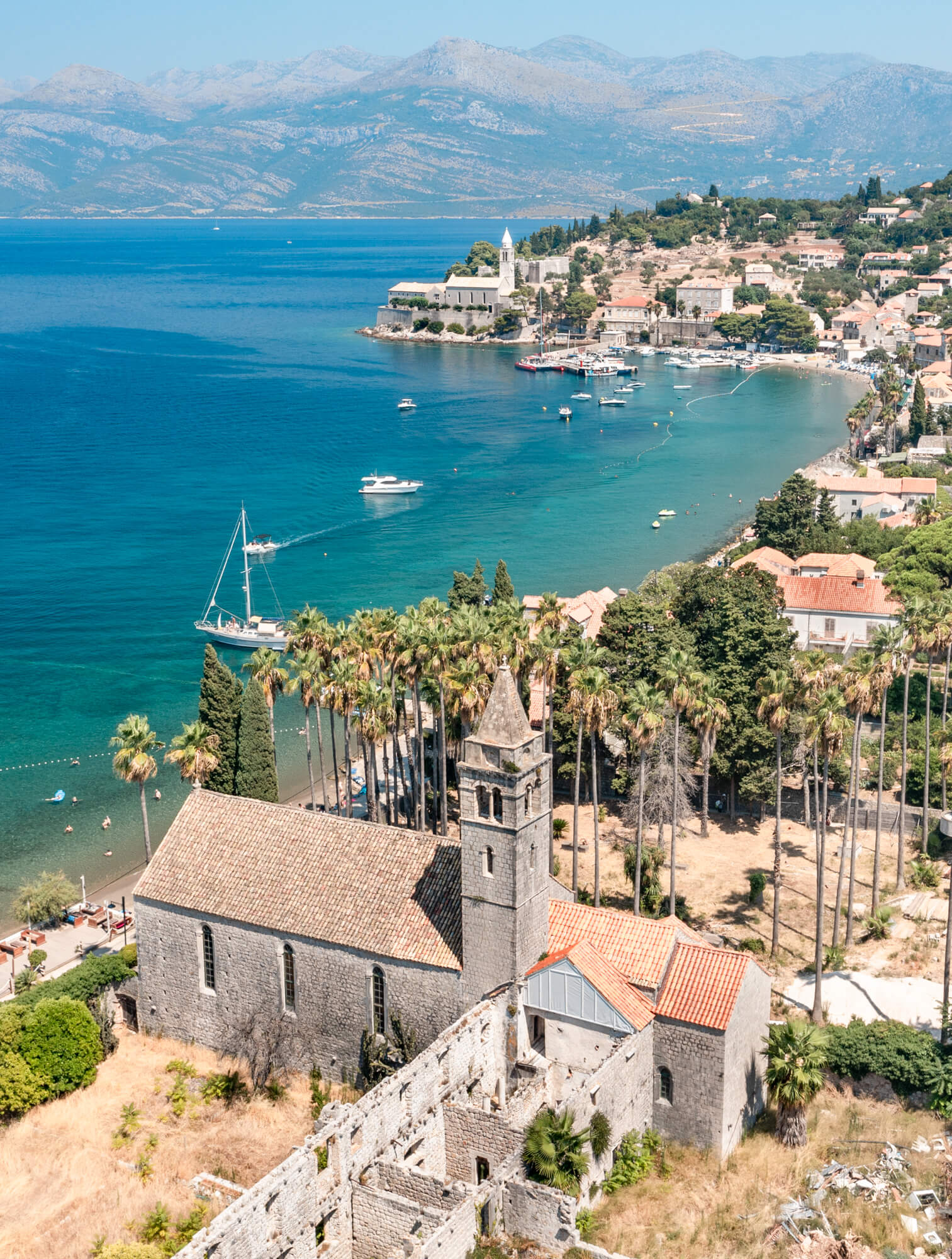
Lopud Island (Photo: Timotej Gošev)
Croatia will always stand out for its history, and its stories. But being someone who has lived most of his life on another continent, I am aware of the visual impact that Croatia has on other countries in the world. Especially in these times, many friends shared with me photos or videos that they found on Instagram, Facebook, Pinterest, TikTok, or Twitter, and they could not believe that such a place existed, and especially in Europe. When it comes to paradise islands and turquoise waters, many think of Hawaii, the Caribbean, or the islands of Melanesia. But Croatia has already positioned itself as an alternative Eden, and one that combines dream destinations and a calendar packed with cultural activities.
I find it impressive that a photo is able to motivate someone to book airfare and accommodation. I think this reinforces the idea that the world is there to be explored, and that Croatia is one of those must-see destinations in it. But for this to work as it has been working in recent years, it is necessary that all the tourism promotion forces in the country aim towards the same objective. There is the National Tourism Board, the local Tourism Boards, and why not, talented Croatian citizens who use their platforms and content to highlight their country in a showcase.
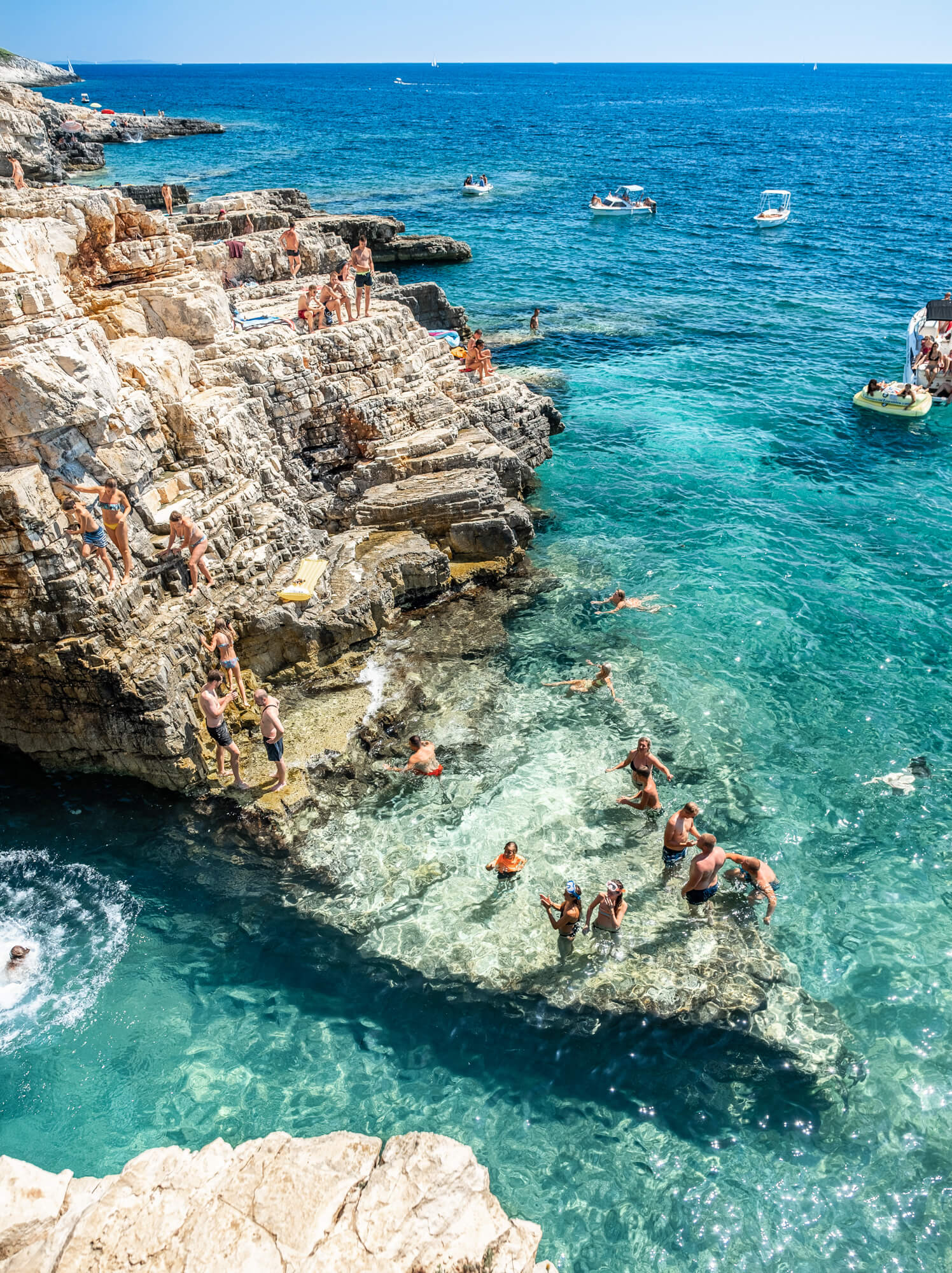
Kamenjak, Istria (Photo: Timotej Gošev)
One such person is precisely the famous Croatian photographer Timotej Gošev, who's approaching his mid-thirties, and currently living in Berkshire, England. He's the owner of the @timotej Instagram account which has become one of the largest social media accounts in the world by sharing travel photography and recommendations from only around Croatia. With almost 100 thousand followers on Instagram, his pictures often go viral and are reposted and shared by some of the biggest media groups such as Forbes, Conde Nast, as well as the biggest re-sharing travel accounts on Instagram such as Earthpix, Travel & Leisure, Wonderful Places & Beautiful Destinations. If you haven't seen his photography yet, be sure to check his Instagram first. He also has an impressive guide to his top 30 favorite beaches in Croatia, you can check it here.
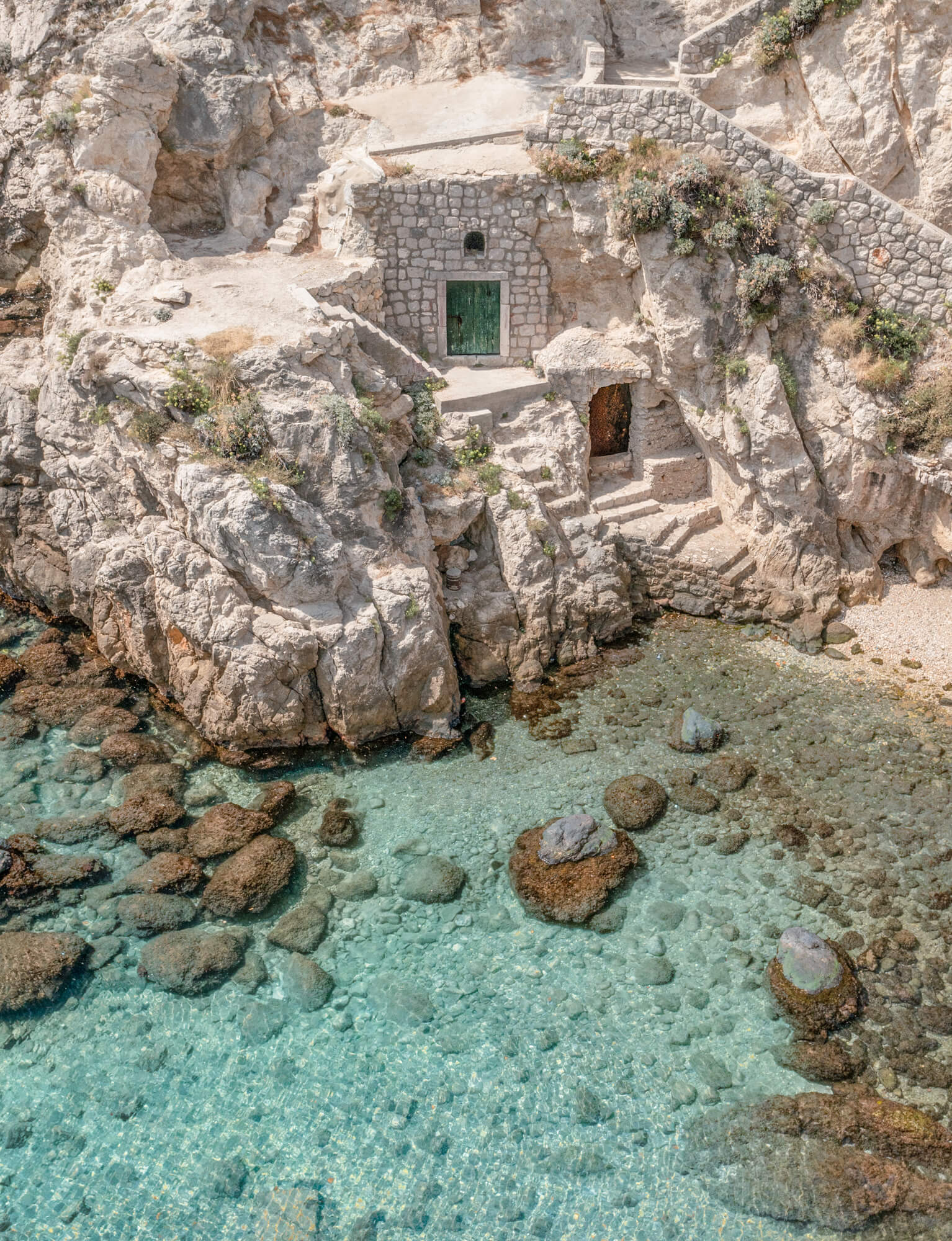
Dubrovnik (Photo: Timotej Gošev)
Timotej shares with Total Croatia News about his special connection to his country, his photography, tourism in Croatia, his future projects, and much more.
The vast majority of your followers and all of those who have come across your photographs on social media already know you for the quality of your work and your captivating images. But few know about your personal side and your history with Croatia. How does this connection with Croatia begin? Were you born and raised in Croatia?
It’s true. A lot of people see my photographs on Instagram, and just by looking at them can say this looks like one of Timotej’s photographs. However, very few people know me personally. Remember, I am a photographer sharing photos from around Croatia, through social media, to the world. I am not another influencer showcasing my life and hoping to influence you to be like me. My goal is to inspire people through my photography to visit and fall in love with Croatia.
It’s also very amusing to me, how so many people are surprised that I’m from Croatia. Even Croatians often assume I’m from somewhere else. I was introduced to Nina Badrić for example, and she knew of my photography but thought I was a Slovenian photographer. I think it’s purely because my name, Timotej (pronounced ‘Timo-tey’ in English), is not so common in Croatia. Think about it, most boys in Croatia are named after the first four books of the New Testament Bible. Ivan (John), Marko (Mark), Luka (Luke), Matej (Matthew). My mum wanted to be a little bit more original with her Biblical name choice, so she looked further down the list until she came to Timotej (Timothy). Simple and straightforward explanation.
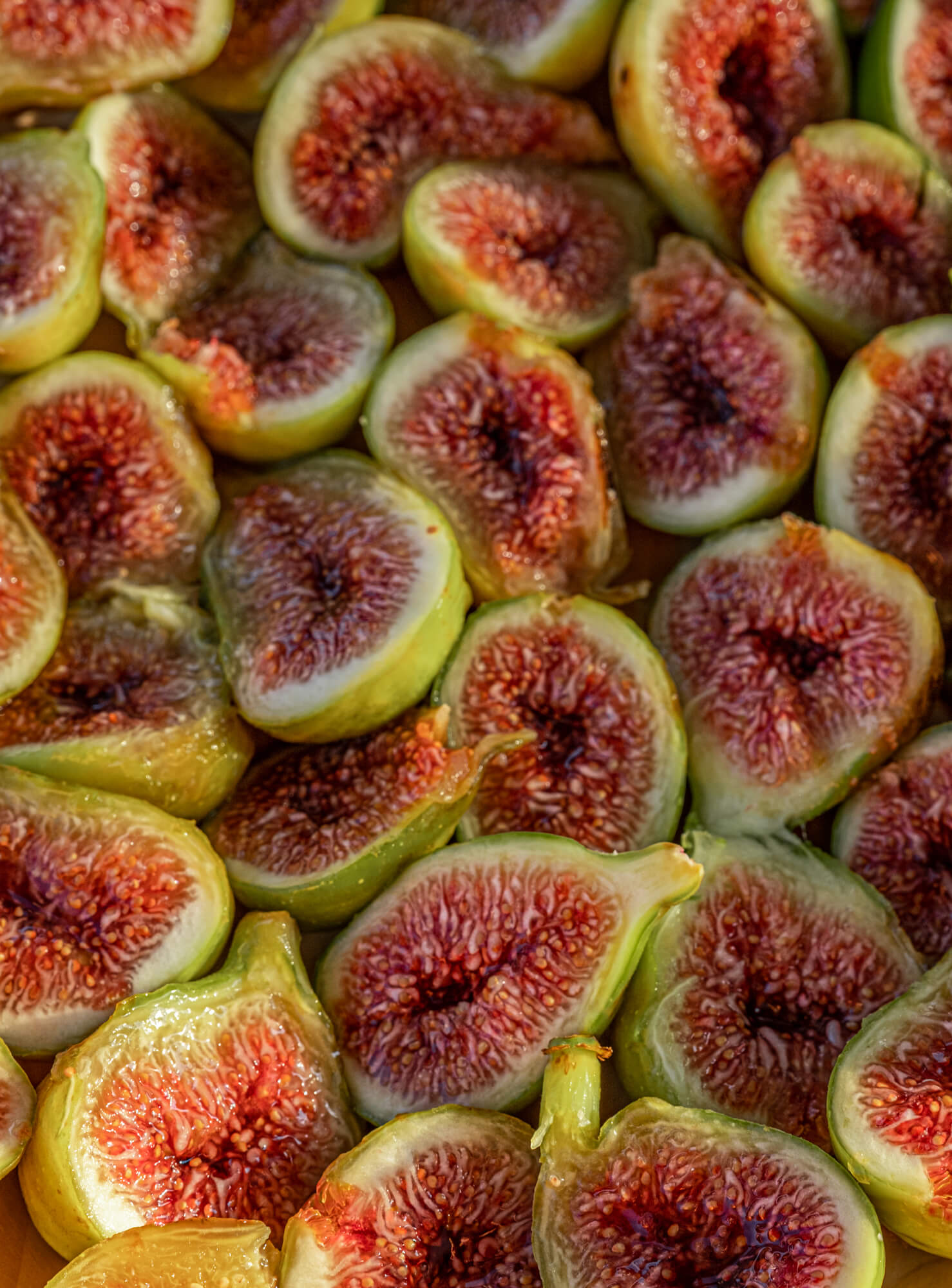
Croatian figs (Photo: Timotej Gošev)
My parents came to study in England after finishing their high school and army service in Varazdin, so I was born in the UK. But a few years later we moved back, so my younger brother was born in Varaždin. After a few years, my parents realized they could make a better life for our family back in England. So, once again, we moved back. Thankfully Croatia is just a drive and short flight away from England, so I was lucky enough to visit very often growing up. I can speak, read, and write Croatian too. I believe an Instagram account like mine, can only really belong to a Croatian, in love with his country.
Nowadays, when one associates the words ''travel photography'' and ''Croatia'', one of the first things that come to mind for a lot of people is ''Timotej''. How did you get started in photography and how has the learning process been so far? Is there another type of photography that you like equally?
I’ve been into photography for as long as I can remember. Cameras and lenses, all the gear, simply fascinates me. So does the quest to snap a perfect picture. As a child, I always wanted to press the camera’s shutter button and shoot everything. This wasn’t possible, as it was still the time of film cameras, and film roll was precious, so parents couldn’t let me waste it taking fifty pictures of nothing. So you can imagine my joy when digital cameras came into existence with memory cards.
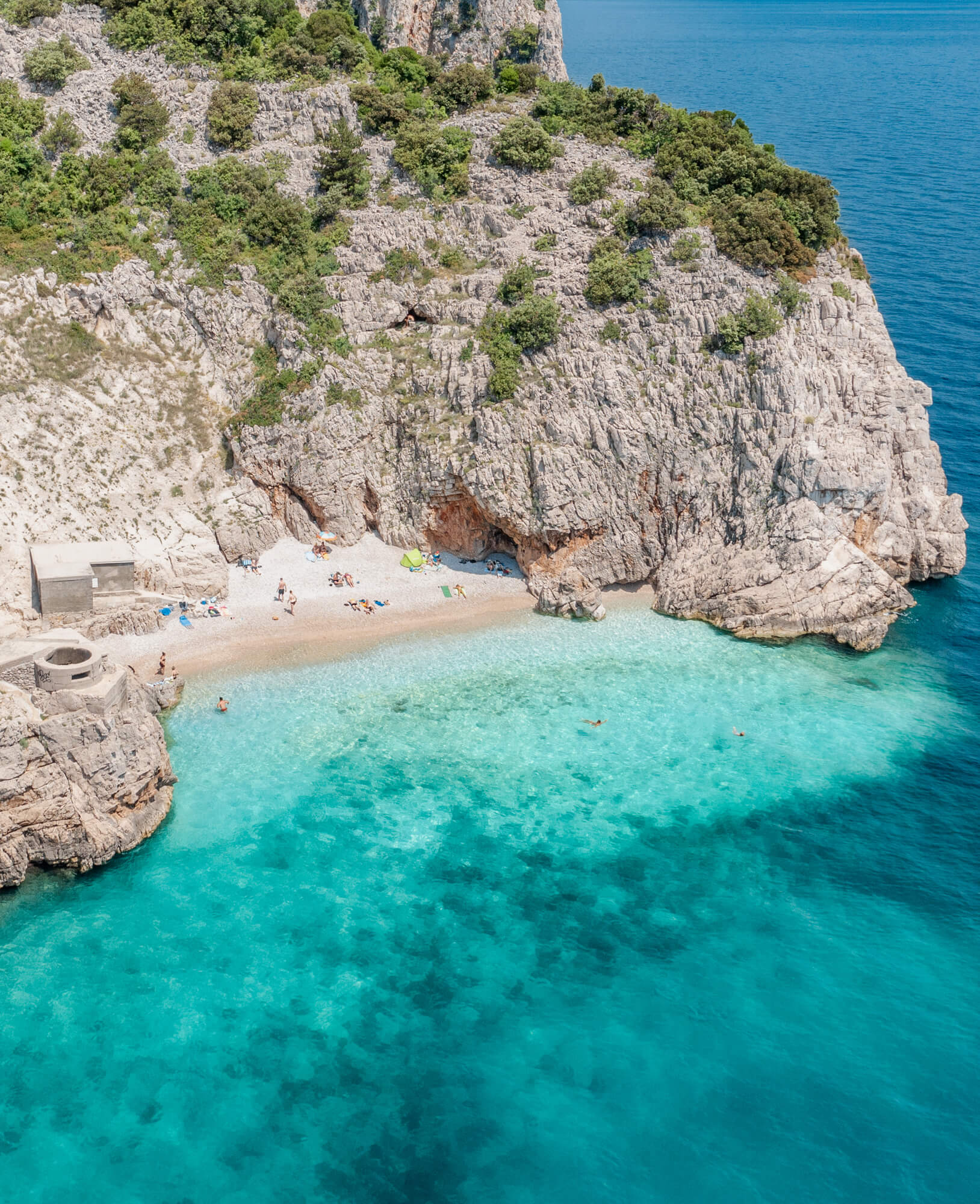
Brseč, Primorsko-Goranska (Photo: Timotej Gošev)
As far as learning goes, when you figure out how to work a camera/lens, the shooting settings, and how light affects the scene being shot, everything comes down to one’s eye for a good picture. Personally, for me, the learning these days mostly centers around training my eyes even more. If you take 50 shots, 1 can easily turn out perfect. But the goal is to be able to take 1 shot and make it perfect first time. Sometimes this means learning to be patient. Waiting. It can also mean making a bigger effort to find a unique vantage point. Doing research to find out what has already been shot where you are shooting.
I love beachscape photography as you all know, and architectural too. I also love to shoot macro shots. I really want to do more wildlife and food photography in the future.
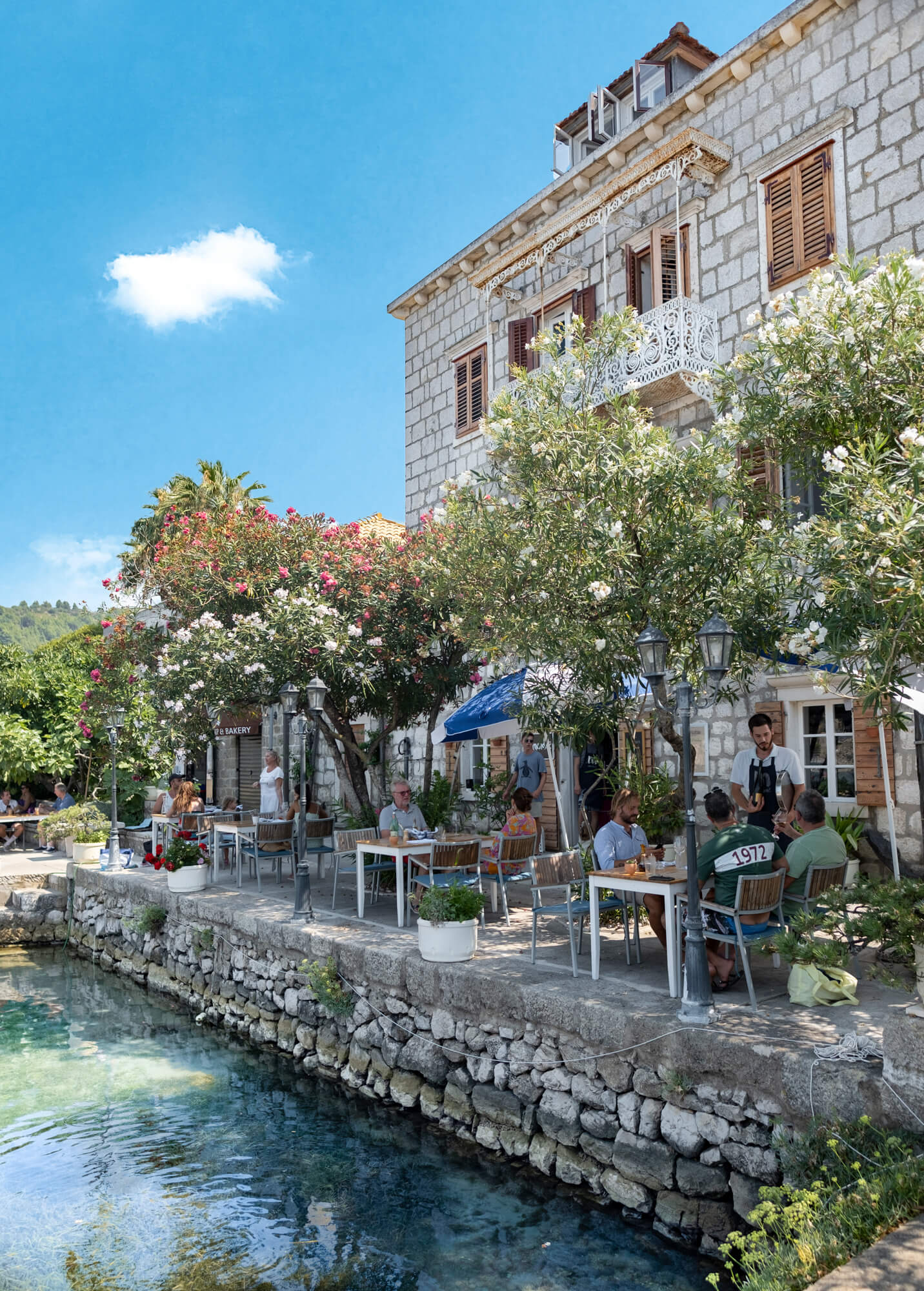
Restaurant Mandrač, Lopud Island (Photo: Timotej Gošev)
What inspires you to be a travel photographer and how has that changed in recent years?
I’m in love with the Croatian coast and the Adriatic Sea. Its beauty simply inspires me to capture it with my cameras. I am lucky and blessed to be able to call such a place, my country. I want to see and explore as many spots along the coast, and visit as many islands as my lifetime allows me too. Each place is its own world. People today are so obsessed with seeing as many countries as possible, but few have had the pleasure of truly knowing, exploring, and enjoying theirs. I love going back to a place I’ve already visited, to see how it’s changing, developing, and evolving. I am constantly inspired by the big and little changes happening everywhere. The way I see it is, that there is a lifetime of exploration for me and capturing moments with my camera. There is no getting bored.
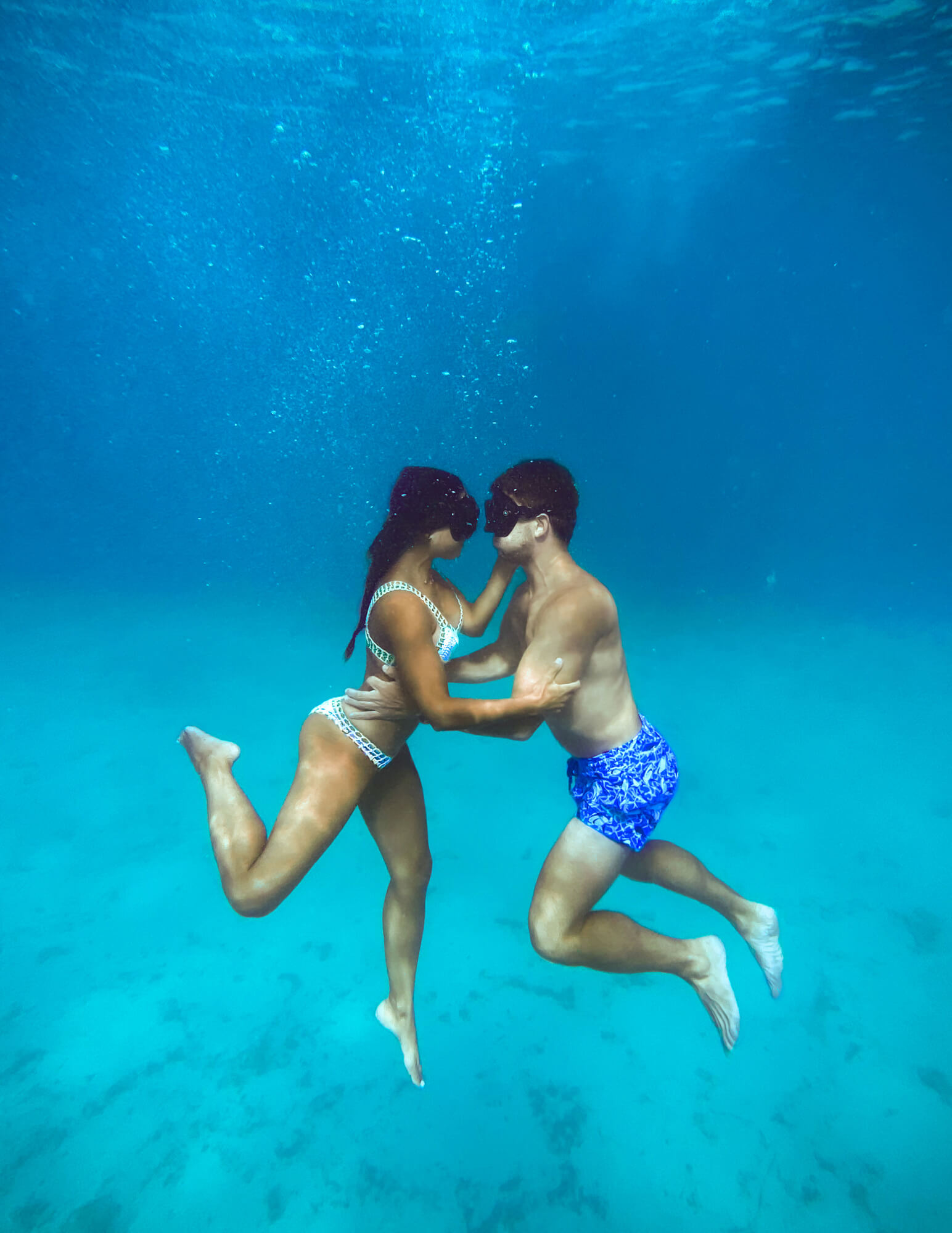
How do you manage to balance your time between the UK and Croatia? Has Brexit affected in any way the way you travel between the two countries?
I like to be in Croatia during the summer, so I can enjoy the sea and beaches. It’s where I experience the most joy. Since I got my driving license, I have been planning my life in a way so I could spend the maximum possible time in Croatia every summer. To my surprise, neither Brexit nor Covid19 has affected my travels to Croatia. I have dual nationality. Croatian and British passports and therefore was legally allowed to travel to go to either home. With negative PCR test results, I drove England to Croatia three times during the pandemic. When you have a registered photography business in the UK, going to Croatia to shoot photos is a legitimate and valid reason to travel for work too.
How would you describe the personal style behind your photography? And how about your visual style?
I want people to look at my photographs, and simply desire to be right there in the place their eyes are seeing. To imagine themselves living the moment being shown. My photos need to mentally seduce and show the essence of an Adriatic summer experience in Croatia. People think my visual style is really unique, but it’s a classic beachscape visual style used in travel magazines and by some of the world’s most known beachscape photographers for decades.
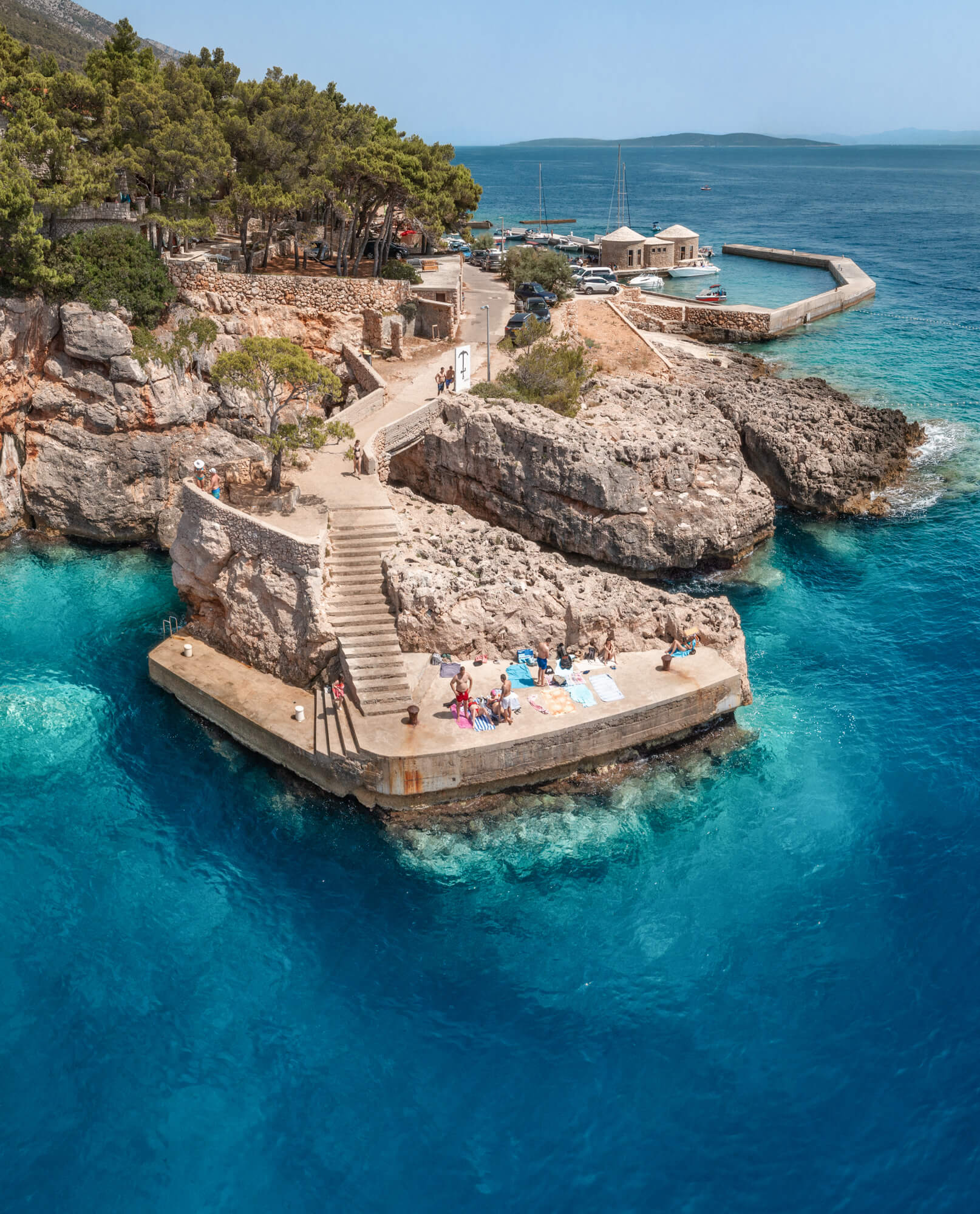
Sveta Nedjelja beach, Hvar (Photo: Timotej Gošev)
It is a beautiful summer day in Croatia, how does Timotej spend it from start to finish?
I like to wake up early. No need for coffee. I really believe in seizing the daytime. I want to be the first on the beach. Put my towel in the best spot, and go for a morning swim to truly wake up. Love soaking in the early morning sun too. Around 9 am, it’s time for a light breakfast, and then back to the beach where I’ll stay until lunchtime being as active as possible. I prefer to stay in apartments, so for lunch, it’s usually time to cook something, rather than eat out. After lunch, it’s back to the sea/beach until sunset. The afternoon is usually about exploration. Then shower, dress up a bit and go to town for dinner and some ice cream. I always end up chilling on apartment terraces late into the night, always in good company getting into deep conversations.
It has happened to me on several occasions that I have decided to put my camera aside so as not to miss the experience. How do you manage to consistently create content and live in the moment at the same time? Do you have any advice for other travel photographers?
It’s actually very simple for me. When I go to a place in Croatia, I am not going there to take a picture. I am going there to enjoy the experience and moment of being in a place which brings me total joy. I live the moments fully with my camera at home, or in my backpack. After I enjoyed the place, explored it, I come back with/take out a camera. Also, I don’t live from making social media content and I don’t have any pressure to create content. My advice to travel photographers is that when you decide to shoot a place, make a decision to spend at least 1 week there. Don’t follow the content creator crowd, and a lot of Croatian photographers, are doing this, in that they go to a spot for a few hours with the purpose of taking a photo and then off to the next location.
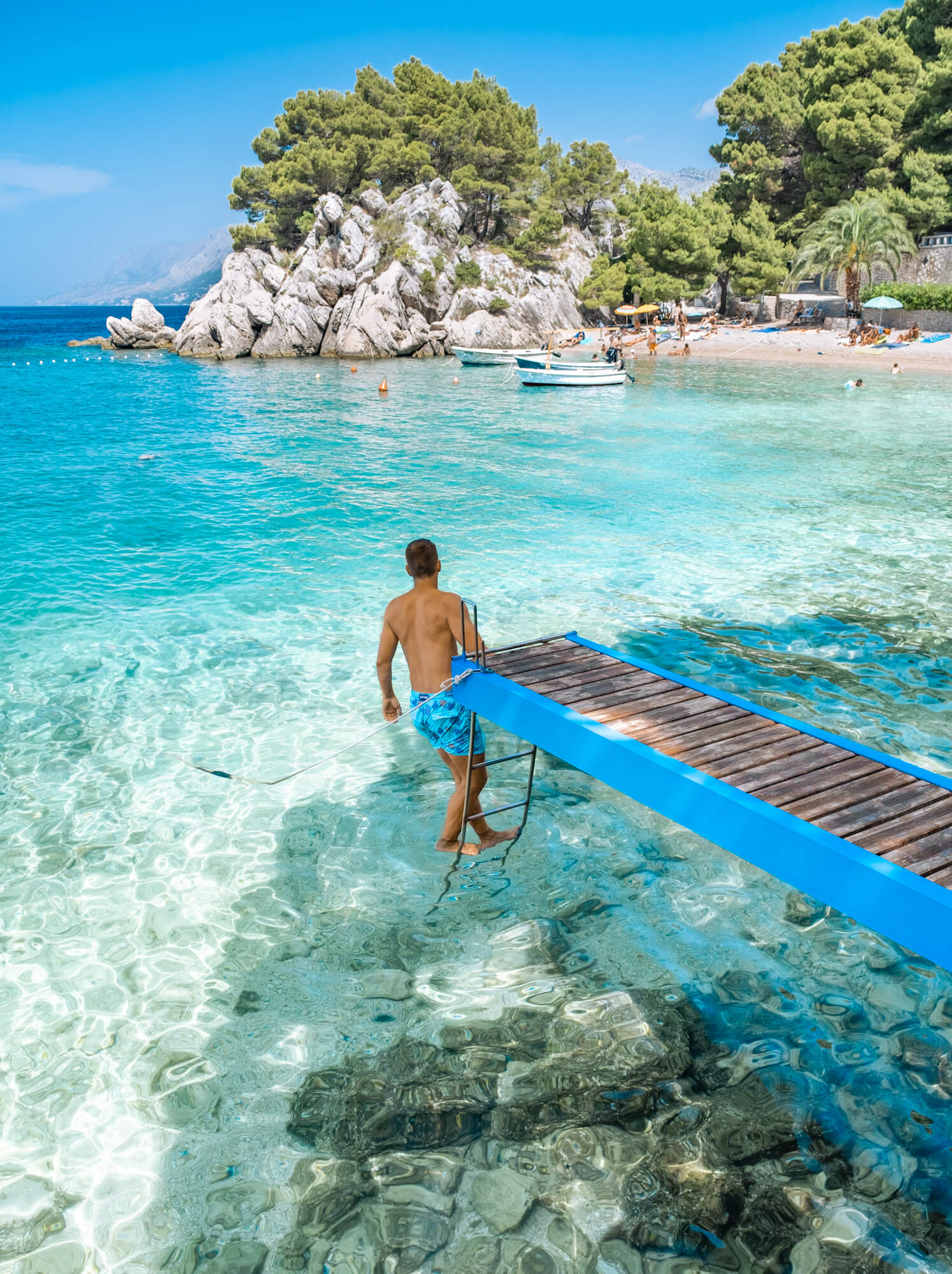
Brela, Dalmatia (Photo: Timotej Gošev)
A photographer was telling me how they photographed every nice spot on Korcula Island in 1 day. Don’t make this same mistake. The world’s most famous beachscape photographers, when shooting a particular area, commit to spending a whole summer season there, chasing the billion-dollar shot, as we say. I can’t commit to a whole summer in one spot yet either, but everyone can do 3-7 days. 1 to enjoy without smartphones and cameras at least.
It could be said that you lean more towards photography of landscapes and places, but would you like to also venture into a type of travel photography where you can also highlight the Croatian people, their traditions, and their customs?
My focus is the Ljeto (Summer) in Croatia. The goal is to photograph and show the summertime experience. Naturally, there is a lot of landscape shots. But if you have been following me for a while you also see the entire summer experience. If I go into town at night and see a cultural dance, or traditional outfits, if I like what I see, I will photograph it. But right now, the priority is to show beaches and nature, accommodation, and things one can experience when visiting Croatia in the summer. I am showing what my audience wants to see.
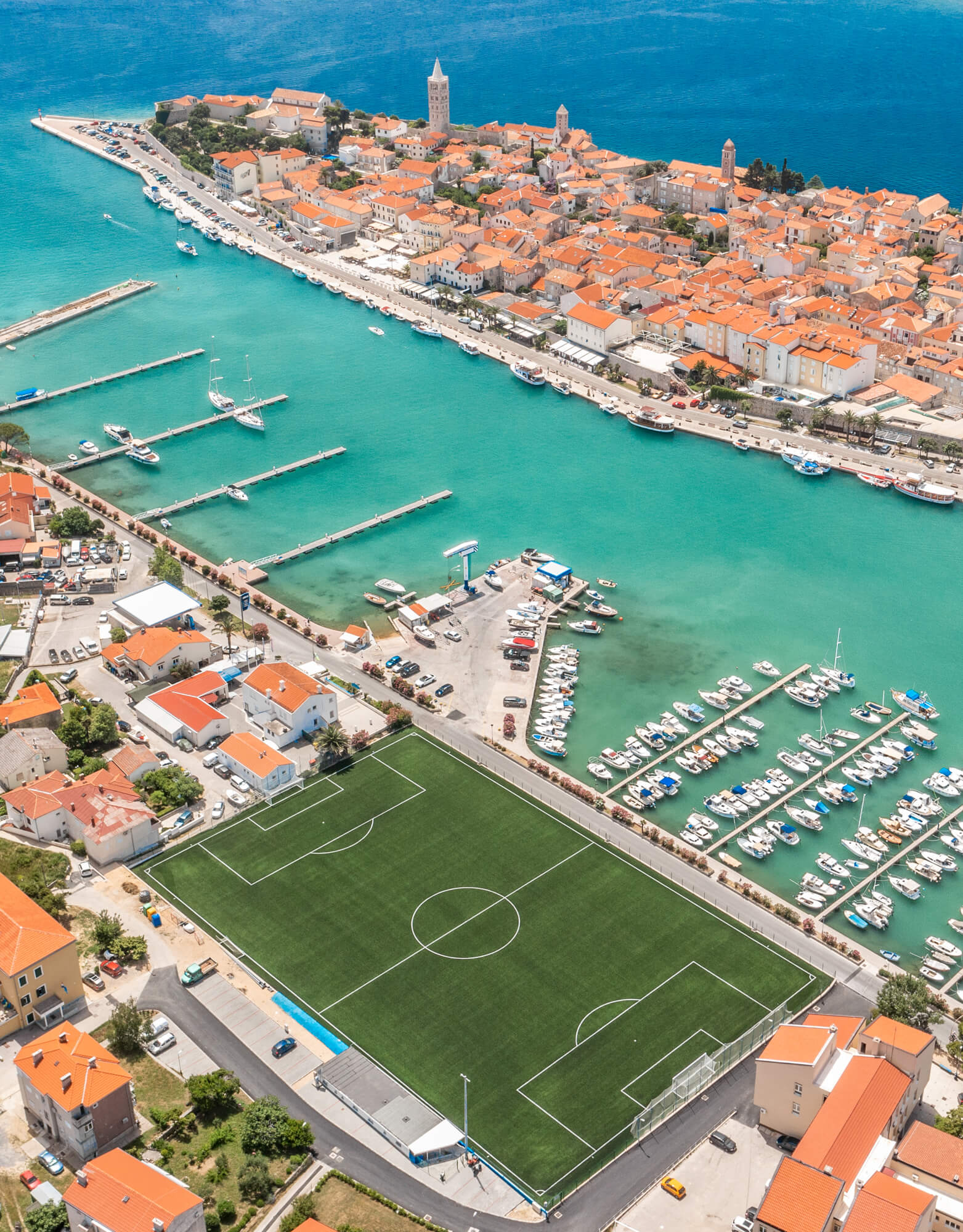
Town of Rab (Photo: Timotej Gošev)
However, if Drago Sopta retires, I would gladly like to venture off and take over as the photographer of the Croatian National Football team and take pictures of the guys playing football. I believe in myself as a photographer, and my ability to shoot in a variety of styles.
It is said that there is an excessive amount of drone images to visually promote Croatia and that they do not accurately reflect the possible experience of a tourist (for example Izvor Cetina or the Croatian islands from above). But you manage to combine both images with a drone as well as those from a personal point of view. How can both promote tourism in Croatia?
Look, Zlatni Rat Beach shot with a drone, from above, looks like one of the most beautiful spots in this world. It’s unreal. Then you come there, stand on the beach, and you can’t really see it from the vantage point the drone did. So you now have two options. The first is to get upset, choose to be negative, and leave disappointed, as many do. Or you can think about it, and say to yourself, I’m standing on this magical beach full of shape-shifting pebbles, surrounded by perfect water, and enjoy the beach all day. Every destination spot in the world that looks good from above is excessively photographed with drones. Those saying it doesn’t accurately reflect the tourist experience are a very small minority, and they are there for the wrong reason in my opinion. I believe you need both to give the true picture to someone. Let them know what it looks like from above and below. Balance is key. I like to show how it looks from ground level and from the sky.
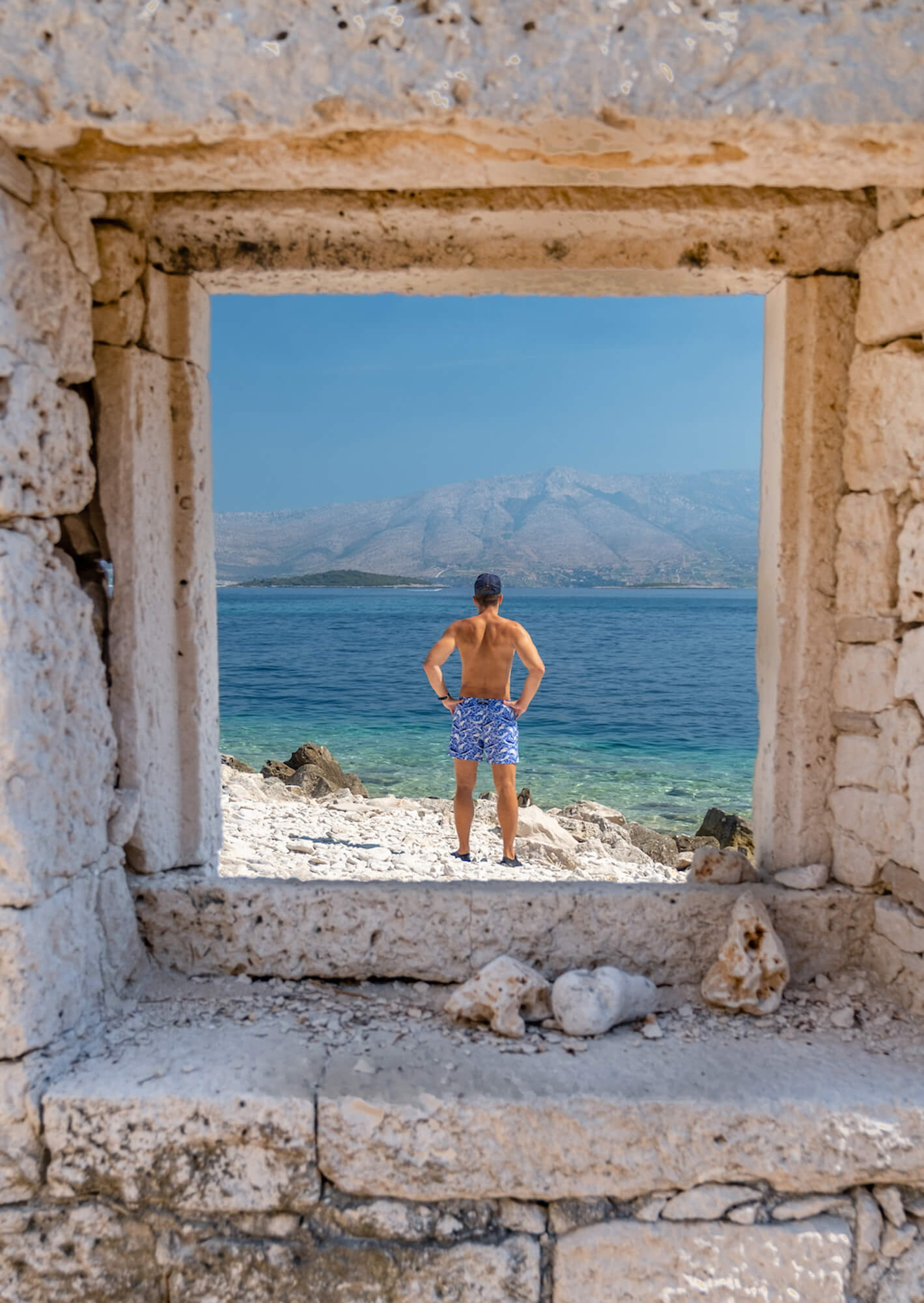
Otok Vrnik (Photo: Timotej Gošev)
Many content creators avoid bringing discussion topics to their feed to avoid losing followers or getting into disputes with them. But in addition to visually promoting Croatia, you also take the time to raise awareness about caring for the environment, such as animal rights and the situation about smoking in Croatia. Is it necessary for content creators to be ambivalent in that regard? What responsibilities should someone with so many followers and a lot of reach assume?
I always speak my mind. From day one on Instagram. I have my opinions, and my account is a space where I can share them as well as my photography. I don’t expect everyone to agree with them and that’s okay. Does Croatia have a smoking problem? Yes. Have tourists noticed it? Yes. Is it destroying our beaches? Yes. A lot of what I highlight are facts and truth. Common sense. It’s already been said by others, and it’s very much connected to keeping Croatia’s land beautiful and not destroying it. I don’t live from Instagram, so if I lost all my followers tomorrow, it does not affect me in any way. As for disputes, occasionally some arise, but surprisingly not a lot. I think the things which I’m highlighting are things the overwhelming majority of my followers agree with me on. We all want to keep Croatia clean and beautiful for generation after generation.

One Table Restaurant, Hvar Island (Photo: Timotej Gošev)
Regarding the promotion of tourism in Croatia, what aspects and efforts made by the national and local tourist boards in the last two years can you highlight?
I don’t see anything the National Tourist Board does, and as the majority of the tourist sector in Croatia, see them as irrelevant, and a waste of taxpayers’ money. The Local Tourist Boards, on the other hand, are great. I’ve had the chance to work with a lot of them now. It’s hard to keep everyone happy, but they are doing their best. I can say and see they are finally embracing social media, and valuing its importance more than ever. Making sure they have a strong social media presence, as well as using people like me, and other Croatian photographers to showcase their tourist regions to the world.
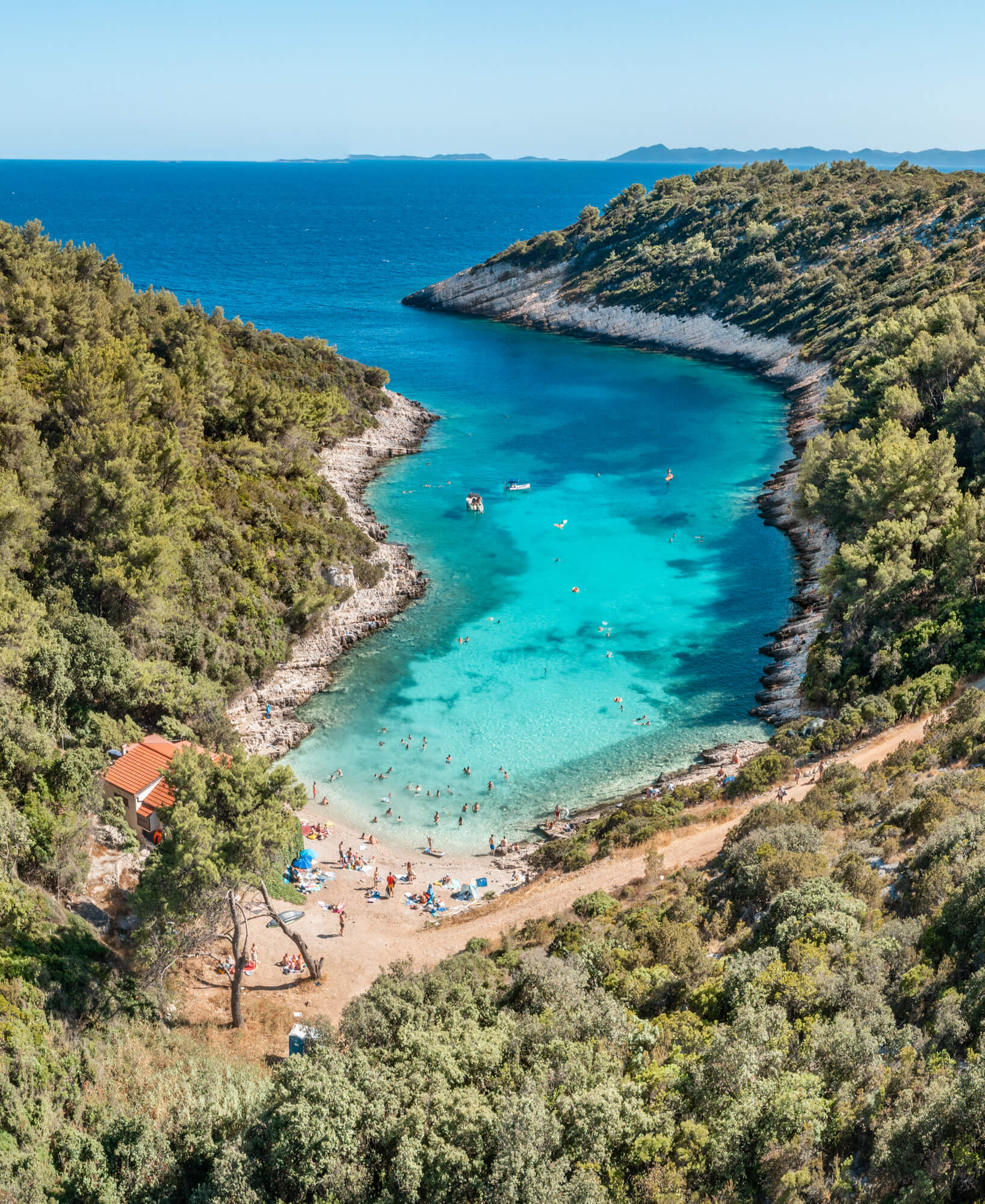
Žitna Beach, Korčula Island (Photo: Timotej Gošev)
In what aspects do you think the promotion of tourism in Croatia should improve? Is there something you can criticize?
The biggest issue I noticed is the relationship between the local tourist boards, and the locals working in the tourist sector. It seems everyone is against the tourist boards and everything they do, with only a small minority pleased. I’ve been to places, and I like to talk to locals, and the moment they find out I’m involved with the local tourist board, they don’t want anything to do with me! Why? Well for starters Local Tourist boards should have nothing to do with political elections and political parties. The tourist boards should exist to serve the tourist, those offering tourist services, and they should be neutral. Also too many tourist board employees, naturally have friends working in the tourist sector and thus drive tourists to only use their services. I think you can guess what kind of issues that can create. The tourist boards should be the pride of the local tourism sector. A fair helping hand, letting the tourists know all their possibilities. Show them all the options on offer, and let them choose which to go with. I also really think it’s time for an official tourist app, where everyone in the tourist sector can list their tourist offers for free. Create it with taxpayer money. Tourists can use the app to find out and search for everything. Beach information. Boat rentals. Taxi numbers. Available accommodation. In 2021, one shouldn’t have to go to a tourist office for information anymore.

Badija Island (Photo: Timotej Gošev)
In what ways can photographic content contribute to effective tourism promotion in Croatia? How important is it?
People travel to different places in the world for different reasons. Everyone is looking for something specific. An image they have seen either in a photo or video usually serves as the primary mental motivation for doing so. They want to see that image with their own eyes. I have always argued that people come to Croatia first and foremost for the natural beauty of the sea and beaches. The old towns. Natural parks. I loved our old tourist slogan, the Mediterranean as it once was. So, before booking a flight or hotel, people want to know what the particular area they are potentially going to visit has on offer. I have been the first Croatian photographer to share certain places in Croatia on Instagram for the very first time, and the response was, we had no idea this place existed.
I’ll give you a personal example. I grew up spending summers around Zadar. Since I was a kid. Only recently as an adult, I discovered one of the most beautiful spots in Croatia. Vrsi, right by Zadar. I never saw this spot advertised anywhere. So I never went there. Some beaches like Zlatni Rat were advertised everywhere, so normally, I went there, and it was crazy crowded. By showing a little bit of every place, you are now giving people the choice to go to so many places.
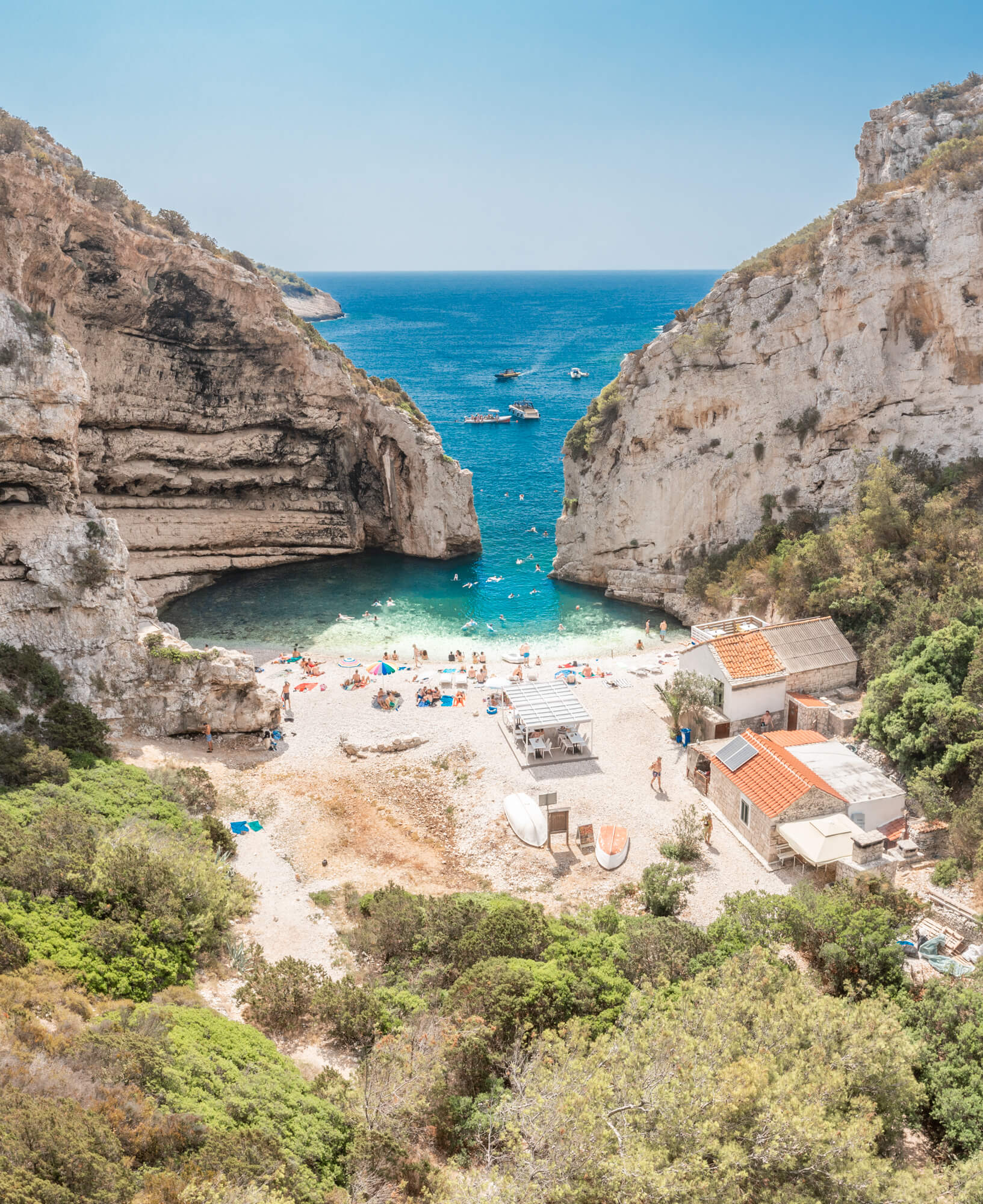
Stiniva Cove, Vis Island (Photo: Timotej Gošev)
If you could describe Croatia to your followers as an ideal travel destination, based on five unique aspects, which ones would you choose?
1. Raw natural beauty everywhere. 2. The crystal clear blue water. 3. Safety. We are an extremely safe country for tourists throughout the day and night. One of the lowest crime rates in the world I believe. 4. Quality of food and drink. 5. There’s something for everyone.
Is there anything in particular in Croatia that catches your attention and would you like to investigate further? I have seen that at some point you inquired about the history of abandoned stone houses on the Croatian coast and islands. It is really a fascinating subject.
The abandoned stone houses are a sad story. I really hope the property ownership laws change soon. They are killing Croatia. A lot of people say it’s impossible. But I believe there’s an easy fix to it if you apply common sense. Pass a law, that every property in Croatia within 2-3 years has to have one owner owning 100% of it. No more multiple owners, owning small percentages. If some owners can’t agree on a deal between themselves, it goes to auction among all the owners, and the highest bidder gets the property. Why hasn’t this happened? I hear lawyers in Zagreb make a killing on these property disputes. I also think Croatia has a serious waste management problem. Especially on the islands. I’ve heard shocking accounts from those who live on the islands about what really happens with the waste tourism generates. I think the situation is worse than many believe. And if that’s really true, we need to do something about it. I truly believe the world sees Croatia as a clean country where natural beauty can be seen in abundance which is its biggest selling point. The land is really ‘Lijepa Naša’ and it needs to stay that way.
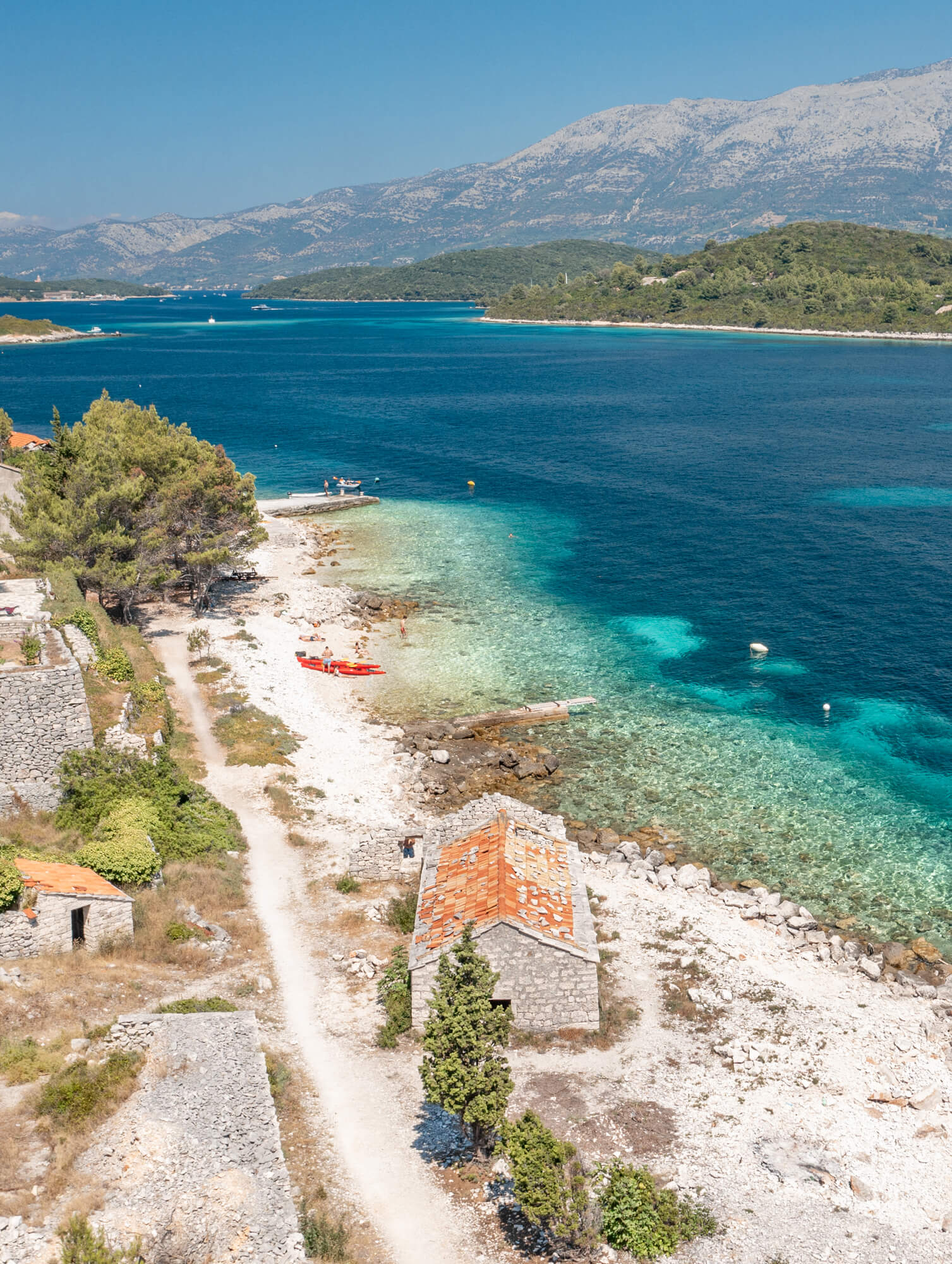
Otok Vrnik (Photo: Timotej Gošev)
Connected with this issue are the party sailing trips such as The Yacht Week. Everywhere they go, they leave so much rubbish behind it's unreal. In the sea. I’ve seen it. Again and again. All the locals I meet in the entire tourism sector as well as those simply living in the spots The Yacht Week comes by, wants these party sailing holidays banned. It’s beyond me how this hasn’t happened yet. Whoever is giving them the green light to continue summer after summer needs to be put in the spotlight.
Besides being a travel photographer, do you also consider yourself a travel journalist? Many content creators upload their photos or videos and that's it, but you like to include reflections, chronicles, and recommendations alongside your images. Is it something that you are interested in developing further in the future?
I grew up reading travel magazines like Conde Nast, and I currently collect travel-themed coffee table books full of pictures with text. There’s always a story behind what you see in a photograph and something to learn. I do consider myself an excellent writer in the English language. People have noticed this, and this past year, a few travel magazines and a national airline, asked me to write for them about Croatia, as well as showcase my photography to their readers. I hope more people will ask in the near future. It’s something I love doing.
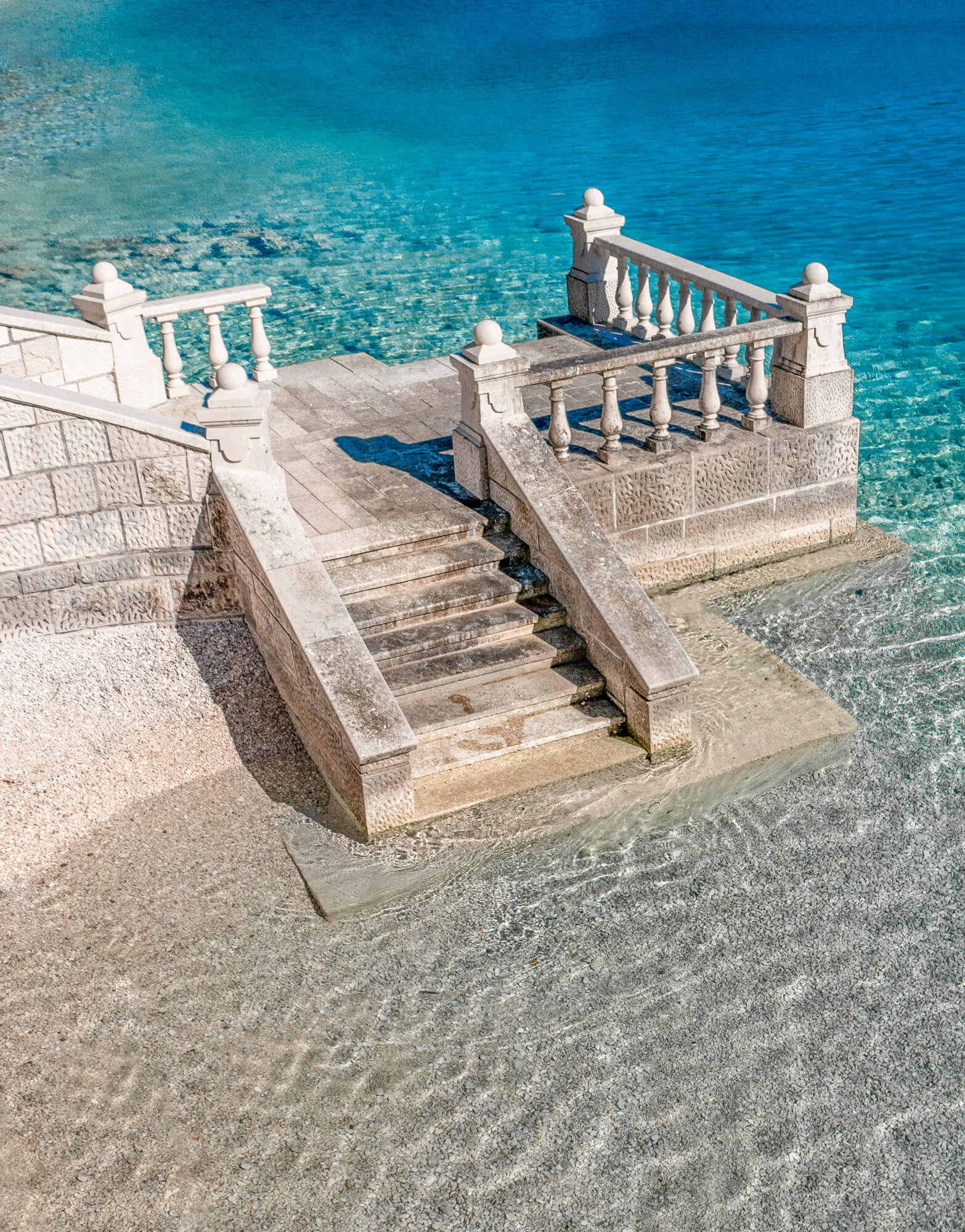
Čikat Bay, Lošinj Island (Photo: Timotej Gošev)
What does your Instagram profile look like on a summer day in Croatia? How do you usually interact with your followers or people who need help or recommendations?
During the summer the plan is to share 2-3 posts a day. The pictures being posted are usually what I photographed 1-2 days prior. Also, because we are in the summer season, many of my followers are currently in Croatia, or about to visit. This results in a crazy amount of questions. I used to answer every question without fail in previous years, but with an increasing number of followers, it’s impossible sadly. Remember I’m not getting paid to do this. It takes a lot of time. This summer I was receiving roughly 300-500 messages a day. A lot of people also don’t read the caption in my posts and then send messages, for example, asking what’s the name of the beach in the picture I just posted, without making an effort to read the caption where this has already been stated. This is very frustrating. However the questions generally are usually based on recent posts, so I try to answer a lot of them in one of the next posts or stories.
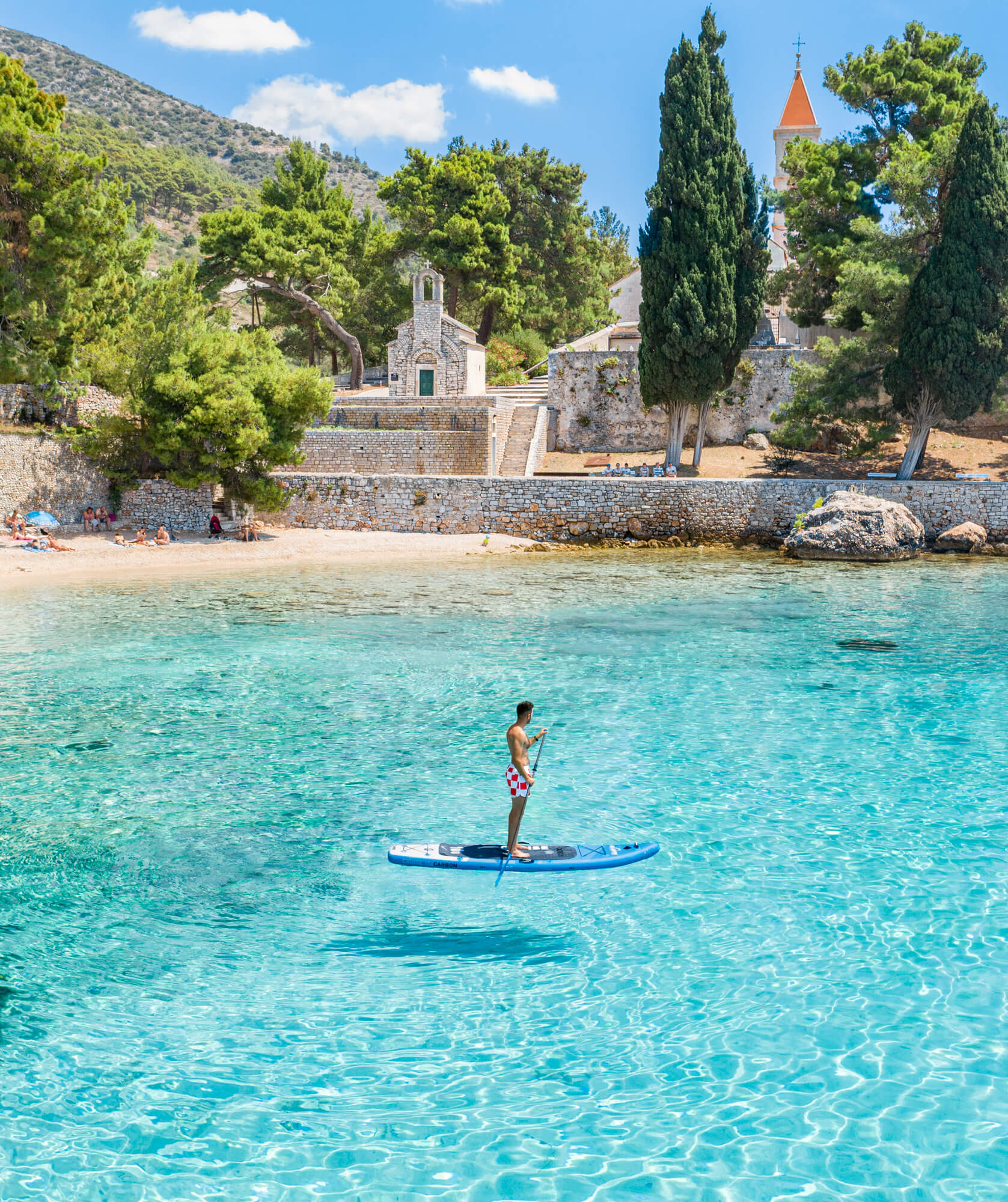
Bol, Brač Island (Photo: Timotej Gošev)
Besides photography, what other things do you spend your time on? Do you have any other interests or hobbies that are just as exciting?
Out of the summer season, I live in England, so when I’m not working, I really love to play sports. I play football, basketball, volleyball every week, competitively. Then there’s gym and lap swimming. I’ve always been into cooking too. So, always trying to master certain dishes and learn new ones. In the summertime, besides photography, it’s very much every activity connected to the water. I’m a big water sports lover. I love diving. I’m a very active individual. I love the company of friends too. I’m a very social extrovert that likes to laugh a lot.
What next projects do you have planned? What are the next steps in Timotej's life and career?
Oh, I have a lot of ideas. Some are already slowly turning into reality. I would love to see more art stores around the world selling my prints of beautiful beachscapes from around Croatia. At the moment it’s just a few in England. As well as being a good photographer, I also believe in my ability to capture video, so expect to see some epic short films soon. I’m also already working on my very own coffee table book taking you on a journey around Croatia’s coast and islands. I’m really excited for this. I have the photographs and text, and just need to find the right publisher to make the dream come true. Lastly, due to demand, I think I will slowly get into trip planning. So many people want me to plan their visit to Croatia. I’m honoured.
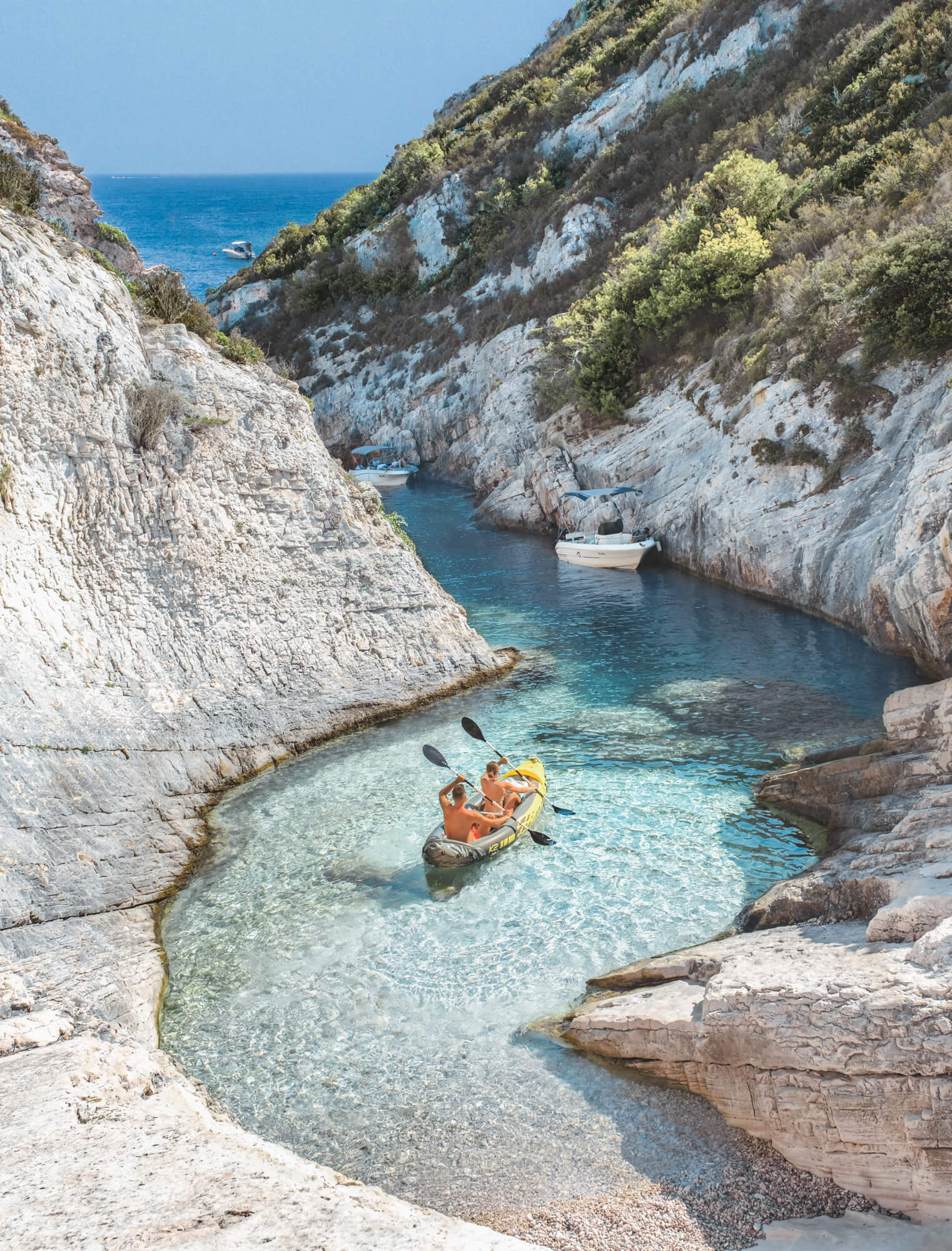
Pritišćina beach, Vis Island (Photo: Timotej Gošev)
Your talent as a photographer, and your Instagram account, have resulted in many collaborations over the last few years. What’s your favourite one so far? Is there one you would really love to do in the future?
It’s hard to pick a favourite. I love them all. This past summer I did a collaboration with Valamar Hotels. Had the chance to visit all their hotels across Croatia over a period of 6 weeks. It was amazing. Shooting the hotels, rooms, beaches in front of the hotels. The facilities. Loved every second. The sailing collaborations are always unforgettable too. What would I love to do? Shoot Villa Sheherezade in Dubrovnik. Or shoot a mega-yacht in Croatia. I dream big.
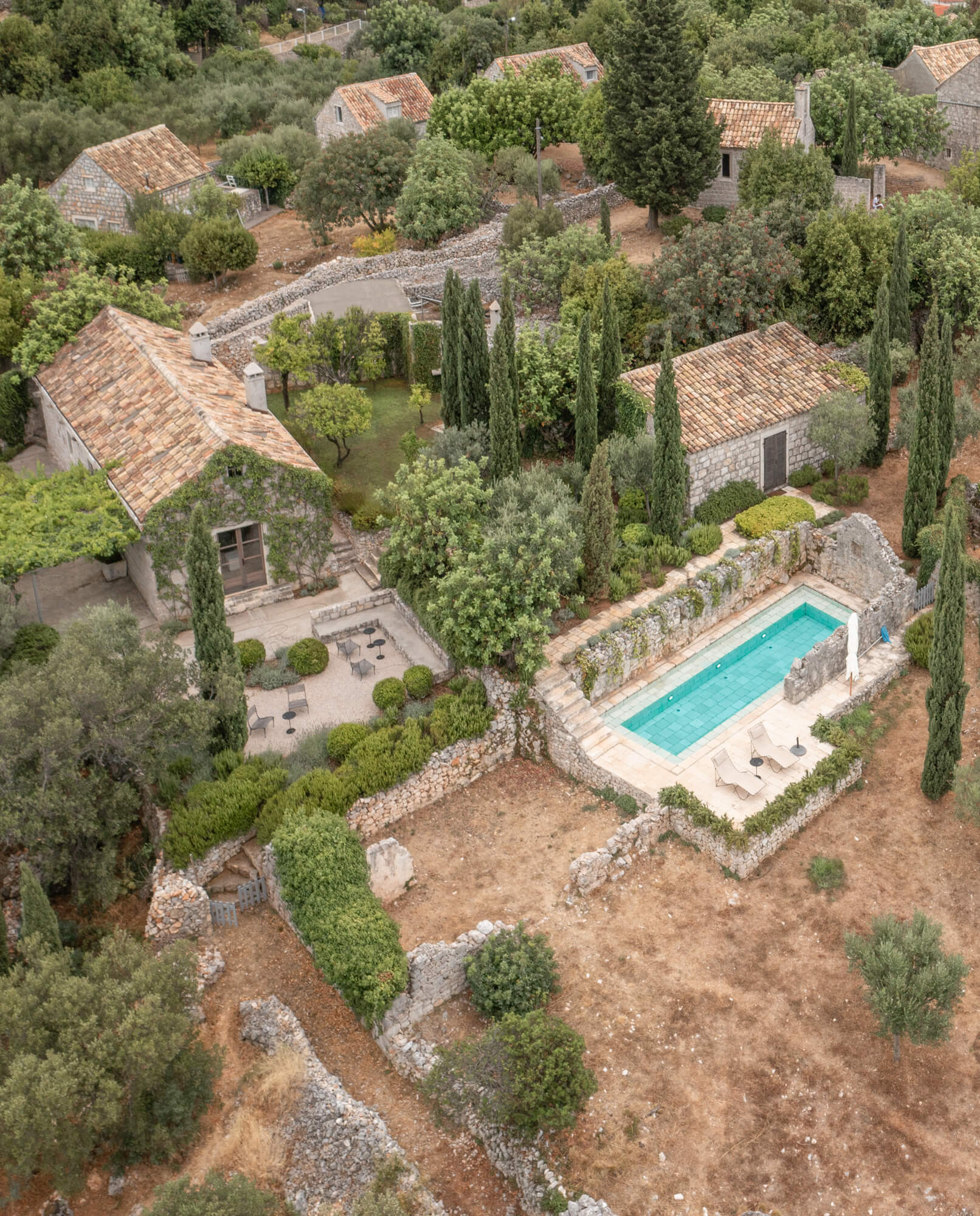
Lopud Island (Photo: Timotej Gošev)
Finally, are you planning to ever move to Croatia permanently?
If you ask me, “Timotej, would you like to live in Croatia one day?” The answer is obviously going to be a definite yes, yes I would. However, I wouldn’t want to live there throughout the whole year. I can see myself living there between April and October. I’m the type of person who dreams of having multiple homes. At least two in two different countries. But in life, you should also never say never. If the right opportunity arises, who knows, I might end up living in Croatia all year long. Living there would give me the chance to photograph Croatia during all the seasons, and not just summer.
For everything you need to know before planning your next summer vacation in Croatia and all these magical destinations shown in this article, be sure to check Timotej's Instagram account and our new guide to everything Croatia, Total Croatia, here.
If you don't have Instagram, follow him on Facebook.
For more on lifestyle, follow TCN's dedicated page.
For more about Croatia, CLICK HERE.
VIDEO: New Footage Shows Incomparable Beauty of Korčula Island in Summer
November 13, 2021 – Beautiful beaches, wonderful nature and the atmospheric stone-paved streets of Korčula Town are showcased in this new video of Korčula island in summer
Croatia is known as a sailing paradise. With hundreds of islands and thousands of kilometres of picturesque, historic shorelines to explore, definitely, it is among the prettiest places to discover by boat.
But, ask any sailor where in Croatia is the most beautiful destination to sail to, and those who know will tell you it's Korčula island in summer. The approach to the island - with Korčula Town gradually becoming bigger, more impressive as you draw nearer - is a treat that's unmissable for anyone who enjoys sailing.
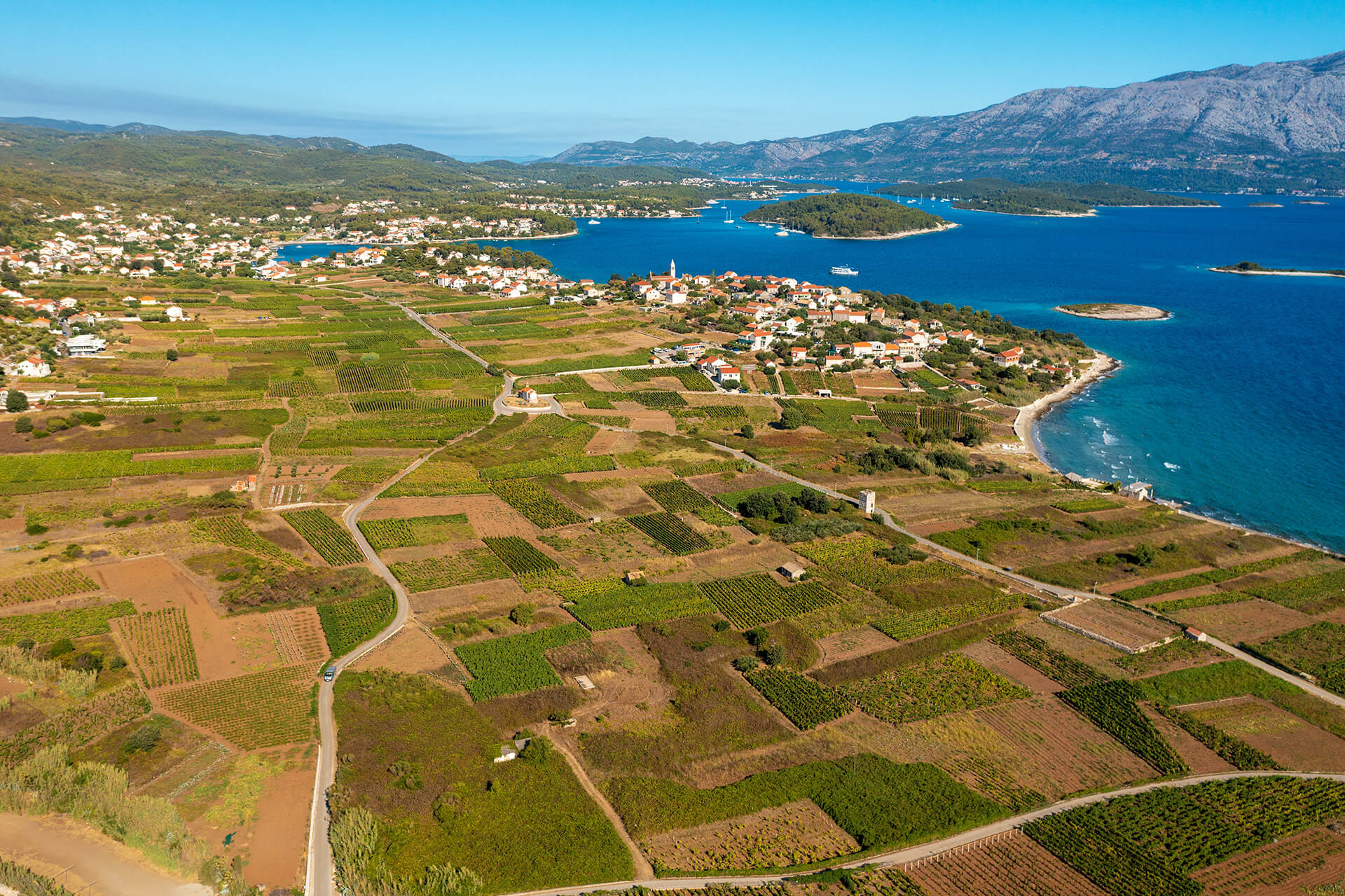 From above, a spectacular panorama shot of Korčula island from summer 2021 © Goran Šafarek
From above, a spectacular panorama shot of Korčula island from summer 2021 © Goran Šafarek
Korčula island in summer doesn't stop being beautiful after you land, as we can see in this new video released by Croatian photographer and video maker Goran Šafarek. The new footage shows us the magical atmosphere of Korčula Town. We are led through its historic stone-paved alleys, past al fresco diners enjoying the long lunchtimes in Korčula's relaxed restaurants and taverns.
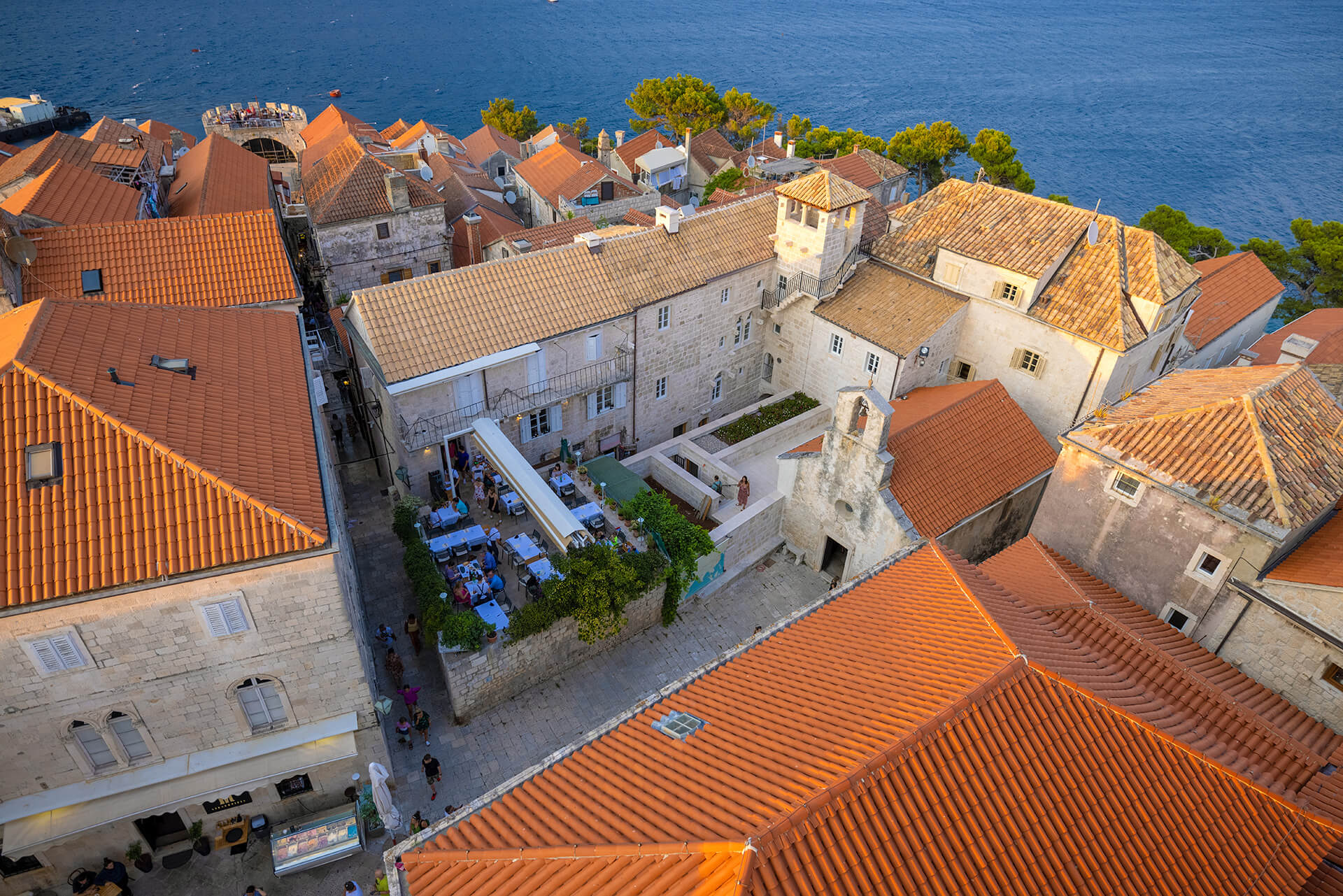 From above Korčula Town in summer 2021 © Goran Šafarek
From above Korčula Town in summer 2021 © Goran Šafarek
Goran Šafarek started his career as a biologist. So, in his new video we see lots of the nature and natural assets of Korčula island in summer. These days, Goran works as an independent biologist, publicist, photographer and filmmaker. He shot the footage for his new video during a trip to Korčula island in summer 2021. You can check it out below.
Both the author and Total Croatia News would like to thank Goran Šafarek for the kind loan of his photography and video to make this article
If you would like to keep up to date with news from Korčula, be sure to see Total Croatia News's tagged pages here
Croatian Gajeta Photo Becomes Official European Union Postcard
October 28, 2021 – A Falkuša gajeta from Komiža on Vis island and a Betina gajeta from Murter are shown in a competition-winning Croatian photograph which will now become an official European Union postcard
If you're reading this, chances are you already know Croatia is very often 'postcard-pretty.' Well, it seems you're not the only one to think so.
One Croatian photographer's work has won over judges in a competition to find an official European Union postcard. The photograph (main picture), taken by Hina journalist Andrina Luić shows two sailing boats – a Falkuša gajeta and a Betina gajeta. Both are traditional wooden ships commonly seen in Croatian waters. In the background, the Betina gajeta is instantly recognizable as Croatian because its sail carries a red and white checkerboard pattern.
European Union postcard competition
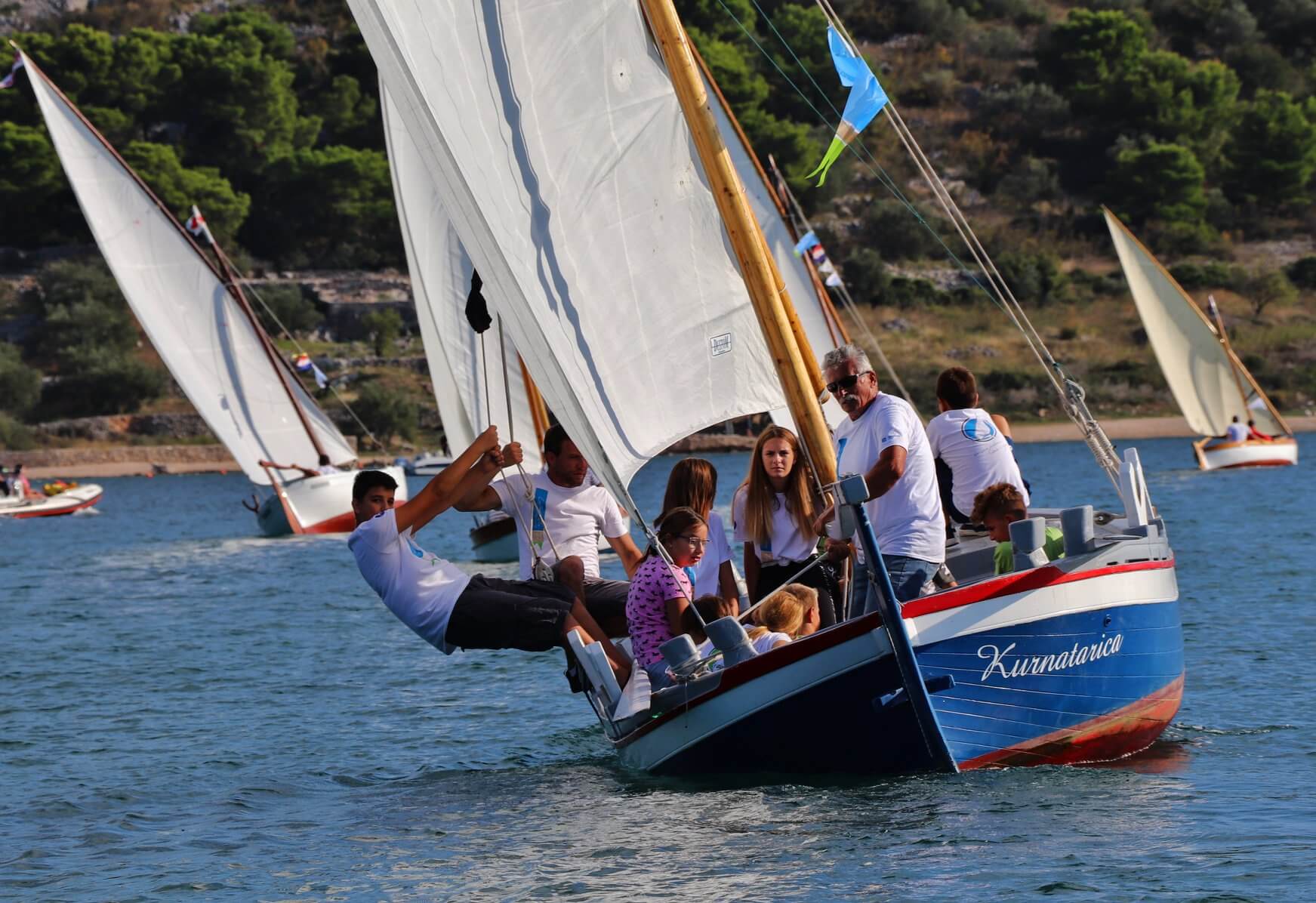 © Dani u Vali
© Dani u Vali
The 'Greetings from the Islands' photo competition was published in September by the European Commission's Clean Energy for EU Islands Secretariat (here). Andrina, who is from Lukoran on Ugljan island, took her winning photo two years ago in Stari Grad on the island of Hvar. The sailboats were snapped during the festival of ships, sea and sailors 'Days in Vala' (here). The event is organized by Cronaves of Split, of which Andrina is a member. They are a society with an aim to promote Croatian maritime heritage.
Andrina's photograph will now help promote Croatian maritime heritage all across the continent. Thousands will see the traditional wooden ships and their sails when the image is made into an official European Union postcard. The picture triumphed above other island photo entries from Italy, Spain, Germany, Portugal and elsewhere in Croatia. The evaluation criteria were originality, creativity, overall artistic impression and composition, and visual appeal. Each competitor was only allowed to enter one photo into the competition. It would seem that Andrina - who has been taking photographs for many years - made exactly the right choice.
Falkuša gajeta from Komiža on Vis island and Betina gajeta from island Murter
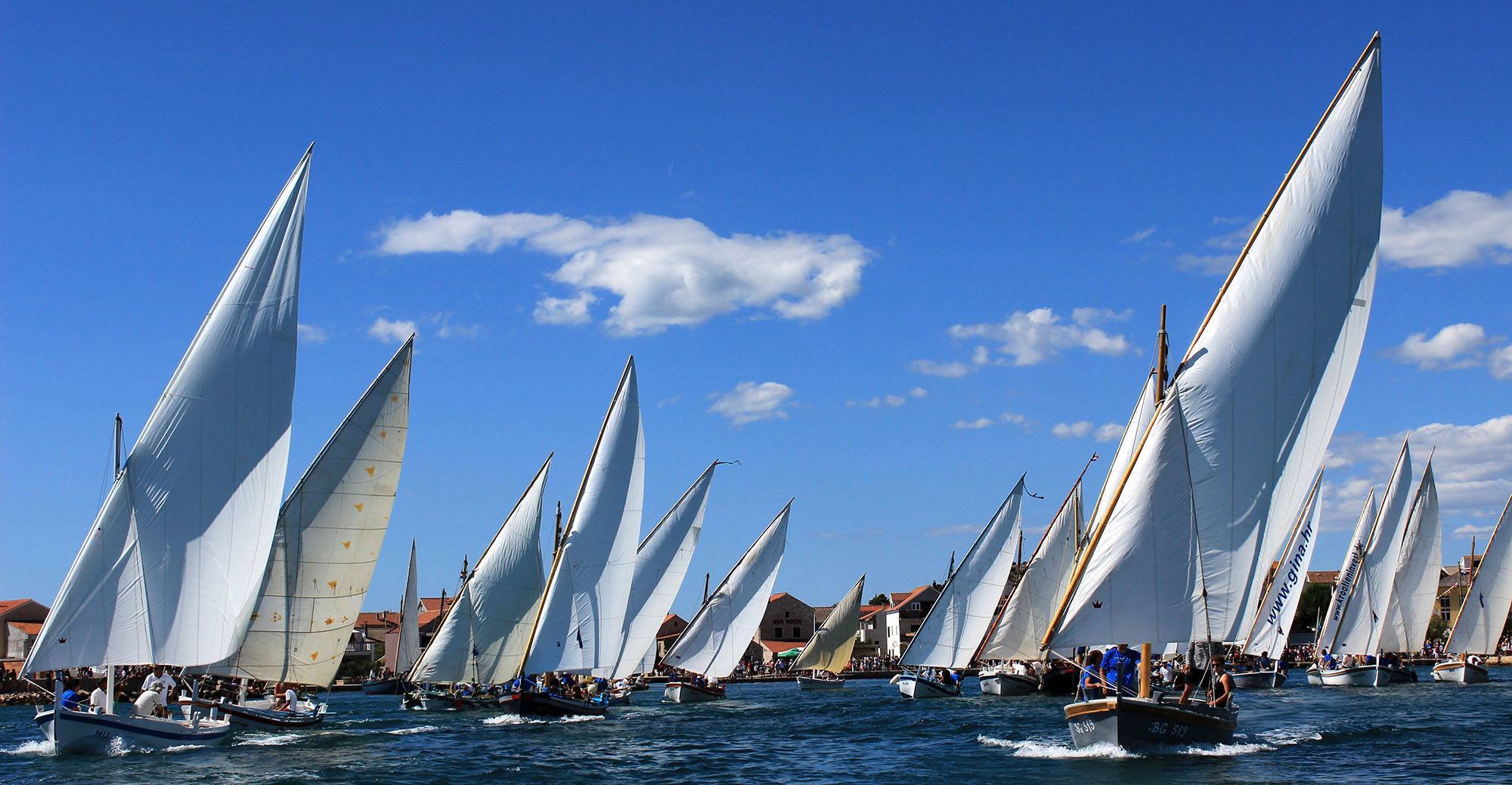 Traditional gajeta ships from Betina in a regatta around island Murter © Neven Jović
Traditional gajeta ships from Betina in a regatta around island Murter © Neven Jović
A Falkuša gajeta is a thinner and faster version of the Murter-style gajeta. Falkuša boats have been used for fishing in the area of islands Vis and Korčula since at least the 16th century. They were adapted to the needs of fishermen from Komiža on Vis island, who would regularly travel far out into the open sea - as far west as the Palagruža archipelago - to chase their catch.
The template of these boat designs was taken to Betina on Murter island by Korčula shipbuilder Paško Filippi in the first half of the 18th century. There he founded a shipyard and began building his boats, adapting them to the slightly different climate and the very different needs of the locals.
The people of Murter and its surroundings needed a boat as much for transportation of goods as they did for fishing. Therefore, the Betina gajeta was made stronger, wider, bigger and more load-bearing, with a deck at the bow and stern. They were commonly used to transport goods between Murter and estates on the Kornati islands.
You can today visit an award-winning museum (here) dedicated to the history of this wooden boat building in Betina, island Murter. Or, if you can't make it there any time soon, you can now make do with one of Andrina's postcards until you can.
Korčula Hosts Conference on Renewable Energy Projects on Islands
ZAGREB, 23 Oct, 2021 - Energy transition has become a major topical issue on Croatian islands, notably large ones such as Krk, Cres, Lošinj and Korčula, over recent years, however, local inhabitants need more education and information on the matter, heard a conference held in Korčula last Thursday and Friday.
Islands are areas where the need for energy self-sufficiency is more compelling than elsewhere, and in the case of Croatian islands it is even more conspicuous during the tourist season in summer when glitches in electricity and water supply systems are more frequent, it was said at the conference, organised by the Movement for Islands and the Clean Energy for EU Islands Secretariat.
"Although they are faced with specific challenges, islands are in a unique position to be front-runners in efforts to achieve energy transition, thanks to abundance of renewable energy resources," said Antonia Proka of the Secretariat.
During the secretariat's two-day academy, experts discussed financing tools and mechanisms as well as citizen engagement in energy transition.
The implementation of clean energy in the farming and tourist sectors, which are dominant on islands, reduce operating costs and boost the competitiveness of businesses in those sectors.
Also, improvements in waste management on islands can be attained by implementing clean energy technologies, it was said.
A great challenge is insufficient awareness of islanders and inadequate education. Although over recent years a series of successful projects have been launched, transition to clean energy on the Croatian islands is still slow.
The conference presented the example of the island of Samso in the Kattegat sea area between Denmark and Sweden, which has been successful in the use of renewables since 1997. A part of the local wind parks on that Danish island belongs to the local model renewable energy community. Now 100% of its electricity comes from wind power and biomass.
In 2000, the local community established the Samso Energy Academy, which today serves as a centre for development of technologies and a meetinghouse for knowledge and solutions.
Participants in the Korčula conference called on the Croatian authorities to organise energy transition seminars, conferences and training for local population.
For more on lifestyle, follow TCN's dedicated page.
For more about Croatia, CLICK HERE.
Korcula Tourism Exceeds All Expectations, Post-Season Looking Promising
October the 14th, 2021 - Korcula tourism this year has exceeded all expectations, much like the truly remarkable (if somewhat incidental) Croatian tourism season has overall, especially when compared to 2020. This Dalmatian island claims that it can attract foreign visitors throughout the post-season, too.
As Poslovni Dnevnik/Marta Duic writes, after the end of the traditional summer tourist season on the island of Korcula, which exceeded all expectations, one of the southernmost Croatian islands showed how to attract tourists even during the off-season.
Hana Turudic, director of the Korcula Tourist Board, revealed that this year, Korcula tourism realised as much as 77 percent of the overnight stays realised back in pre-pandemic 2019, guests stayed on average for five to six days, and the number of overnight stays was also surprising in terms of Croatian guests. Flights to the UK and the US also opened in September, allowing for even more arrivals.
''We've been focused on enogastronomy during the off-season, our island is known for its wine tours, the indigenous varieties Rukatac, Posip and Grk are increasingly recognised and appreciated, and we're also known for our local food. There are about 30 active family farms on the island of Korcula who offer a wide range, from olive oil and honey to organic fruits and vegetables and products that they process such as marmalade, juices and drinks, and many of them are labeled as Croatian island products,'' explained Turudic.
She also revealed that Korcula tourism has started a project of bicycle routes along the entire island. ''Guests who aspire to have a more active holiday, in this case cycling, usually come in spring and autumn as it's cooler. The routes we're preparing will be 350 kilometres long and will be wound through all the settlements of the island, and the ACI Marina Korcula is also nearing completion, which will bring us new guests in the nautical tourism segment. We hope that soon there will be accompanying facilities for our boaters,'' Turudic pointed out, noting that Peljesac bridge will soon provide guests with easier access to this destination throughout the year.
The island is also home to many digital nomads, and in the last five years, gorgeous Korcula has become a sought-after destination for weddings.
''The increase in the number of weddings coincided with the development of gastronomy and hotel accommodation. We don't have a hotel under four stars, and there are more and more luxury villas in private accommodation on the island. This regards mostly international guests, we have about 30 weddings a year here, and the islands and the old town are the most popular locations,'' said Turudic.
Tourist companies operating on the island also help in their efforts to attract tourists throughout the year with a special focus placed on the off-season. One of them is the company Aminess Hotels and Camps, which held the Aminess Wine & Gourmet Nights project on Korcula for the first time on Saturday.
This special edition of the project in the form of a late lunch was held at the Aminess Korčula Heritage Hotel where specialties were prepared by famous Croatian chefs David Skoko and Hrvoje Zirojevic.
For more on Korcula tourism, why not check out Korcula in a Page, fully updated for 2021.
Aminess Hotels and Korčula Mayor Condemn Incident of Homophobia
ZAGREB, 14 August, 2021 - The Aminess Hotels and Campsites company and Korčula Mayor Nika Silić Maroević on Friday strongly condemned the incident of homophobia that occurred last weekend near the town of Korčula.
"We express our sympathy to the victims, hoping that such incident will not happen again. We distance ourselves from any form of violence and discrimination and find such behaviour unacceptable," the Aminess Hotels and Campsites company said in a press release after an incident in which a group of LGBTIQ friends from several foreign countries were made to leave the Lost in the Renaissance festival.
The company stresses that Aminess Hotels and Campsites are in no way related to the programme or organisation of the festival. Aminess merely provided accommodation for the performers at the festival. Therefore, Aminess is in no way linked to the incident that occurred, and it strongly condemns it.
Korčula Mayor Nika Silić Maroević also condemned the insulting of the foreign guests, and expressed her sincere regret over the incident.
"The City of Korčula strongly condemns the incident that occurred during the Lost in Renaissance festival at The Boogie Jungle Korčula Club," the mayor wrote in a response to the developments concerning the seven foreign guests that were made to leave the festival.
She also said that the City would resolutely oppose all forms of violence and hate speech, as well as racial, religious and sexual discrimination, in the fight for equality, human dignity and the safety of all its citizens and tourists.
The mayor also stressed that the City of Korčula was not responsible for the events in the club, expressing hope that such incidents will not happen again.
Earlier on Friday, Zagreb Pride, the NGO that promotes the rights of LGBTIQ persons, reported on the incident, citing the victims' report. They claim that security guards forcibly separated them, poured water on them and then drove them out of the venue, pushing them.
The victims reported this case of homophobia to Zagreb Pride, the organisers of the Lost in the Renaissance festival, the management of the Aminess Hotels, as well as the City of Korčula since the festival receives support from the city budget as a cultural event and is sponsored by the local tourist board.
For more on lifestyle, follow TCN's dedicated page.
For more about Croatia, CLICK HERE.


